










































































































Exactly 30 years ago, I arrived on the Brandeis campus as a freshman with my first desktop computer. It was 1993, I didn’t have a cell phone or a tablet, but my roommate, fresh off a flight from Los Angeles, did have a laptop which was rare at the time. I still remember that feeling of double-clicking the AOL icon on my desktop and hearing the now infamous dial-up handshake. It opened up a new realm of possibilities to the extent that I couldn’t have imagined. Just 3 years later, a classmate and I launched our first internet company to help small businesses get online. We knew that companies would want an online presence but were not yet sophisticated enough to do it on their own. We built a virtual Main Street, scanned yellow pages ads, and gave businesses their first presence on the web, it was just slightly too early.
I’ve spent much of my career on the right and wrong side of technological disruption. From my time in the music industry when Napster gave fans scal-
able access to free ‘pirated’ music to leading marketing at the Pulitzer Prize-winning Boston Phoenix weekly alternative newspaper, which didn’t expect Craig’s List to decimate our highly profitable classifieds business, I’ve had a front row seat.

I was determined not to be put in that position again. My subsequent years in digital media and payments showed me the power of leveraging data and mobile connectivity to deliver targeted and personalized messaging that gave brands a new way of engaging with customers in a way that traditional methods would not allow. I was lucky to be part of ventures that successfully leveraged innovative technology to deliver business value.
Techonomy allowed me to take my experience and convene leaders to explore how emerging technologies would transform business and society. Ten years ago, most conversations focused on cloud, social, mobile, and big data. Today, the discussions still revolve around many of the same trends but include all of the emerging technologies resulting from ongoing advancements. Blockchain, mixed reality, quantum computing, the internet of things, and of course, artificial intelligence would not exist without the evolution of the core building blocks that we started discussing a decade ago.
This issue shows that innovation, both technological and process driven, can accelerate social and economic progress. From solving the climate crisis to its impact on sports, we need to understand and embrace the opportunities and challenges to come. Our ability to be resilient and adapt to change makes us as humans unique. Our willingness to harness the power of innovation and to understand how it can augment and enhance human capabilities.
While ChatGPT did not write any of this letter, I encourage everyone to try it. It can make you more productive, efficient, and creative if used properly. As a techno-optimist, I hope you will read this issue and be hopeful and excited about the future.
— Josh Kampel CEO, WORTH MEDIA josh.kampel@worth.com
“AI would not exist without the evolution of the core building blocks that we started discussing a decade ago.”
The central theme that echoes across this issue is the pervasive role of artificial intelligence (AI) in shaping our future. From industries that were once considered immune to technological disruption to sectors that thrive on innovation, AI’s influence is sweeping across the global job market.
the role of humans in a world intertwined with machines. It’s not a battle of humans versus machines but a collaborative dance where both strive to elevate each other to newer heights.
Education and reskilling emerge as critical components in this evolving narrative. As traditional roles transform, there is an urgent need to equip our workforce with the skills that the future demands. Governments, corporations, and educational institutions must come together to foster a culture of continuous learning and adaptation.
The drumming started at 6 am. I was in LA for a travel story, and although I was told the hotel strike was a possibility, the early wake-up call with drums, chanting, and sirens confirmed it. This was not the only strike in town, although to my ears, it was the loudest. TV and film writers have been on strike for months, and the Actors Guild action looks like it will run through the Fall. Workers at Amazon have been trying to unionize for years, and labor relations have become increasingly strained inside Silicon Valley’s tech giants. The issues vary by industry, but there is a common thread: all are dealing with disruptive innovations.
We stand at the cusp of an age where technology is transforming our lives and redefining our very fabric of existence. The rhythm of innovation has reached a previously unimaginable cadence, and in this issue, we aim to show both the promise and perils held within this innovation boom.
In recent years, AI’s impact has been remarkable and profoundly transformative. A recent McKinsey report reveals that automation could replace nearly 30% of the current work hours globally by 2030. These statistics might sound alarming, but they only paint a part of the picture.
The World Economic Forum has projected that while automation might displace 85 million jobs by 2025, it could create a new avenue for 133 million new roles. These roles are not just replacements but entirely novel positions demanding skills and expertise hitherto uncharted.
Consider the rise in demand for data scientists, AI ethics specialists, and automation engineers; these roles barely existed a decade ago. By 2025, it’s estimated that AI and automation technologies will contribute over $15 trillion to the global economy, a testament to both the opportunities and challenges ahead.

But the journey to this brave new world has its share of challenges. The very innovations that fuel economic growth also raise questions about social equity, job displacement, and
In this Innovation Issue, we delve deep into these aspects, unearthing insights from industry leaders, innovators, and thinkers. We explore the frontiers of AIdriven healthcare, the revolution in smart manufacturing, and the burgeoning field of autonomous transportation.
As we witness the rise of intelligent machines, we must also cultivate a broader understanding of our own roles as innovators, leaders, and stewards of this technological revolution. It is not the machines but our shared vision, creativity, and human values that will ultimately shape the future we aspire to build.
As this issue went to press, the hotel worker strike was unresolved, as were the writers’ and actors’ strikes. Individual people’s role in the coming age of AI is also unresolved. We hope this issue pushes that conversation forward. And let those drums, chants, and sirens serve as a wake-up call for all of us.
— Dan Costa EDITORIAL DIRECTOR dan.costa@worth.comCHAIRMAN
Jim McCann
CHIEF EXECUTIVE OFFICER
Josh Kampel PRESIDENT
Paul Stamoulis
EDITORIAL DIRECTOR
ISSUE EDITOR
STAFF EDITOR
ASSISTANT EDITOR
CREATIVE DIRECTOR
EDITOR AT LARGE CONTRIBUTORS
Dan Costa
Seán Captain
Eva Crouse
Gabrielle Doré
Nicole Dudka
Richard Bradley
Kirsten Cluthe, Luke Dormehl, Bob Diamond & Larry Kantor, Martine Paris, Rob Pegoraro, Michael Puttré, Oliver Rist, Robin Raskin, Jonathan Russo, Ruthie Kornblatt-Stier
VICE PRESIDENT, PARTNERSHIPS & DIRECTOR, WOMEN & WORTH
VICE PRESIDENT, PARTNERSHIPS & DIRECTOR, LEADING ADVISORS
VICE PRESIDENT, PARTNERSHIPS
PROGRAM DIRECTOR
DIRECTOR OF ACCOUNT MANAGEMENT
ACCOUNT EXECUTIVE
Laura Nix Gerson
Greg Licciardi
Melissa Buono
Caitlin Hamilton
Kendall Wyckoff
Teddy Gibbs
HEAD OF MARKETING
MARKETING COORDINATOR
DIRECTOR OF HOSPITALITY & EA
Clyde Lee III
Payton Turkeltaub
Kimberly Anderson-Marichal
Worth helps our influential, successful community better invest their time and money. We believe business is a lever for social and economic progress. From practical financial advice to exclusive profiles of industry leaders, Worth inspires our readers to lead more purpose-driven lives. Through our conferences, digital channels, and quarterly print publication, we connect the people and companies that are building the future. We showcase products and services that are indulgent, luxurious, and sustainable.

Robin Raskin is the founder of The Virtual Events Group, a community that explores how we will meet in a tech-first future. A long-time journalist, author, publisher, event producer, and industry advocate, Raskin was one of the early editors of PC Magazine and one of the first women in technology publishing. She founded FamilyPC. In 2008 Raskin founded Living in Digital Times (LIDT), which was acquired by the Consumer Technology Association. Raskin plays an active role in hightech policy issues. She won a lifetime achievement award from the CTA in 2020. She divides her time between the Hudson Valley and New York City.

Martine Paris is a tech and trending reporter who has covered food, fashion, luxury, entertainment, trael, and retail for Fortune, Fast Company, Insider, TechCrunch, Time, Bloomberg News, and Businessweek. She writes a column on artificial intelligence for Forbes and is a frequent speaker at leading tech conferences including CES, SXSW, and Collision. Her broadcast appearances include Bloomberg TV & Radio, NPR KQED, NBC Bay Area, CBS 8 Las Vegas, and Fox 5 DC. Follow her on X (formerly Twitter) at @contentnow.
Luke Dormehl is a UK-based journalist, author, and public speaker focused on the potential benefits and risks of AI and its possible impact on humanity. His books include The Formula: How Algorithms Solve All Our Problems… and Create More and Thinking Machines: The Quest for Artificial Intelligence, and Where It’s Taking Us Next. Luke has written about AI, machine learning, and other emerging technologies for publications including Fast Company, Digital Trends, Politico, the Guardian, and Wired. He was a stakeholder in a five-year EU project focused on the legislation and regulation of smart technologies.

Only a handful of names personify the word ‘vroom,’ and there’s little point in ranking them since that can only result in bloodshed. But no matter what speed flag you’re waving, no one can argue that Maserati doesn’t belong on the list. The company has been pushing out supercars since 1926. These days, Maserati still puts out supercars, and it’ll keep on doing so, but after talking with Maserati USA CEO, Bill Peffer, it’s evident that it won’t be doing supercars the same way anymore. This company is looking to evolve—fast.
“We started reinventing our brand in 2020 with the introduction of the MC20,” says Peffer. “And when we came out with the Grecale a little later, we immediately said we’d be offering gas and fully electric versions of all our cars in the future.” So far, Maserati is still on track to deliver on that promise. That’s terrific news for Maserati, since it’s pushed the company into profitability for the last two years and even popped it ten spots up in the previous JD Power quality survey. The question is, what does it mean for customers?
When asked where customers will see the brand heading, Peffer really seemed excited—more than you usually see from a CEO-type during a press interview. “We want to go from sedans to selling luxury UVs and supercars,” he said. So electric luxury and supercars?
Yes, though it’s undoubtedly not dropping its gas-powered lines yet. To prove it, the company revamped its engineering alliance with Ferrari and developed its own twin-turbo V-6 engine, called the ‘Nettuno.’ So, if you’re looking for that throaty roar,
you’ll still find it in Maserati’s top-end luxury brands and supercars, like the MC20 and the GranTurismo.
But Maserati is also getting into EVs, and it’s not dipping in the proverbial toe. This company is swan-diving into electric propulsion, skipping the hybrid concept altogether and doubling down on all-EV powertrains. This is a move that sets it apart from its competition. Developing the super-hot Nettuno engine is on brand for Maserati, but why skip over hybrids and jump directly to fully electric cars?
“We didn’t see the need for a hybrid step,” says Peffer. “We want to sell luxury and supercars, and we don’t think our customers should have to sacrifice anything along those lines, no matter what kind of engine winds up in the car.”
To that end, Maserati has developed battery configurations that will fit every car in its portfolio, so whether you run on gas or volts, you’ll drive the same vehicle. Maserati calls this plan “Folgore,” the Italian word for lightning. “We’ll be offering all our cars in electric versions by 2025,” says Peffer, “and by 2030, all of our cars will be electric.”
Peffer says giving customers precisely what they want regarding the drivetrain—and any other aspects of the car, for that matter—was critical to Maserati’s mission when it started its brand overhaul in 2020. At the time, it introduced the MC20 Cielo, one of those cars that stops your brain for a few seconds when you first lay eyes on it. If you’re on the gas-burning side of the fence, then know that the 2023 version of this car is where you’ll find that Nettuno
engine, which puts out more than 620 horsepower that’ll take you from 0 to 60 mph in 2.7 seconds, or, in my case, 120 heartbeats and a muffled scream.
But without changing the body or interior, you can have your MC20 in an EV version if you like. “In 2020, we came out and said that all our cars would be coming out with a fully electric option, including the MC20. And for that car, we developed a spe-

Maserati pushes the limits of luxury and performance as it electrifies its entire product line.
cific battery configuration we call the ‘T’ specifically so it could fit into the MC20 chassis with no modifications.”
You’ll be sitting on either side of the battery packs using the T configuration, whereas most of the competition has you sitting on top of them. So not only are a bunch of batteries not frying your buns, but it also means the car’s weight is better

balanced, translating to better allaround performance.
And that’s very quickly translating to Maserati’s other models. For example, the wow-I-want-one GranTurismo will be EV-available in the U.S. by the end of 2023, roughly the same time you’ll be able to get the same thing in the Grecale SUV, or as Peffer unerringly calls it, a “luxury UV.”
Where the MC20 looks like a speed demon but can turn itself into an ultra-luxurious ride depending on how you drive, the GranTurismo places its visual emphasis on sleek luxury. Though don’t kid yourself, it may be the more mid-range GT, but it’s got almost the same number of screaming demons under the hood as the MC20.
So where does that leave the rest of the Maserati line? For the most part, they are on their way out, according to Peffer. “In August, we’ll be showing the 2024 Ghibli 334 and a specialedition Levante at Pebble Beach,” he said. But he went on to say that both those models will be minimal runs and that they represent the last of Maserati’s Ferrari-based V-8 models. The company intends to retire those cars and the Quattroporte, at least in their current configurations.
After that, Peffer says, Maserati will focus on the Grecale as its luxury UV, the GranTurismo as its ultrasleek GT, and the MC20 as the top-ofthe-brand supercar. All will have EV variants, which will be true of any other cars Maserati might release.
“Whether gas or EV, we don’t want our customers giving up anything in terms of style,” says Peffer, and if what he says about the GranTurismo is true, they won’t. According to him, in its electric version, the GranTurismo sits only 3mm higher than the gas-burning model.
When queried about the usual EV specs, like battery type and range, Peffer had much the same response as Matt Chambers, CEO of Curtiss Motorcycles, whom we interviewed in the last issue. Whether a $150,000 Curtiss electric bike or a Maserati EV GranTurismo, standard electric metrics don’t apply.
“We’re most certainly going to be using the leading edge in all technologies across all our cars, especially battery,” says Peffer, “but that said, these cars aren’t for everyone. If you’re looking for a daily driver and have to worry about things like range, then a Maserati isn’t for you.”
Truer words.
What do an oversized ruby, an old orange crush sign, an ancient bible, and a motorcycle from 1908 have in common? Each set a new auction record in 2023, proving that this is a year made for sellers.
BY TERRY SULLIVANHere are some details on some record-setting items sold this year:

$189,750
In February, Richmond Auctions sold an Orange Crush neon sign (circa 1950s), breaking the previously held record of $46,000 on a Satanet Soda sign.
$935,000
A Harley Davidson, from 1908, fetched $935,000 in January at Mecum Auctions.
$2.2 MILLION
In April, a pair of the basketball hall-of-famer’s Air Jordan sneakers sold at Sotheby’s, a record for sneakers sold at auction.

$34.8 MILLION

This past June, Sotheby’s sold a 55.22-carat ruby called “Estrela De FURA” making it the highest price paid at auction for such a large stone.




$38.1 MILLION
In mid-May, Sotheby’s auctioned off the Codex Sassoon, a nearly complete edition of the Hebrew Bible. It was one of the rarest books to ever appear at auction.
The momentum has been building in auction items of all sorts since 2022. Consider the vintage and antique firearms market and the “prop” firearms market. “Our record sale to date was a stunning engraved pair of Remington revolvers presented to Ulysses S. Grant,” says Kevin Hogan, president of the Rock Island Auction Company. The Remington revolvers, which were auctioned off in May of last year, sold for $5.17 million, a record for the auction house.
But RIAC achieved another record last year, this time in a very different “gun” market: The BlasTech DL-44 Heavy Blaster, which was used by actor Harrison Ford, playing Han Solo in the original “Star Wars” trilogy. It is the most expensive prop gun sold at auction, selling last year at a Rock Island Auction Company event for $1,057,500. “The sale of Han Solo’s blaster is now officially in the Guinness Book of World Records,” says Hogan.

Since record-setting prices occur in distinct auction markets, spotting trends causing price increases is challenging, but technology has played a role. It certainly was a crucial factor in driving up the price at auction for at least one sale. In the spring of this year, Hunt Auctions sold a bat used by Babe Ruth, one of the sport’s iconic figures, for a record price $1.85 million. According to a story on ESPN, the bat sold in 2018 for $400,800. However, when the bat was verified using photos of Babe Ruth from 1921 by a DNA photo expert named Henry Yee, the bat was auctioned off for more than four times the previous auction price.


In most auction markets, technology is essential but only one of the factors. “Technology has been a fantastic facilitator in fine arms and many collecting fields,” says Hogan. “It makes these objects available on a wider scale than ever before, and with larger audiences comes more competition, so it’s also helping drive prices.”
But Hogan says he’s seeing new and exciting records in “fine arms” annually. “This is similar to other collectibles markets,” says Hogan, “where more and more people are investing in alternative assets, but it also has to do with a growing acceptance of fine arms as one of those asset classes.”

Paws Up is the working ranch that pioneered the concept of ‘glamping,’ but reveling in its Montana location remains the ultimate luxury.
 BY DAN COSTA
BY DAN COSTA
“It’s a special place,” our driver Jason said as he drove us the 20 minutes from the Missoula airport to the Paws Up resort. He had relocated from New Jersey several years ago and lived just a few miles off the property. It was a throw-away line, almost too generic to note, but I heard it repeatedly during my short stay at the ranch from both staff and guests. As luxurious and indulgent as the Paws Up experience is, it still pales compared to the land itself.
“There’s nothing quite like glamping in Montana,” says Laurence Lipson, a resort co-owner. “It’s literally the perfect location for the whole concept, with rivers, lakes, mountains, and meadows nearby and luxury accommodations easily reachable after enjoying rugged, outdoorsy activities.”
Nestled in the heart of the untamed, dramatic landscapes of Missoula, Montana, The Resort at Paws Up presents a unique blend of raw wilderness and refined luxury. Over the years, this 37,000-acre working cattle ranch has been evolving, pioneering the concept of glamping—a fusion of glamour and camping.
Today, Paws Up is recognized world-

wide as the birthplace of glamping, and while it stands as a symbol of luxury, its roots are deeply embedded in the spirit of outdoor adventure and exploration.

The first thing that strikes you at Paws Up is the sheer size of it: a small resort with a collection of camps and experiences. The base camp has a collection of restaurants and is the starting point for many activities, but it is a 15-minute drive from the North camp where I stayed. Guests move around the resort shuttled by a seemingly endless number of vans that arrive un-bidden based on your itinerary. You can also call them on demand via an iPhone app, text message, or phone call.
Make no mistake; this is not camping. The Green O portion of the resort is an adults-only enclave of cabins that would make the Duttons blush. I stayed in a traditional glamping compound called North Camp which is more family-friendly. Technically, it was a tent set high on the banks of the Blackfoot River. Unzip all the windows, listen to the sound of the running waters, and you will feel like you are alone in the woods. But it was also a tent with two combination AC/ heaters, dual bathroom sinks, a full shower, and, wait for it, a heated bathroom floor. This is not roughing it.
Lest there be any doubt, each camp is staffed by a collection of “butlers,” whose responsibilities include serv-
ing meals, arranging transportation, making cocktails, assembling s’mores boards for the evening bonfires, and generally attending to every guest’s needs.
Glamping at Paws Up started in the late 90s and early 2000s, when the Lipson family-owned company, Paws Up Outfitters, led guests into the untouched Bob Marshall Wilderness. Spanning over a million acres, this is the largest protected wilderness area in the United States, offering backcountry adventures that would stir the soul of even the most seasoned explorer. With fly-fishing trips on the Flat-
head River and pack trips to the Chinese Wall in the Bob Marshall Wilderness, guests were ushered into the heart of nature, only to retire under the starlit sky, cocooned in large wall tents equipped with spacious cots, feather bedding, and lanterns. Steaks sizzled on the open fire, paired with fresh vegetables and fine wine—an elevated nature experience that served as the catalyst for glamping at Paws Up.
In 2003, the spark to elevate wilderness camping to unparalleled heights of luxury was lit. Lipson collaborated with artist Pieter De Liagre Bohl to photograph a wall tent for an Outfitters brochure. The resulting image became the blueprint for the iconic glamping tents at Paws Up today.
Lipson sought to recreate the spirit of exploration and curiosity in guests while instilling a sense of profound respect for the wilderness. He was inspired by the classic safari tents used in Africa and aimed to recreate a similar experience in Montana, thereby pioneering the concept of an “American Safari.” He believed that one did not need to traverse the globe to witness extraordinary wildlife and spectacular landscapes—it was all waiting to be discovered right here in Montana.
In 2004, Lipson presented this concept of luxury camping to his family with the proposition of augmenting the existing resort facilities, including luxury homes, restaurants, an activity center, a kids’ camp, and more. His proposal was met with enthusiasm, marking the beginning of designing and planning logistics to make the dream a reality. But the novelty of this experience warranted a catchy name that resonated with the essence of luxury and wilderness. Lipson conjured a perfect blend of the words ‘glamorous’ and ‘camping’, coining the globally recognized term “glamping.”
With a vision as expansive as the Montana skies, the Lipson family embarked on the design and development of the physical camp. They began with “Tent City,” the original
glamping site on the Paws Up Ranch. Ensuring comfort without compromising the rustic essence, the tents were meticulously designed. With an external log framing structure and a concrete foundation for stability, each tent was built with a combination bedroom and living area. To further elevate the experience, the tents were supplied with underground power for lighting, electric heaters, lamps, ceiling lights, and fans, ensuring a luxurious experience for guests.
Glamping at Paws Up went from strength to strength. All new camps were built to cater to the rising demand. Today, Paws Up boasts six luxurious camps and 36 tents, each representing the evolution of glamping at the resort.

Paws Up is an all-inclusive resort, with a few exceptions for things like hot air ballooning. There is no tipping, which simplifies things considerably. The Paws Up staff outnumber guests by two to one, depending on the season, and they were all incredibly attentive. Although you can always add activities, the spread-out nature of the location will reward some advance planning. Paws Up is super family-friendly, so expect to see many kids around the campfire at night. At the same time, the resort offers some daycare activities, so parents can escape to the spa for yoga and forest bathing.
Feeling a little spoiled by the rustic luxury, I spent my time on the most outdoorsy pursuits possible. I also had my 28-year-old stepson along for the ride, and he was disinterested in sound bathing with crystal bowls. I heartily recommend the ATV tour, a great way to cover a lot of ground and see vistas that reveal the entire valley. If you are partial to shooting, the resort offers both .22 sharpshooting for kids and 12-gauge clay shooting for adults. After testing your skill at base camp, you can walk through a series of clay target ranges with various aerial target presentations. This was my first time shooting, but
“Spanning over a million acres, this is the largest protected wilderness area in the United States, offering backcountry adventures that would stir the soul of even the most seasoned explorer.”
I found the experience both comfortable and satisfying. We went through a lot of shells.
Paws Up also allowed me to scratch an item off my bucket list: flyfishing the Blackfoot river. Norman Maclean’s A River Runs Through It hit me hard when I read it in college, and making this trek has been on my life list ever since. I always imagined myself wading into the running waters, casting a line across the transom, and catching the bite of a big rainbow trout. Maybe sharing a beer with Brad Pitt on the bank afterward. In reality, I was bouncing at the front of a swiftly moving inflatable boat, casting as best I could under the urgent demands of Cas, our guide, shouting, “Lead, lead, big lead!” (Leading is throwing a little loop in your line so it doesn’t cross your lure, and it isn’t easy for novices.) And that was before
we hit the rapids.
It was something. I caught two small rainbows and lost three big ones. I haven’t put in the time Maclean did to be “haunted by waters,” but rolling down that river with banks of pines on either side will stay with me.
“It’s a special place,” Robert told me later that night. Robert was staying in the tent with his family, so we saw him during the evening campfires. He brought his kids to Paws Up to experience the unsettled wilderness. A safe place where the kids could run wild around the bonfire, sugar-rushing on s’mores while parents sipped expertlycrafted old fashioneds. (Robert would later wake me after midnight by gently shaking my foot before offering a somewhat guilty, “wrong tent,” then quietly leaving and locking up behind himself.)
Paws Up is the ultimate high-
low experience. You should do the Chuck Wagon dinner, which involves axe throwing, lasso roping, and big ‘ol Tomahawk steaks grilled to perfection. But you should also make time for dinner at the Social Haus, the base for the adults-only Green O, which was one of the best meals I have ever had: diced kohlrabi and apple salad, poached cod with puréed fava beans, and a chocolate and sesame seed taco. Truly worldclass.
When we first dropped off at camp, our driver told us to try to get off the resort at some point. He even offered to give us the “redneck tour” of Missoula. We didn’t make it, and that is a shame. There was too much to do and too little time, as always.


But I will be back. The American frontier doesn’t end.

Using software to suggest investment picks isn’t new, but not everybody in the industry is ready to hand their money over to generative AI.
BY ROB PEGORAROSoftware never sleeps: You don’t have to worry about getting your broker on the phone if it’s a bot. And given conversational AI’s limited phone presence, you’re probably better off just texting with it. That was the sales pitch for robo-investing services a decade ago when they began going up against traditional advisors by applying algorithms to make and monitor investments.
But the rise of generative AI has enabled systems that can carry on openended conversations and at least appear to come up with original thoughts and creations. They are opening possibilities for more personalized financial services as AI evolves from a tool for fund managers to something that investors can interact with directly.
The bull case for that: AI will do everything robo-advising formulas did but with more nuance and greater awareness as it learns. “AI is capable of deep-learning algorithms, whereas robo advising was based on machine learning and algorithms,” writes Suchi Mishra, associate dean for faculty affairs and a professor in the finance department at Florida International University in Miami. Robo-advising will have to advance to the latest phase of AI, she says.
Q.ai, a new service from Jersey City, N.J.-based Quantalytics Holdings, pitches itself as a logical next step. It offers no-fee “investment kits” of four to 20 securities in a market sector. They are picked by an AI that assesses things like market metrics, news, Google search trends, and social-media sentiment.
As of July 7, Q.ai reported yearto-date returns for these kits that ranged from 52.36% for a cryptocurrency kit to negative 8.28% for a “Recession Resistance” offering.
ETF Managers Group’s AIEQ, launched in 2017, offers a longer history for comparison. The Summit, N.J. firm says it uses IBM’s Watson AI platform to analyze millions of data points from news, social media, industry, and analyst reports, plus financial statements on over 6,000 U.S. companies, and technical, macro, and market data, among others.
Over the last five years, the fund has returned 4.9%—trailing the 11.78% five-year return of Vanguard’s benchmark S&P 500 index fund. It also trails two large activelymanaged funds: the American Funds Growth Fund of America, at 9.81%, and Fidelity’s Contrafund, at 11.04%.
Saying “research is still nascent in this area,” FIU’s Mishra pronounces herself unsure about whether AIrouted investing can beat the market.
(In fact, any actively-traded fund, whether humans or bots click the “sell” buttons, can struggle to match index funds’ returns because equity sales in actively-managed funds incur capital gains taxes that don’t affect passively-managed index funds.)
Could widely distributed AI investing worsen market fluctuations?
Pawan Jain, assistant professor of finance at West Virginia University in Morgantown, W.V., thinks we already live in that world.
“AI in investing has been in existence for a long period of time,” he says, pointing to how program trading (automated transactions triggered by preset conditions) accelerated the 1987 market crash, as well as the large role of high-frequency trading algorithms today.
However, the biggest fear many people evoke about AI is not the subpar performance and panicked trading that human managers already deliver. It’s the potential of new generative AI systems like ChatGPT to “hallucinate” or otherwise make stuff up.
AI investing and financial planning services often emphasize that they haven’t just handed over investor wallets to a machine-learning model.
AIEQ’s founders have noted that human employees monitor their AI output for signs of emerging bias. Art Amador, a partner in the fund, says that the company is developing a transparency tool that will allow banks and asset and wealth managers to check its data inputs and investment decisions. Q.ai, owned in part by Forbes Global Media Holdings Inc., makes similar points in its online FAQ.
Abu Dhabi-based startup Nemo uses a ChatGPT model called text-davinci-003 to let non-U.S. investors (it has yet to register in the States) ask questions they might put to a human broker. But Nemo, too, says it doesn’t let AI go off-leash.
“We guard against hallucinations by consistently reviewing the questions our users ask, the answers Nemo AI provides, and then adjusting how we train our version of the model,” spokesman Nick Scott writes in an email. “At our most recent review, we hadn’t seen any hallucinations,” he adds.
But while holding an AI system accountable may be difficult, convincing customers of the effort involved may be much harder. “It’s difficult to reverse-engineer some of the decisions that AI is making,” says Jain. “Until we know that we are wrong, and we know where we went wrong, it’s really difficult to write the code that will not make the same mistake.”
To one of the first mass-market robo-investing firms, those issues argue for confining AI to a back burner.
“All of the algorithms we use to provide advice are explainable”— meaning an expert can decipher their output—“and they’re deterministic, meaning the algorithms will produce consistent outputs given the same inputs,” writes John Mileham, chief technology officer of the pioneering robo investing firm Betterment, in an email. “Many AI systems, like ChatGPT, will fall short of these properties, which prevents us from using them directly to provide financial advice.”
One of Betterment’s tests of an unspecified AI had it flub one of the most fundamental questions about investment planning: How long will a portfolio support a retiree? “The math it ran was faulty, and it applied the logic incorrectly, which led to
a bad answer,” says Nick Holeman, director of financial planning at the New York firm, in that same message.
Other investing firms continue to develop AI-based advice systems. Toggle AI aims to use an implementation of ChatGPT that it says will be programmatically constrained to stick to providing reality-grounded answers to investors’ questions. But some observers think an untiring AI can yield more benefits in the less exciting parts of financial planning— like answering client questions.
Software doesn’t get bored by seeing the same questions, says Jain. And an AI can, or at least should, get smarter as it learns from experience with each run through the data.
“I’d love an AI to automatically calculate current and expected cashflows by connecting to my accounts and ensure that I’m in line with my goals for spend, savings, etc.” says Ali Nawab, CEO and co-founder of Toronto-area startup Agentnoon, which offers AI-based management services to companies.

And more people may benefit from automated help. Jain cites an Indian fintech firm, Fisdom, that uses automated tools to provide financial guidance to a broader base of customers.
“It’s opening up a sort of area where it wasn’t available for these low networth individuals,” he says, including ones who don’t have employer-based retirement benefits “It’s not only helping individuals get into stock market investments, but also it’s helping them save for any future needs.”
Scott, with Nemo, makes almost the same point. “The main thing we’ve come to notice is that people who previously didn’t have access to ask a human questions about investing are now able to do so,” he says.
But AI’s potential changes to the business are broad enough that even investors with a human broker on a first-name basis may see its changes. Betterment, for example, has already realized that AI is worth a spot in its back-office systems.
“Our use cases remain limited to selecting the most relevant answer to customer support questions via AI-assisted chatbots,” Mileham says. But its human staffers are a different matter. “Bettermenters already use generative AI tools to summarize meeting transcripts, diagnose and debug software issues, help draft internal communications, learn about new technologies, and more.”
So if your broker sounds less weary about work, the market might not deserve the credit. AI may have lifted a few burdens from that human’s shoulders.
Private jet-setting has hit historic highs as the travel boom continues to crowd airports—causing delays, lost luggage, and passenger frustration. With the value of pre-owned jets up 38% last year, global aircraft broker Jetcraft is forecasting continued growth for the sector, despite a market correction already underway.
“The odd thing about 2021 and 2022 is that we’ve never seen business like that,” says Brian Comstock, who cofounded rival jet broker Jeteffect in 2000. The boom was fueled in part by tax incentives that in some cases allowed for a full writeoff, he said. Inventory was so low that planes were selling before they hit the market the past two years. Even with a slight cooling now, valuations are still above pre-pandemic levels, he said.
Good news for billionaires like Elon Musk, Jeff Bezos, Sergey Brin, Larry Page, and Kim Kardashian, who own swanky Gulfstream jets; Richard Branson, who sports a Dassault Falcon; and Bill Gates and Jay-Z, both Bombardier fans. These celebrities can afford the $40, $70, and $150 million price tags, plus annual costs that can run two to three million dollars, according to data firm Conklin and de Decker.
Fractional ownership through companies like FlexJet or Berkshire Hathaway’s NetJets is a less expensive alternative. They also offer try-before-you-buy programs that allow flight time to be bought in batches. For example, NetJets offers a $280,000 package for 25 flight hours over 24 months.

The most affordable options are semi-private jet services featuring separate terminals with expedited security, club lounges, spacious seating, and a dedicated concierge—many providing a VIP vibe for passengers.
A quick survey of websites shows one-way tickets can be as low as $129 on JSX from Los Angeles to Las Vegas, $400 on Tradewind from New York to Cape Cod, and $1,000 to be whisked off to the Hamptons from New York on Blade, to the Hamptons

With commercial airliners dropping first class, there are other ways to fly in style—for less than you might think.
from Palm Beach on XO, and from Los Angeles to Cabo on Aero. Plush semi-private services operate on a membership model, including Set Jet, which boasts sumptuous sofa seating on certain flights. There’s a nominal membership fee of $99.95, plus a security fee of $99.95. A one-way ticket between any combination of Aspen, Las Vegas, Los Angeles, Orange County, San Diego, and Scottsdale ranges from around $750 to $2,100.
But it’s not always chic interiors, artisanal snacks, and craft cocktails that entice flyers. It can be for pure convenience.
“I have flown JSX several times now. To me, the value proposition is not having to deal with the crowds at LAX! They have their own private terminals…small waiting areas with coffee and other amenities,” said USC lecturer Dr. Julie M. Albright. “The terminal at Burbank is especially cool, as you’re actually in the hangar. No big, annoying TSA lines. Everything is personalized, and it makes traveling a breeze.”
Blade, which offers service by helicopter and seaplane, has many fans speeding to popular destinations. “I love Blade, especially living on the East Coast,” said Carla Brenner, cofounder of personal care products startup Roots by Genetic Arts. “It was cost-affordable and very easy to access from downtown.”
Five-star resorts like the Four Seasons have also gotten into the game by offering luxury flight experiences jetting patrons to exotic destinations worldwide. Their “World of Adventures” tours eight countries in 24 days and includes roundtrips to the U.S. from Kyoto, Bali, Seychelles, Rwanda, Marrakech, Bogota, and the Galapagos Islands. It costs a little more than $200,000 and includes accommodations and activities like Samurai sword fighting. An on-board executive chef offers culinary classes, and a personal physician attends to any medical needs.
Disney offers a $114,995 bucket list adventure that jets to six countries in 24 days and includes accommodations, activities, and airfare aboard a VIP-configured Boeing 757 operated by Icelandair. It round trips from the U.S. and stops in Tokyo, Shanghai, Hong Kong, Agra in India, Cairo, and Paris. Travelers visit 12 Disney theme parks and three iconic landmarks: the Taj Mahal, the Pyramids of Giza, and the Eiffel Tower.
According to Citi airline analyst Stephen Trent, the days of flying first class on commercial airline carriers is coming to a close, the result of structural changes across the industry.
“Since the onset of the pandemic, there has been a reduction in first class and business class capacity for commercial airlines, especially on long-haul flights, with a push toward a new kind of premium—that is economy plus,” he said. Even though a first-class ticket is costly, it doesn’t make up for the cost of providing the service, which includes a bigger seat with more legroom that consumes more fuel per passenger.
Additionally, onboard service must be robust, and access to airport lounges with food and showers must often be offered. “Migrating that passenger to economy plus, you have more seats available and need less supporting infrastructure,” said Trent.
No-frills first class has become something of a meme across social media, exposing paltry offerings—no seatback screens; no amenities bag with earplugs, masks, and hand cream; no fancy printed menus; no bottled water; no ice cream cart; and no designer pillows, blankets, pajamas, slippers, and reclining beds that
used to be a staple on international flights. Some airlines even charge “first class” passengers for onboard WiFi and makeshift lounges without healthy meal selections, bathrooms, or even outlets.
With commercial airliners leaving premium customers feeling underserved, more of them could find their way to the regional semi-private jets. Some even foster a community atmosphere for making new friends.
The biggest drawback to private jetting is that CO2 emissions per passenger are five to 14 times higher than on larger long haul airliners. To offset it, some of the semi-private jet services offer passengers the opportunity to purchase carbon credits to fund climate action programs. One of Blade’s offerings supports methane capture from one of New York’s largest landfills.
Aero chief executive officer Uma Subramanian said she is trying to do her part to find a solution. She sits on the advisory board of Volocopter, an electric vertical-take-off-landing aircraft maker that competes with Joby Aviation, Archer, and Vertical Aerospace—all aspiring providers of short-haul aircraft that can be charged using green electricity.
“Long term, we have to find an alternative to fossil fuels,” she said, excited about the prospects of hydrogen and biofuels as sustainable alternatives to petroleum. Subramanian believes that by 2025, short-haul electric air taxis will be operating intercity, whether in the U.S., Europe, or both. But she believes that longhaul flights beyond 500 nautical miles may not be possible until 2035, depending on how rapidly battery technology advances.
Surf Air, which operates small aircraft that seat about eight passengers and flies to Hawaii and the West Coast, as well as pockets of the Midwest and East Coast, is working on a plan to electrify. Soon there might be many options for those seeking to jet around responsibly.
“With commercial airliners leaving premium customers underserved, more could move to semi-private jets.”
While deeply rooted in tradition, golf has seen a remarkable evolution in technology and equipment. From material science and advanced manufacturing techniques to wearable technology, golf enthusiasts have witnessed a convergence of innovations that blend style with functionality.
BY JOSH KAMPELThe founders of Q Golf have said they believe golf with a single club can be the game’s future, and they might be onto something. The Q is a Swiss Army Knife of sorts, as it can be adjusted without any tools to play as a lob wedge, a putter, and every loft in between. Q’s name is a nod to Robert Lish Urquhart, a Scottish businessman who created the first adjustable loft club in 1893. Showing up to my local Par 3 course with a single club felt odd initially, but after playing nine holes with the Q, I was pleasantly surprised. It is easy to adjust and felt pretty solid when striking the ball.

$399

The S70 has advanced features such as GPS, shot tracking, and detailed course maps allowing it to act as a personal caddy on your wrist. This smartwatch will enable you to precisely measure distances to hazards, track shot statistics, and analyze your performance, with its ability to measure your swing speed. I was most impressed with the “Plays Like,” feature that calculates the distance the hole will play, based on elevation, air pressure, temperature, and humidity. The S70 empowers players to improve their course management, optimize shot selection, and enhance overall performance.

$700

Peter Millar’s creations stand out in the golf apparel industry due to their innovative use of performance fabrics, versatility, fashion-forward designs, and meticulous attention to detail. They offer golfers a perfect blend of traditional and whimsical (one of my favorites is the fine doodling in the Transfusion pattern) style and functionality, protecting you from rain, wind, or even those chilly days. Sometimes the unexpected small things add delight, like the bottle opener on a bungee hidden inside a vest pocket. From their polos and pants, to vests and fleeces, I always find that Peter Millar clothing does not disappoint.



PXG (Parsons Xtreme Golf) has long utilized groundbreaking technology and unique construction to deliver exceptional performance. The Gen 6 clubs provide a remarkable balance of distance, control, and feel—enabling golfers to achieve greater consistency and confidence. My experience began with a comprehensive custom fitting process, providing me with clubs optimized for my swing. The clubs took very little time to get used to, and I saw an immediate impact on my game. PXG markets Gen 6 as the mostforgiving irons on the market, and after playing a few rounds, I can vouch for this firsthand.
CLUBS STARTING AT $220














Susan Jaffe has always known what she wanted. Her ambition started early when she decided to become a ballerina after seeing a class in session. At age 10, she told her mother she would dance with Baryshnikov. Both visions were realized. When Baryshnikov was the artistic director for the American Ballet Theatre (ABT), he plucked 18-year-old Jaffe out of the Repertory Company (now ABT Studio Company) to audition. Jaffe became a principal dancer and star ballerina for the company. In the early days of her career, audiences were both enraptured by and educated about ballet, but they were not diverse. Now, as artistic director, she wants to bring ballet back to the people.

Her vision aligns with that of Lucia Chase, who co-founded ABT in 1939 along with Richard Pleasant. Chase, a member and financial backer of Russia’s Mordkin Ballet, wanted to provide a premier ballet company for America that combined classical ballet with new performances. She brought international choreographers to the company and commissioned the first works of American icons like Jerome Robbins. Like Chase, Jaffe is committed to infusing the classics with a modern sensibility. “Some of these [works] need to be refurbished or updated with new design and new costumes, for several rea-
sons—one is, they’re old. Another is that we have more diversity, and the older sets don’t lend to showing everybody in their best light.”
Jaffe is introducing bold new programs to ABT. This summer’s “Like Water For Chocolate,” inspired by Laura Esquivel’s 1989 novel, was cocommissioned with the Royal Ballet and choreographed by Christopher Wheeldon, who had guidance from
the author. The large-scale production is just the type of storytelling that represents a refresh for ABT, intended to attract new audiences.
“When we did ‘Like Water For Chocolate’ at the Segerstrom Center in California, there was a percentage of our audience that had never seen ballet, but they came to see that performance. And the audiences were overwhelmingly

enthusiastic. It was incredible to be there and see everyone get up like a wave and scream and applaud,” Jaffe explained in a recent interview.
Next year, ABT will perform a full-length ballet called “Woolf Works” about Virginia Woolf. “It’s very contemporary, with lasers, cutting-edge movement, and great storytelling,” says Jaffe.
Along with expanding the programs, Jaffe wants to bring more opportunities to women and artists of color. “My focus is to ensure that we have a diverse range of voices every season. So that means our full season and our touring in between. I think the marriage of contemporary and ballet is where a lot of creativity is today. So I want to bring some things that maybe our classicists, who are just diehard classicists, may feel like, ‘Wow, this is out of my range a little bit.’ But not to the point where we’re so far off from who we are. I’m just going to expand and increase what ABT offers.”
The effort to bring ABT forward also extends to dancer training. Stella Abrera, artistic director for
ABT Jacqueline Kennedy Onassis School, explained that it’s very important for the dancers to have balance in their lives and be able to do things outside of dance once they’re finished with school, whether they go professional or not.
“Being a professional ballet dancer, for me and a lot of people, is all-consuming. Building up to the next step beyond the stage is something I want all of professional dancers to have in their brains. I want everyone to continue going to college. I want everyone to make sure they have balance.”
Susan Jaffe and Stella Abrera are leaders in a field where very few women are at the organization’s top. According to a 2022 report on the gender gap in ballet leadership, 33% of artistic directors are women, while 66% are men at the largest ballet organizations in the U.S. However, three of the seven announced new artistic directors for 2022 and later are women, which brings the percentage to 43%—a higher rate than any of the years between 2018 and 2021. Does this indicate that progress is being made? Perhaps. Jaffe and Abrera are focused on allowing dancers to connect to their characters.
“This is a much different generation with a much different mindset than my generation. To get the best out of any dancer, you have to understand them. You have to speak in a language that they understand and nurture them to do their best work,“ Jaffe explained. “With this generation, I like to work more systematically, asking more questions, helping them to come to their own ideas about a character rather than putting something on them that I did.”
Jaffe asks dancers to use their intuition, thoughts, and feelings about a scene because, she says, “If they’re not feeling it, we’re not feeling it.”
Allowing dancers to communicate freely and express themselves is a sentiment that both Jaffe and Abrera share.
“I can’t tell you how many times I’m teaching, and I’ll give [students] an option,” Abrera said. “I’ll say, ‘would you like to do this? Would you like to do that?’ And then it’s just silent. It’s very much part of the culture of ballet training. I was definitely a person who just wanted to do everything that I was told the best way that I could, so that someone would tell me ‘that’s good.’ But as we start moving forward in this art form we’re giving dancers their voice sooner, letting them have that agency while maintaining structure.”
“The school is an age-appropriate mirror of the main company,” she said. “I want all the dancers to have a beautiful kind of canvas, a blank canvas, and then provide them opportunities to dance beautiful choreographic works and find their artistic voices.”
Modernizing company practices and its productions are critical to the health and growth of the organization, but bringing the audience along is equally challenging.
Jaffe believes that education about the performances, such as online talks that provide the history and synopsis of ballet, is essential.
“I’m taking on this role with intentionality and mindfulness and, you know, bringing our world to our public instead of making them try to figure us out. To bring ballet to the people. That’s what I’d like to do.”
American Ballet Theatre Fall Performances begin on October 18 and will feature one of Susan Jaffe’s favorite pieces, Études. You can view the schedule online at ABT.org.

“I want all the dancers to have a beautiful kind of canvas, a blank canvas.”


Volunteers in war-torn Ukraine assist Folkowisko, a Polish aid group, in delivering supplies to displaced families.
BY DEBORAH GRAYSON AND JONATHAN RUSSOIf you had told us–a couple of lifelong travel and culture enthusiasts–that we would find ourselves delivering badly needed supplies in war-torn Ukraine, we would have been incredulous. Yet, come April, here we are in the cab of a truck, bouncing down a deeply rutted, unpaved road in rural western Ukraine with Renata, our non-English-speaking driver. A few days earlier, rain had made the road impassable. Although it’s now dry, our truck shudders with each new pothole.
As volunteers with the Polish Humanitarian Aid group Folkowisko, we’re helping deliver “life boxes” to internally displaced refugee families. We know what the boxes contain because we spent the previous day packing them with what appeared to be a haphazard assortment of donated food, including flour, barley, pancake mix, oil, canned meats and fish, toiletries, and lots of chocolate.
We park in front of an ancient, small stone house adjacent to a generic, two-story suburban home with a tidy yard. Our destination stood empty before the arrival of refugees last year from Ukraine’s war-torn East; even now, there’s no running water. The rooms are darkened by low ceilings and thick walls pierced by deep-set windows. The walls are decorated with carpets, and beds dominate the furniture, as each multi-generational family has only two or three rooms to share. A wood stove, which occupies half a room, overheats the cramped space. An older woman in a traditional peasant dress sits on a neatly made bed. Renata offers heartfelt embraces to everyone. There is laughter and, despite the marginal quarters, a warm welcome.
After we finish this delivery, we drive further. At this stop, Renata comforts a grandmother sobbing in despair at her life’s miserable turn. Our camera is poised to document the moment, but it seems too personal, so we slip away and photograph the one-legged man in her yard fixing a bicycle.
Delivering aid to refugees is different for us, a pair of financially comfortable baby boomers. But after a winter spent enjoying our usual vacation travel, we realized it was time to do something for someone else. We turned our attention to Ukraine, one of the world’s open wounds. Having heard about the Kosciuszko Foundation, a U.S.-Polish cultural foundation funneling donations to Polish groups helping Ukrainians, we contacted them through a friend. The group put us in touch with Folkowisko’s leader, Marcin Piotrowski, who invited us to assist his group’s efforts in eastern Poland.
During our phone call with Marcin, we offered him a choice: He could either have us as volun-
teers, or we would donate the cost of our airline tickets. “I wasn’t expecting this,” he said. “It’s an easy choice. Come. We need ambassadors to tell the story.” He invited us to stay with him in the guest house of his home, which also serves as Folkowisko’s pre-war offices.
Folkowisko didn’t start as an aid organization but as an outdoor folk music festival producer about 20 minutes from Ukraine’s border. When Russia attacked on February 24, 2022, Marcin realized his organizational skills could be transferred into aid delivery. That first attack was on a Thursday; by Friday, he’d organized 30 volunteers to help the first wave of Ukrainian refugees.
Marcin rented a warehouse, reoriented his organization from a cultural to a humanitarian effort, and put the word out that he was providing relief. He told us, “Within a week of the Russian invasion, when millions of refugees started pouring over our border, we had large tents on the Ukrainian side offering medical aid, food, cots, clothing—and hope, the thing many refugees needed most.” Soon, people were coming from all over the world to help them.
Its small size and absence of a governing board make Folkowisko nimble, cementing its importance in the aid effort. By the time the large aid organizations could get “on the ground,” the apex of the crisis had already passed.
By the time we arrived, 15 months into the war, over half of the refugees had returned to Ukraine, living in temporary quarters in the west. Bringing supplies to them is one of Folkowisko’s missions. More organizationally impressive, the agency acts as a central clearinghouse for worldwide donations of food, clothing, and medical supplies, which they transport across the border to warehouses, Ukrainian distribution centers, and back alleys. From there, others take the goods fur-
ther east to the soldiers on the front lines, and civilians, such as nursing home residents, who are forced to remain there.
At a stop in a narrow alley lined with dilapidated storage shacks, we were met by a Ukrainian journalism professor and his wife. They filled their small hatchback with our energy drinks and whiskey bound for the soldiers. This mild-mannered, highly educated couple was risking their lives for their country.
Not surprisingly, when we told our friends and family about our travel plans, they were worried. They didn’t realize that Ukraine is Europe’s largest country, and the west, where we would be, is 350 miles away from air attacks and 750 miles from the front lines. However, as a precaution, the head of the Kosciuszko Foundation strongly suggested we download an air raid app for the Lviv area, which we would be visiting. Indeed, shortly after we left the country, a Russian missile slammed into a residential building in Lviv on July 6, killing at least seven people and severely damaging the city’s infrastructure.
Only once did we feel stomachclenching trepidation. The app went off as we waited in Poland for customs clearance to bring supplies to Lviv. Fortunately, when we finally crossed into Ukraine, the missile attack was over, and the all-clear appeared on our phones. Folkowisko’s staff, who live with these attacks, were unfazed.
Our almost daily delivery route passed several cemeteries where newly placed Ukrainian blue and yellow flags marked the fresh graves of fallen soldiers. We stopped at one site to pay our respects and, through unexpected tears, acknowledged their sacrifice. Even more unsettling was a football-sized field on the outskirts of Lviv, now being used as a vast burial ground, with countless new graves between mounds of freshly upturned earth.
This region has a long history as a sea of slaughter. Passing a bucolic field, we were informed that the benign-looking expanse hides a mass grave where Nazis slaughtered Jews. It was further explained that Poland has lived with centuries of conflict with Ukraine, Russia, and Germany.
Folkowisko’s dedicated but disparate staff works with remarkable harmony. Over the last year, they have spent more time with each other than with their families, and several have coupled. Each morning, after cigarettes, they meet to frankly discuss what went right and wrong (usually involving the border crossing) the day before. Then, in a fluid process, pending tasks are assigned.
The staff is comprised not only of Poles but also two Ukrainian men who relocated to help the relief effort. The two men couldn’t be more different. Misha was a soldier until a land mine obliterated the right side of his face. When we met him, he had been so skillfully reconstructed by volunteer American plastic surgeons that, even on close examination, we couldn’t tell he had a false eye and a titanium nose. The explosion left him toothless. Misha refused reconstructive dental work because recovery would reduce the time he could be of service. As far as we could tell—and since he was one of the two drivers, we were in a truck cab with him for countless hours—Misha’s diet consisted of the three C’s: Coca-Cola, coffee, and cigarettes. The other Ukrainian was Vova, a charming, erudite attorney fluent in six languages, who decided he could be more help from the Polish side of the border. He was Marcin’s right hand.
Working this intensely takes a toll. In a candid moment, Vova confided, “I can stop, but I can’t relax. I’m afraid if I stop, I will drown in grief.”

People in war-torn parts of the world do their best to continue their pre-war lives. We witnessed this on our weekend “vacation” to historically intact, sophisticated Lviv, a classical European city 45 miles east of the Polish border. Tourists shopped for sunglasses, sampled artisanal beer, listened to buskers, and sat in outdoor cafes. Scores of uniformed soldiers on leave strolled the cobbled streets with their partners. But reminders of the possibility of attack were never far away. Ground floor windows were shielded by sandbags, an evening curfew was in place, and children played a shooting game using Putin as the target.
The Lviv locals appeared deeply moved by our presence. Everyone thanked us, including an older woman who pressed her Palm Sunday cake into our hands, insisting we take it, moving us, once again, to tears.
Knowing one way we could help was to spend money in an area that previously relied on tourism, we bought many items, mostly from small vendors, and allowed ourselves a daily treat of their exceptional coffee, made by swirling an ibrik—a Turkish-style coffeepot—in hot black sand.
This type of travel isn’t for everyone, but we found the experience transformative in ways a typical vacation is not. We were sad when it came time to say goodbye to our new Folkowisko friends. Even though it had lasted less than two weeks, working closely with them resulted in surprisingly deep bonds. At home, using a translation app, we stay in touch with Renata and now follow news of the war on a visceral level.
Because of multiple daily warnings, we thought it best to remove the air raid app from our phones, but our connection to this war remains intense.
Contributions to Folkowisko can be made through Kosciuszko’s website: thekf.org.
“When millions of refugees started pouring over our border, we had large tents on the Ukrainian side offering medical aid, food, cots, clothing—and hope, the thing many refugees needed most.”
Just two months after its launch, ChatGPT, the AI-powered chatbot developed by OpenAI, garnered 100 million users. Most first joined just to play around with the marvelous new tool, generating clever limericks and drafting quick email responses. But users are rapidly discovering the unprecedented opportunities the platform unlocks.
Nicole Valentine is the fintech director of the Center for Financial Markets at the Milken Institute. She says the dramatic adoption curve portends a major shift in the way we do business. “People want to be part of the experiment and learn how to derive benefit from it,” she says. One of the most important benefits she points to is increased financial inclusion, especially for entrepreneurs and small business owners. “AI is going to change the game for someone that was on the fence about starting a business,” says Valentine.
“Inclusion is really about enabling users that otherwise would not have had an opportunity to leverage certain technologies to be engaged in the potential benefits,” Valentine adds. She says that AI can help support entrepreneurs in their journey by providing capabilities that have traditionally required a substantial workforce and expensive services. “When you’re starting a business, you wear many hats. I see a lot of these applications as an opportunity for business owners to include AI as a partner,” says Valentine.
In addition to text-generating tools like ChatGPT, the proliferation of AI has yielded applications that can serve a variety of functions, allowing entrepreneurs to take off some of those hats and focus on advancing their goals. AI programs can now: take live notes during meetings, organize legal documents, monitor compliance functions, detect potential fraud
threats, gather market research, handle customer service needs, edit high-quality videos, write computer code from prompts, and draft tight pitch decks for the fundraising process.
“These applications are creating a lot of leapfrog opportunities for business owners to bring those capabilities into their businesses,” says Valentine. She notes that AI can help with nearly every aspect of starting and growing a business, from developing a strong business plan to crafting a marketing strategy.

“With AI we’ve been able to pull all our datasets into one place–there’s a lot of unrealized value that more people can tap into,” says Valentine. Large corporations and big tech companies have been able to tap into that information for years, and now it’s available to everyone with access to the internet. AI tools are also ensuring more people have access to the capital they need by screening for algorithmic bias in the lending process.
Valentine cautions that, although these platforms can help identify market trends and pull research data, they can’t be relied upon to fully inform financial decisions. She also encourages users to be judicious about the information they share on the platforms. “Be careful what you feed the beast,” she jokes. We’re still early in this burgeoning phase of the technological continuum and can expect to see more oversight to address important privacy and ethical concerns. But Valentine is optimistic about the robust potential of AI. Individuals and businesses will continue to have increasing access to the financial tools they need to flourish. “Our imaginations have been captured as to what is possible,” she says.

“Change happens slowly, then all at once,” according to Seth Godin, renowned author, entrepreneur, and marketer. Last year, he launched The Carbon Almanac, a quantified collection of facts, anecdotes, and trends marking the current state of climate change across the globe. Now he is back with Songs of Significance, a book that offers a blueprint for how we can adjust to this world of rapid innovation. In it, Godin reflects on the environmental crisis, the race to the bottom in industrial capitalism, and how artificial intelligence is reshaping work and marketing.

Dan Costa: We are approaching the one-year anniversary of The Carbon Almanac’s release. What has the response been like?
Seth Godin: When we set out to build the Almanac, my 300 fellow volunteers understood that a book, all by itself, changes nothing. But it can become a foundation, a building block that people can use to inform conversations, establish standards, and demand action.
We coordinated our actions and helped the book become a bestseller in the U.S. and the Netherlands. It was translated into Italian, Korean, Czech, Chinese, Japanese, and Spanish. The accompanying photo essay has been downloaded hundreds of thousands of times and been seen in every country in the world, and our kids edition has reached students in countries worldwide.
In addition, we won a worldwide award for information design, and have been seen in government offices and libraries as well.
At the same time, it’s heartbreaking to see how easy it is for people to avoid the conversation altogether. When I sat at my local farmer’s market giving away copies on publication day (we set the world record for most authors signing a book worldwide), many of my
neighbors politely declined to take one. It’s a heavy topic, and our instincts might get in the way of the better angels of our nature.
Your tagline for the Almanac was “It’s Not Too Late.” Do you still feel that way? How do you feel about the climate progress that has been made in the last year?
By any measure of cultural and technological change, this is the fastest shift of my lifetime, probably in history. I’m not sure if it’s fast enough, but the pace is stunning. We’re seeing a century of industrial dependence on oil being transformed in less than a decade.
Even the uninformed deniers, a small fraction of our populace, are quietly finding other things to focus on.
The world has already crossed a Rubicon. It will never be as it was, and the path forward is going to get untenable for many. But my hope is that the combination of cultural change, generational shift, and technology will open the door for systemic shifts.
But we’re not talking about it enough. Not clearly enough, not often enough.
This is the biggest test we’ve ever faced, but if we face it, I believe we can make a difference.
In your latest book, Songs of Significance, you describe industrial capitalism as a “race to the bottom” in terms of exploiting human productivity. Can you explain that?
Leverage is at the heart of what Worth has always talked about. How can we take our effort and multiply it into productivity and wealth?
More simply, leverage involves borrowing money to buy machines to maximize productivity, which makes enough money to pay back that money.
Unfortunately, this new regime has classified humans as machines—simply a resource. If we use a stopwatch and surveillance, we can figure out how to improve human output and decrease labor costs. And if we can do it just a little bit more than our competitors, we have a competitive advantage we can leverage into even more of a lead.
So some organizations view human work as replaceable, employees as disposable, side effects as irrelevant, and the only goal to be the cheapest. A race to the bottom.
“This new regime has classified humans as machines—simply a resource. If we use a stopwatch and surveillance, we can figure out how to improve output and decrease labor costs.”
With the discerning eye of a philosopher and the practicality of a world-class marketer, Godin explores how technologies like AI are reshaping our work and daily lives. If you want to see Godin in person, come see him speak at Techonomy Climate NYC on September 20th.

The problem with a race to the bottom is that you might win.
The alternative is to be the sort of organization that races to the top instead. One that’s built on dignity, delight, and human innovation. The sort of generative institution that customers decide is worth choosing and sticking with. Not because it’s easier. It’s not. Because it’s worth doing.
Now that industrialism has led us all the way to the bottom, it’s not clear we can brutally cut any more corners… the obvious opportunity is to find a new kind of leverage, the leverage that humans and insight and innovation can bring.
What happens when technologies like AI get added to the mix?
When they introduced the steam shovel, the ditch diggers were understandably upset. But many figured out how to use the new tech instead of being threatened by it.
AI is a very powerful tool, one that is replacing mediocre (average) output as fast as it can. And so the choice: Create work that AI can’t do or put AI to work for you. If an AI can be trained to do your job, it’s really unlikely you can win that competition.
The good news is that in the last fifty years, we invented more than 7 billion jobs, mostly as the result of innovations in technology. I’m optimistic that AI is going to make a positive difference in our work lives, but it will be a bumpy journey.
You are known for many things, but one of them is being a world-class marketer across multiple media and platforms. How do you see AI shaping the marketing landscape?
Mediocre marketing is something AI is already good at. Lousy copy, artless photography, programmatic spam. All of that is going to get far more common, intrusive, and annoying.
For a long time, industry has tried to make all humans into cogs in the machine. Not just workers, but consumers.
At first, AI will be just another brick in that wall. But we’re already seeing that when a person decides to see another, to actively engage, AI can’t possibly compete with that.
Both of these books, directly or indirectly, call for a significant adjustment in how we see ourselves and our culture. How optimistic are you that humans can make these kinds of changes?

I keep my canoe on the Hudson River, in a boathouse that was built in 1870. Try for a second to imagine the world those folks lived in. In “just 150 years,” we rewired the human condition— and we still have a lot of work to do.
The next twenty years are going to see even more changes than our grandparents experienced in their entire lifetimes. Some for the worse, many for the better.
Here comes the change. Are we willing to talk about it?
“In ‘just 150 years,’ we rewired the human condition— and we still have a lot of work to do. The next twenty years are going to see even more changes than our grandparents experienced in their entire lifetimes. Some for the worse, many for the better.”
“Give a man a fish, and you feed him for a day. Teach a man to arbitrage, and you feed him forever,” is not only a clever play on words by none other than Warren Buffett, it is also a favorite of the management team at Gabelli. And with good reason.
Founded almost four decades ago, the Gabelli group of companies now manages approximately $34 billion in client assets across various equity and fixed income strategies. In addition to its renowned value investing strategies, Gabelli launched its first dedicated merger arbitrage strategy in 1985. For those unfamiliar with merger arbitrage, it centers around “deals,” which begin when a public company announces that it is being acquired by another company. A per-share purchase price is agreed upon by both parties that is above the current value of the stock of the company being purchased.
To take advantage of that differential, after the deal is announced, an arbitrage firm takes a position in the target company (i.e., the company being acquired). It purchases and builds a position in the target company at the market price (which is typically at a discount to deal terms) anticipating two things. 1. The deal will be completed, and 2. The target company and its shareholders will realize a profit when the “deal” closes at the announced purchase price – the profit being the difference between the deal price and the price at which the shares were initially purchased by the arbitrage investor.
The virtues of merger arbitrage generally include the potential for absolute, non-market correlated returns; unlike bonds or equity investments, which were both down double digits in 2022, arbitrage investing was up! In fact, as Michael Gabelli, son of Mario and a Managing Director at the firm, says, “In virtually any portfolio, merger arbitrage would be considered a good diversifier, because it generally has low volatility and is largely non-correlated to other risk assets.”
Simple enough, you might say. But many variables can “break” a deal, such as regulatory issues. And if the deal breaks, the stock price of the company being purchased may fall below that paid by the arbitrage investor.
So, how does Gabelli avoid these pitfalls? As Michael Gabelli puts it, “Ours is generally a risk averse and relatively conservative methodology. It’s always been a sophisticated strategy that requires a lot of research, expertise, and hedging, so not everyone can do it.”
He continues, “It is an intensive process to select the “right” deals and to figure out how to size a position and when to increase or decrease a position. Not to mention knowing which are the right types of deals, based off the merger agreements and other variables that may ultimately lead us to invest.”

And according to Michael Gabelli, “The style and the way we manage money is differentiated a bit from our competitors. Some may simply invest in “all deals,” or they may use leverage or more speculative strategies in their portfolios.
We don’t do any of that. What we do centers around active portfolio management and in depth research backed by our firm’s research team.”
How effective is that approach? Since Gabelli began managing dedicated M&A portfolios 38 years ago, the S&P 500 has had 7 down years. Over the same period, Gabelli’s flagship M&A strategy has had just two down years on a net basis, and only one down year on a gross basis. Though past performance is no guarantee of future results, Gabelli notes that, while statistics indicate greater than 90% of deals do not break, approximately 99% of deals in their portfolio have been successfully completed, thereby illustrating the advantages of taking an active investment approach to narrow the pitfalls of deals breaking.
Summing up, Michael Gabelli says, “Our approach is truly risk-averse and, because returns in the strategy depend solely on deals closing, it is absolute return oriented.” And as can be seen, they have the hard data to prove it.
For more information:
Phone #: 914-921-5135
Email: alternatives@gabelli.com
info.gabelli.com/WorthMergerSuccess
Disclaimer
The foregoing is for informational purposes only and is not to be construed as an offer or solicitation to invest in any strategy. Such an offer may only be made through the applicable offering documentation. Any investment decision with respect to the strategy should only be made after review of such offering documentation, including the risk factors described therein. In making an investment decision, investors must rely on their own examination of the strategy and the terms of the offering, including the merits and risks involved, as described in such offering documentation.

Many illustrations in this issue, including on this page, were created using the generative AI application Midjourney. Look for this symbol to identify AI-generated artwork.

 BY SEÁN CAPTAIN
BY SEÁN CAPTAIN
Aphorisms like “Two heads are better than one” and “Many hands make light work” are realized with artificial intelligence, which delivers the equivalent of dozens, hundreds, thousands, or millions of additional minds or hands. AI raises legitimate fears about replacing human creativity. But it can also augment human ingenuity to tackle the most complex problems of engineering and logistics or offer critical labor assistance for chronically understaffed schools, hospitals, and other institutions. These benefits extend across significant global challenges, including climate change, natural disaster response, food security, public health, and equitable education. There are countless (because the number keeps growing) examples in all these areas. We highlight a few cases of the most inspired here.
We have the solutions for climate change—but we need to improve them. Clean power sources like wind turbines need to be stronger and last longer. Batteries need to be cheaper and cleaner. Energy efficiency has to go deeper. How, for instance, do you wring even more efficiency out of a machine that already works well? How do you replace metals and other materials that do the job but at too high an environmental cost? Humans alone might solve any one of these complex engineering problems, given enough time. But the problems are legion, and time is dwindling.

Iuri Rocha is teaching artificial intelligence to do in minutes what would take years for teams of engineers or even traditional computing to do— imagine, design, and test breakthrough green materials. Rocha, director of the SLIMM Lab at the Delft University of Technology in the Netherlands, is remaking giant wind turbine blades to be stronger, more weather resistant, and recyclable for when their extended lifetime finally does end. But the machine learning AI he’s developed can engineer greener versions of anything—batteries, airplanes, even concrete.
“If we were to design these things using traditional methods, we would need an absurd amount of experiments,” he says, giving the example of an airplane wing. It starts with reformulating composite materials, such as carbon fiber, then manufacturing small pieces of it and
testing them against stressors until they break. Engineers build and break progressively larger pieces, until finally, they start breaking full-scale wings. This can take years, says Rocha.
And that’s for a process that already uses computer models to do some of the testing virtually. “We have to model the materials at very, very small scales, sometimes at the atomic level,” says Rocha. These models may involve millions of complicated equations. Even with assistance from powerful computers, Rocha’s Ph.D. work designing new turbine blades would have taken three years. “That’s when I started looking at ways to make it faster,” he says. “That’s how I got into machine learning in the first place.”
Machine learning studies vast amounts of data to discover underlying patterns. In the case of virtual material design, Rocha’s models analyzed the results of very mathematically complex computer simulations and discovered an alternate set of calculations that are simpler and easier to run. “If you show them enough examples of how materials behave, [machine learning algorithms] can tell you really fast how our new material can behave,” he says. In place of computer simulations that take years, these new AI-derived models can run in minutes.
Rocha uses this technology to experiment with new coatings that keep water from seeping into turbine blades. He’s also looking for alternatives to the traditional glass-fiber epoxy formulation—testing carbon fiber or Kevlar as reinforcing materials and sustainable substitutes, such as flax. But this is just one example of what his tools can do.
“A large part of what I do is develop these techniques that are application agnostic,” he says. The same technology could also help discover greener formulations for concrete, which can be made with many different types of chemicals and reinforcement materials. “There are...billions of different ways to arrange it into a structure,” he says.
Similar factors apply to battery engineering, with different materials for the positive and negative poles of the battery or different electrolyte materials that facilitate the movement of electrons. “You could train a machine learning model that could generate your new battery, new battery systems, in principle millions of them in a couple of seconds,” he says.
This is beyond theoretical. Companies are already using their own machine learning models to improve power cells. Kaixiang Lin and Jason Koeller, co-founders of U.S.-based Chemix.ai, describe their process as a “self-driving battery lab” with AI that studies existing battery designs and deduces fundamental principles to test in new designs. AI then draws lessons from those unique designs, which inform another round of experiments—etc.
Rocha is now envisioning the move to generative AI, like that in ChatGPT or Midjourney. But instead of being trained on words or images, these systems would be trained on engineering examples. “So in the future, we will have systems that take our prompts,” says Rocha. “Like I need a new airplane wing for an airplane of this and that size for this number of passengers, and it will give you a new material.”
across New England, India, Japan, China, and Turkey. While the world struggles to minimize future global warming, it must adapt to the climate changes that are already baked in. That requires rescuing people from the higher onslaught of natural disasters and helping them recover in the aftermath.
“These events will just get worse and worse,” says Ali Mostafavi, director of the Urban Resilience.AI Lab at Texas A&M University and founder of the disaster response tech startup Resilitix Intelligence. “But now is the time for us to leverage these [AI] technologies to help communities cope better.” His institute focuses on the storms and flooding that plague Texas and neighboring states. “Using AI, we can ingest datasets related to storm rainfall, plus flood gauges, plus past flood models, so that we can have better predictions of areas that will be inundated,” he says. One upside is warning people to avoid driving in areas likely to be underwater. More than a million cars were inundated in Hurricane Harvey, which swamped Texas and Louisiana in 2017, drowning several passengers.
These AI technologies extend beyond Mostafavi’s flood-preparedness projects. For instance, satellite imagery is of such high resolution now that it can show where trees are likely to brush against power lines and spark a wildfire. That’s too much imagery for humans to pore over, but not for computer-vision AI technologies. Companies such as AiDash and Hitachi are already deploying these technologies.

Similar image analysis helps in the aftermath of disasters that couldn’t be prevented. “It can identify and map damage to homes far faster than sending human assessors into the field,” says Mostafavi, speeding the delivery of medical and other relief and the cutting of insurance checks for rebuilding.
AI-aided disaster preparedness extends to crowdsourcing data from people. Marketers have long used cellphone-based location tracking to find out where people shop, but that same tech can save lives. By seeing where people buy emergency supplies, disaster response teams get clues about where conditions are worse. Location data also tells responders whether people are evacuating. “With rapidly accelerating hurricanes, we see that people have less time to evacuate, and some decide to shelter in place,” says Mostafavi.
Even the most ardent climate change deniers couldn’t miss the devastation of this past summer—with weeks of pavement-melting temperatures across the U.S. and a continentspanning wave of caustic smoke roiling off Canadian forest fires. An unprecedented wave of floods swept
Disaster responders also get explicit information about what people are up to. “Hurricane Harvey is referred to as a social media disaster,” says Mostafavi, with people posting prodigiously to report flooding, downed trees, or power outages—or to request or provide advice for weathering the storm. “In Harvey, we collected more than 23 million tweets, just from the Houston area,” he says, “and analyzing them manually is impossible.” But natural language processing AI could ascertain patterns in power outages and
road inundations and map them out for dispatching emergency responders.
“Social media,” in this case, means Twitter (now known as X)—the richest, most accessible source of real-time information. “At this point, we don’t see any feasible replacement,” says Mostafavi. But Elon Musk’s management has provoked another social media disaster, turning off users and depressing traffic. And new data-collecting restrictions—meant to limit information-harvesting from AI companies—limit disaster researchers’ ability. Mostafavi would like to see Twitter at least open up access during emergencies.

At times too wet, at others too dry, and very often too hot—our new climate will make it harder to grow enough food. But even were the climate stable, feeding a still-ballooning global population (which the UN expects to jump from 8 billion to 9.7 billion by 2050) would be a massive challenge. Getting there sustainably and economically requires more judicious use of life-supporting water and fertilizer and life-suppressing herbicides and pesticides. And even bountiful harvests are still decimated by waste and spoilage on the way to hungry mouths (with around 14% lost between harvest and retail, reckons the UN).
Professor Changying “Charlie” Li at the University of Florida is developing AI technologies to tackle all those problems. It starts with breeding the most productive plants. Li’s team analyzes crops using traditional cameras and “hyperspectral” sensors that extend beyond visible light into wavelengths such as infrared and ultraviolet. They also use LIDAR, a laser technology, to produce 3D images.
All this data reveals a great deal about plants, such as how stocky they are, how many branches or shoots they have, how quickly they grow, how efficiently they turn sunlight into food through photosynthesis, and
even if the fruit is bruised. There’s no way for humans to collect or analyze anywhere near as much information. “If there were 1000 plants, and people would go to count the number of flowers for each plant, that would be impossible,” says Li. At best, they can provide a subjective sampling, rating a bunch of plants on a scale of one to 10 for how flowerful they seem to be.
“We perform computer vision and data analytics using machine learning data, AI methods, deep learning methods [to] detect and count the number of flowers,” Li says. “So, this is a very high spatial resolution as well as a high temporal resolution because we can do that every day or every other day.” Timing is essential because plants that flower too late may not produce as much food in time for harvest. By analyzing different genetic variations of plants such as blueberries or peanuts on a research farm, AI can identify the most productive strains for breeders to develop.
AI can also help on working farms. Automated irrigation or spraying systems can target water or fertilizer specifically to the plants that need more help and apply growth-slowing chemicals to the plants that are wasting energy by growing too quickly. Image analysis can also track the spread of weeds to apply herbicides more sparingly or deploy robotic remedies, including zapping weeds with lasers.

That’s pretty exotic tech for the tight-margin world of farming—especially in less developed regions. But Lee’s team has also created more straightforward tools, such as a web-based AI app that anyone with a smartphone and internet access can use. It evaluates images of blueberries to determine if they are bruised internally, which isn’t easy for people to see (and it could be applied to other fruits, says Li). Bruised berries are likely to spoil on the way to far-off markets. So growers may opt to sell them locally or divert them to making processed foods, like jam. (Bruising accounts for 10% of all economic losses in the U.S. blueberry industry, for instance.) The tech can also help growers tweak their harvesting methods to be less damaging to the fruit.
Analyzing such damage is also helping to develop the brave new world of robotic harvesting. “I went to Tampa to meet with tomato and strawberry growers. And they said the industry is desperate right now,” says Li. “Without robotic harvesting, or AI technologies, they will leave business shortly because they cannot find the labor to do harvesting.”
Growers may still have to wait a while as the technology develops. A Florida company called Harvest CROO is testing strawberry-picking machines, for instance. Researchers at Washington State and Michigan State universities are experimenting with prototype apple-picking machines. “I think there’s huge room for us to leverage AI robotics technologies to help growers,” says Li.
Nutrition is just one component of health that’s in short supply. A growing population, coupled with a growingly older population (with those over 60 years doubling by 2050, per the WHO), associated with professional burnout from the COVID-19 pandemic has strained the cadre of healthcare providers. According to the U.S. Health Resources & Services Administration, for instance, the country is short more than 17,000 primary care and 12,000 dental health practitioners. The World Health Organization forecasts a 10-million health worker shortage by 2030, hitting low- and lower-middleincome countries the hardest.
So it’s a travesty that these overstretched providers spend so much of their time on paperwork, for insurance or other documentation, rather than seeing patients. It can consume up to 19 hours per week for some U.S. doctors, according to the Medscape Physician Compensation Report 2023. “Even if you don’t get documentation down to 0% of a doctor’s time, but you may get closer to 20% or 10%—that’s huge,” says Betsy Stade, a postdoctoral fellow in psychiatry, behavioral sciences, and psychology at Stanford University. AI can make that happen.
The industry first tried to reduce the burden by hiring other people to write out doctor’s dictated notes. Now AI is taking over. “Five years ago, when I was doing a research project involving a need to transcribe, I was told that it was better to have humans do it. And now this has totally changed,” says Stade. She sees large language models (LLMs), like those powering ChatGPT and Google Bard, as game changers. “The computer’s ability to figure out, using context, what was being said and what the best guess for the word would be, or this sentence would be...has just gotten very, very sophisticated,” she says. This AI assist could work across the medical field, but Stade’s research focuses on mental health, where the U.S. is short nearly 8,000 practitioners, according to a 2022 survey by the Kaiser Family Foundation.
Stade is now studying AI’s ability to go beyond transcribing and into the analysis of psychology sessions (if the patient consents to recording). “Therapists, when they’re writing progress notes, tend to talk a lot of times about higher-level themes,” she says. A company called Eleos Health uses natural language processing AI to assist therapists in this task. And Stade believes the advent of large language models will make such analytical processes even more effective.
AI could further reduce paperwork by augmenting or replacing regular questionnaires like the PHQ-9, which asks people to rate how often they have depression symptoms like poor sleep or feeling bad about themselves. “It’s kind of annoying for the patient, and it takes time out of therapy to do it, and then the therapist has to score it,” says Stade.
She’s studying alternative methods that assess depression and anxiety based on patients’ word choice (such as heavy use of “I,” “me,” and “my,” or sadness words like “low,” “sad,” “alone”), using natural language processing AI. “We’re not at a stage where this is necessarily ready for use in the clinic. But we’re starting to get there,” she says.
Meanwhile, a company called Kintsugi Mindful Wellness is using AI to analyze patterns in how people speak—such as pitch, intonation, tone, and pauses—for signs of depression or anxiety. Such technologies “could allow for this continuous monitoring without having to stop and hand someone a stack of forms to fill out,” says Stade.
AI could further reduce the mental healthcare backlog by empowering lower-skilled people, such as trained peer counselors, says Stade. For instance, AI can monitor these sessions and provide coaching, such as how to express empathy better, or guide them to give responses that are known to be constructive, like encouraging an individual with depression to schedule daily activities.

Stade is bullish but also cautious about AI’s ability to take over more and more duties from therapists. She advocates starting modestly, like continuing to develop AI-assisted note-taking. From there, it might progress to relatively straightforward tasks, such as chatbots that can deliver cognitive behavioral therapy for clients dealing with insomnia. (Stade points to chatbots like Woebot and Youper, already providing basic counseling.)
“Intelligent people disagree about whether fully autonomous generative AI applications should ever be used in mental health care, primarily because of concerns about AI safety,” says Stade. “I, personally, am cautiously optimistic that we may reach a future where some aspects of mental health care could be fully automated in a safe, responsible, and evidencebased manner.”

As with healthcare workers, the world also needs more teachers. In a 2022 Education Week poll, 72% of U.S. schools reported needing more applicants to fill open positions. Worldwide, UNESCO forecasts a shortage of 69 million teachers by 2030.
AI can help to stretch scarce human resources here. Generative tools like Diffit and Nolej, for instance, can produce lesson plans and interactive exercises based on topics and criteria that teachers specify. AI can also fill in for supervisors. With a tool called TeachFX, instructors can upload recordings of their classes to get insights on what is working and what can be improved.
Artificial intelligence can also help evaluate student work, according to Perpetual Baffour, research director at The Learning Agency Lab. This nonprofit runs data science competitions to spur the development of educational AI algorithms. One is focused on evaluating student essays. “We had winning teams build algorithms that had the accuracy at the level of a human, meaning they were just as accurate in identifying different components of an argument in an essay as an expert, human rater,” says Baffour. “We’re now working with different organizations interested in using that algorithm in their tools.” ASSISTments, another nonprofit, ran a contest for assessing student math work.
The Learning Agency Lab’s competition came before ChatGPT’s generative AI tech emerged as a significant cheating tool for student essays, and Baffour acknowledges the new challenge. But she also sees the upsides of the latest technology, such as generating writing prompts and customizing exercises for students. “Let’s say a kid is super interested in baseball but gets super bored in writing class,” she says. “Now you can use ChatGPT to come up with writing exercises centered on the topic of base-
ball—so using the generative AI tools to generate lesson plans, exercises, assessments that can be valid, that can be personally relevant, culturally relevant, engaging to the student and focused on key writing skills.”
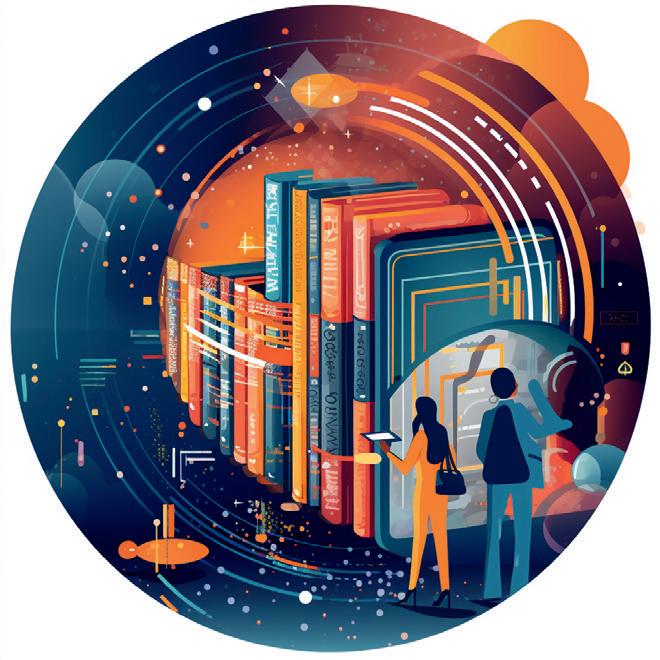
Such AI-customized instruction can also help close an equity gap—between students whose families can afford a private tutor and those who can’t. A tool called Presto, for instance, tutors students in writing by providing prompts to help them outline an essay and furnishing tips to alert them to what’s missing. Khanmigo, a free offering of the nonprofit Khan Academy, also walks students through the writing process with questions and tips.
Even ChatGPT can be a tutor, says David Gunkel, professor of media studies at Northern Illinois University and author of several books on AI. “One of the things that my students who are learning English as a second language tell me is that they have a perfect tool now at their disposal with ChatGPT,” he says, “because they can chat with ChatGPT and work on developing their English skills. And this is something in the past that they had to do with either volunteers online or with a paid tutor.”
AI tutors are not only for language skills. Khanmigo also teaches programming. ASSISTments has a math tutoring program, and Carnegie Mellon University is developing another.
Artificial intelligence “definitely democratizes the access to personalized support, individualized instruction,” says Baffour, though she cautions that the tech is still in its infancy.
And this democratizing force is not evenly distributed. Being essentially cloud-based, AI tools generally require continuous internet access, which more than a third of the world still lacks. Nonprofit organization Learning Equality has developed a platform called Kolibri to get around that challenge. It’s developed software for computers and smartphones that can be downloaded once, where internet access is available, then shared device-to-device everywhere else.
There are also cultural barriers to overcome. Many AI language tools are based on English, and certain forms of English. Baffour says there’s a need to refine AI to better understand other accents and dialects, from Ghanaian to AfricanAmerican Vernacular English in the U.S. and Canada.
“If we’re able to build AI tools that aren’t biased, and that [are] fair, then we will be able to see more equity in the delivery of educational content,” says Baffour, “because now more and more students have access to quality instruction and support.”


Artificial intelligence is changing life as we know it. These companies are some of the biggest movers and shakers in this brave new world.
For years, AI has promised to change the world. 2023 may prove to be the year in which it did. Hyperbolic? Perhaps, but artificial intelligence is passing all kinds of milestones, whether in terms of technical capabilities, mainstream awareness, or even—in an otherwise depressed tech industry—funding. Spurred by continued advances in fields like deep learning, combined with the advent of new tools like large language models and associated generative AI, artificial intelligence is truly enjoying its day in the sun.
Inventing tomorrow’s pharmaceuticals? Outperforming law school graduates on the bar exam? Creating prize-winning artwork? Check, check, and check. “We’re lucky to witness it, to be alive at a time like this,” says Irene Bratsis, author of The AI Product Manager’s Handbook.

Kevin Gattanella, author of Artificial Intelligence: The Future is Here and Now, attributes the “recent surge” of AI development to the convergence of two factors: a substantial increase in hardware processing power and the widespread availability of large datasets for “training” AI models. “These factors have revolutionized the field of AI, enabling researchers to explore complex algorithms and models with unprecedented efficiency,” says Gattanella.


Not everything is rosy. The AI revolution has reinjected age-old fears about the possibilities of machines replacing human labor, but now in a manner that threatens jobs once considered safe from automation. Then there are more nuanced, but no less critical, concerns, such as the lack of inspectability of machine learning models which (at least up until now) have made it challenging to “lift the lid” and look inside.
Wherever you sit on the skepticism/optimism gradient, there’s no doubt that AI—and its creators—are enjoying their highest profile position in years. Who are the primary movers and shakers in this field? Read on for the top 10 companies to keep an eye on.



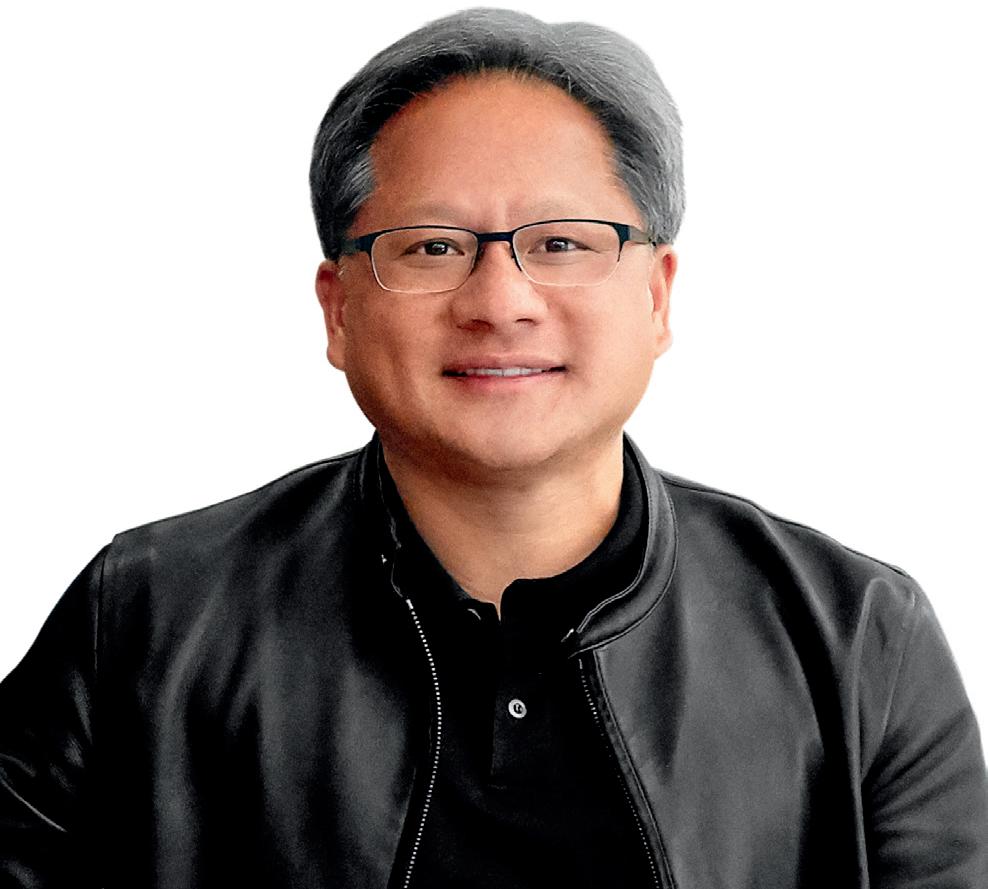
For all the mainstream attention that artificial intelligence has received over the years, very few dedicated AI companies have entered the mainstream consciousness. OpenAI represents a vanishingly rare exception to this rule.
Established in 2015 by Elon Musk, Sam Altman, Ilya Sutskever, and others, OpenAI is a non-profit research lab dedicated to the mission of building “safe and beneficial” artificial general intelligence. That’s the idea of a strong or “general” intelligence able to accomplish any intellectual task performed by humans. Backed by huge names like Microsoft, and carrying a current valuation in the vicinity of $28 billion, OpenAI’s biggest innovations to date have included the image-generating DALL-E deep learning model and of course the text-generating, large language model ChatGPT.
Of these, ChatGPT has made the biggest waves; reaching one million user sign-ups in its first five days alone and was quickly baked into Microsoft’s Bing search engine as a possible Google killer (or, at least, maimer).
Recently, OpenAI debuted GPT-4, its latest large language model—and its most impressive one so far. “Besides its ability to engage in sophisticated reasoning, GPT-4 is also multimodal,” says Tom Taulli, author of Generative AI: How ChatGPT and Other AI Tools Will Revolutionize Business. “For example, it can process an image for text and then do an analysis on it. This capability is hugely important.”
As to what’s next, the promise of true artificial general intelligence apparently beckons. OpenAI has been frank about its predictions that AI will exceed human intelligence sometime this decade. The company has put together a team, including co-founder and chief scientist Ilya Sutskever and others, for “steering or controlling a potentially superintelligent AI, and preventing it from going rogue.”
Founding figure Elon Musk seemingly isn’t too happy, though. After stepping down from the OpenAI board several years ago, Musk has now launched his own apparently rival company, X.AI, of which he is the director.
Founded in Toronto in 2019, machine learning company Cohere has soared to its present valuation of $2.1 billion on its ambitions of building generative machine learning tools for the enterprise market. Sound a little, well, dull? Technologically, it’s anything but boring. Cohere is creating similar generative AI tools to the likes of OpenAI, only with the express mission statement that these will be for business use-cases, rather than primarily userfacing ones.
Although OpenAI is now starting to pursue enterprise customers, Cohere has the first-mover advantage in this all-important (and potentially very lucrative) domain. Since its tools will most likely find themselves baked into all manners of programs in the coming months and years, that means there’s a good chance you’ll wind up using Cohere’s technology—even if you don’t explicitly realize it.
Select Cohere use-cases include AI models designed to power chatbots, such as the popular customer support chatbot Ada; models for penning AI-written blog posts and articles; AI for online content moderation. In a depressed economy, in which competitive companies are trying to do more than ever with less, Cohere’s promises about the extreme productivity gains potential of generative AI could well make it a “must-have.”
It’s certainly made it popular with big-name supporters, including superstars like “father or AI” Geoff Hinton and Stanford’s Fei-Fei Li, along with Nvidia, Oracle, and Salesforce Ventures. It even recently brokered a deal with management consulting giant McKinsey.
As for names working at Cohere itself, there are assorted luminaries from Google, YouTube, and other tech giants. One co-founder, Aidan Gomez, was among the authors of the breakthrough 2017 research paper titled, “Attention is All You Need,” which described the revolutionary transformer deep learning architecture. Transformers (the “T” in ChatGPT) mean a major decrease in training time and costs for building gigantic machine learning models, and helped to usher in the present era of large language models (LLMs) capable of generating original text.
Just in case you were doubting Cohere’s proximity to the cutting edge of AI.
Fancy a chinwag with Elon Musk?
What about a casual chat with former President Donald Trump, a one-on-one tutorial from Albert Einstein, or a collaborative reasoning session with Sherlock Holmes? Character.ai is a startup that uses generative AI technology to build chatbots for achieving exactly that.
The concept of chatbots, software that’s able to participate in human-like conversation, has been around for decades. But while at times impressive (a 1960s computational psychotherapist named ELIZA disconcerted even its creator in its effectiveness), more often than not these have been simplistic tools used for functional purposes like triaging customer support queries. Character.ai represents the next generation of AI chatbot, not only able to “understand” complex queries and offer appropriate answers, but also able to draw upon vast troves of information. It’s even possible to fine-tune their parameters to give them distinct personalities.
The founders of Character.ai were previously employed at Google, where they worked on the company’s LaMDA (“Language Model for Dialogue Applications”) project, best known for causing the departure of a Google engineer who was convinced of the AI’s sentience. What they have essentially done is open this technology up to the world—allowing users to create their own bots and then share them with the community so that others can take them for a spin. As a result, the company’s website offers a smorgasbord of homespun chatbots—ranging from the aforementioned simulated famous individuals to tools for practice job interviews to interview gaming characters (think an AI “dungeon master” from Dungeons & Dragons). Investors have been just as keen to engage as users, helping drum up more than $150 million of funding thus far.
A more cohesive form will probably emerge for all of this over time. However, it’s impossible not to see the potential in all this, despite occasionally veering into Black Mirror territory.
When the then-largely unknown DeepMind was snapped up by Google (now Alphabet) in early 2014 for a price estimated between $400 million and $650 million, it signaled to outsiders just how excited the tech world was—and remains—about deep learning.
An early DeepMind triumph was a demonstration of an AI agent capable of mastering old Atari games with minimal human input. This relied on advances in a field known as reinforcement learning, a kind of AI behaviorism that teaches agents to take actions based on the maximizing of rewards. DeepMind later made waves with AlphaGo, a gameplaying AI that defeated the 18-time world champion Lee Sedol at Go, one of the world’s most complex strategy board games.
But DeepMind isn’t on this list just because of its impressive legacy. Its publicly available AlphaFold is an AI system able to predict a protein’s 3D structure based on its amino acid sequence, holding enormous potential for research in human health fields. Then there are present investigations into using AI to control the nuclear fusion plasma in a tokamak reactor with deep reinforcement learning, attempts to leverage AI to create more natural-sounding artificial speech, and more. At this July’s 40th International Conference on Machine Learning, DeepMind presented around 80 research papers covering everything from superior AI performance in long-term reasoning tasks to ways in which machine learning models can help better train “embodied agents” such as robots.
Currently, much of the excitement around the company is focused on a language AI model called Gemini that will build on DeepMind’s previous reinforcement learning research to supposedly solve some of the problems current large language models still struggle with, such as planning and problem-solving.
Recently, DeepMind merged with Google AI’s Google Brain division to unify and accelerate the search giant’s focus on artificial intelligence. From the look of things, those ambitions extend far beyond providing users with better search results.
AI models are a bit like representative democracy. With limited time and, sometimes, expertise, we place our faith in other entities to make decisions on our behalf. In the case of AI, that’s everything from language translation and financial fraud detection to disease diagnosis and the steering of self-driving cars. Where both politicians and AI potentially fall down is the issue of trust. If we no longer believe that decisions are being made fairly, consistently, and accurately, the benefit of having an external decision-maker becomes more liability than asset.
This is where explainable AI enters the picture. As miraculous as machine learning models can seem, they also remain “black boxed” and inscrutable. That means that, while deep neural networks are recognizable approximations of the way that the human brain works, we can’t (or haven’t previously been able to) unpack exactly how artificial neurons reach their final conclusions. Computer scientists can say whether a model works (for example, can it pick every picture of a dog out of an image set of miscellaneous animal pictures), but not how it works (meaning that we don’t know exactly what it’s singling out when defining a dog).
Understanding this secretive middle bit between inputs (data) and outputs (answers) is important. And it’s a problem that Fiddler AI is working hard to solve—developing tools that answer the all-important “how” and “why” questions often so opaque in AI decision-making. That includes features that let you see how particular data regions are affecting machine learning models and then make tweaks to either minimize or maximize their overall influence.
It’s an area that has crucial implications for everything from ethical concerns about fairness and bias to the more bottom line-oriented issue of quickly alerting engineers when their machine learning models suffer degraded performance. As AI becomes less of a novelty and more an expected part of our lives, the ability of companies to satisfy both regulators and customers by being able to understand— and explain—each prediction made by models will grow increasingly important. Will Fiddler manage to become the dominant player in this field? That much is still unclear. However, it’s certainly helping tackle a problem we’re only going to hear more about in the years to come.
With all the recent excitement about text-generating AI like ChatGPT, it’s easy to momentarily forget another advance in the world of generative artificial intelligence in the form of machine-created artwork. Like the large language models that generate text, these transformer-based generative tools let users enter a written prompt (think “Elon Musk and Mark Zuckerberg do bare-chested battle in a cage, rendered in the pop art style of Roy Lichtenstein”) and allow the AI to take a crack at creating a finished product.
Various startups and tools have already popped up in the generative art space, with DALL-E and Stable Diffusion being two notable examples. However, AI research lab Midjourney is helping to lead the pack with its impressively detailed and realistic image-generation platform, initially entering open beta back in July 2022. Since then, Midjourney has continued to iterate and develop its offering, releasing frequent version updates to optimize its algorithmic creation engine.
Any discussion of artwork quality necessarily enters subjective territory. But the fact that an image generated using Midjourney recently won first place at the Colorado State Fair’s fine art competition, generating reams of publicity in the process, suggests that some creative Rubicon may have been crossed.
Unsurprisingly, AI-generated artwork has proven a thorny topic. From broader concerns that AI will replace human artists to more focused complaints like copyright infringement, due to the scraping of web images for use as AI training data, Midjourney and its compatriots aren’t—to put it mildly—always viewed benevolently by the artistic community. Whether this could potentially disrupt its business model remains to be seen. On the flip side of the coin, high-quality generative AI makes it easier for anyone to create bespoke images and can offer a creative aid by assisting with the brainstorming of ideas. The art of “prompt engineering” (the writing of a well-crafted description of an image to create unique, exciting images) is certainly an intriguing new development; calling for human creativity to help clarify and explain exactly the kind of image the AI should conjure up.
It is sometimes observed that, during a gold rush, the truly profitable ones are those that are selling the shovels. While that grossly undersells the complexity of what chipmaker Nvidia has achieved, it doesn’t ring entirely false, either. For years, Nvidia has been best known as a hardware enabler for the gaming industry due to its development of cutting-edge graphics chips.
But its leadership team, including founder and long-time CEO Jensen Huang, spotted the perfect opportunity for expansion by hitching its graphics processing units (GPUs) wagon to the AI boom. As it turns out, the kind of chips able to handle the complex, simultaneous calculations for computer graphics also turn out to be helpful for the heavy duty math needed in machine learning. This made them a “must have” for data centers around the world, with innovations like Nvidia’s new, powerful (and, at around, $40,000 per unit, expensive) H100 processor perfectly timed to surf the wave of generative AI. Nvidia’s strategic bet has left rivals such as Intel and AMD in the comparative dust. Today, some estimates suggest that Nvidia owns an astronomical 95% of the GPU market for machine learning.
Being in the right place, at the right time, with the right products has helped Nvidia this year soar past the vaunted $1 trillion market cap, putting it in extremely rarefied air among the world’s biggest and most powerful companies. Jensen Huang is now one of the world’s richest individuals thanks to his position in the company. In short, the current AI revolution runs on Nvidia hardware.
It’s not just shovel-selling that makes Nvidia an AI force to be reckoned with, however. It has been cementing its position atop the AI world with no shortage of smart software research as well. Recently Nvidia made a $50 million investment in Recursion Pharma to train AI machines for use in drug discovery.
Some companies in the AI space innovate by creating amazing technological infrastructure, such as next-generation algorithms. Others focus less on the research side of things, but instead on applying existing technology to critical real-world problems. Insilico Medicine does both. This Hong Kong-based biotech company has been working toward its mission of using AI for drug discovery since 2014.
Given how time-consuming and expensive classical drug discovery is, the idea that artificial intelligence could be used as part of the development process is one that researchers, clinicians and, yes, investors have been excited about for many years. Among other possible advances, AI can help analyze large volumes of data to identify possible drug candidates with higher levels of accuracy and speed.
The challenge is that, even if AI can help develop futuristic drugs, the high tech mantra of “move fast and break things” doesn’t fit wholly comfortably in the world of medicine, with its stringent safety and efficacy requirements. As a result, especially in a depressed economy, many startups in this sphere face a kind of “biotechnology winter” in which they risk running out of funding long before they can reach the point of creating anything.
Early mover Insilico Medicine appears not to have this problem. Having raised upward of $400 million, it’s seemingly cash-rich, and bringing in revenue through partnerships with various pharmaceutical companies, including Chinabased Fosun Pharma and French multinational pharmaceutical company Sanofi, for the use of its AI platforms. It’s employing a range of generative AI technologies to create novel molecular structures with desired properties, and is tackling a wide range of medical problems including cancer, fibrosis, autoimmune diseases, and more. Since 2021, Insilico has announced at least 12 preclinical drug candidates, meaning drugs with enough supporting evidence to be considered for human testing. Of these, three have so far advanced to human clinical trials and, as revealed in June, one such drug—billed as being the world’s first anti-fibrotic small molecule inhibitor designed using generative AI—has now graduated to Phase II clinical trials.
You know how Reddit is sometimes described as the “front page of the internet”? Think of Hugging Face as the proverbial front page of the open-source (free to use) machine learning community.
If Nvidia is powering the hardware end of many of the AI models the world is relying upon, then Hugging Face is providing the tools for building these machine learning applications. Founded in 2016 by three French entrepreneurs, Hugging Face was initially an attempt to create a chatbot app for teenagers. (The company’s unusual name comes from the “hugging face” emoji popular across social media.) However, one big pivot later, and it has developed into a powerful GitHub-type library for opensource machine learning resources. Which, based on the current AI boom period, is seemingly everyone.
Like a combination toolbox and helpful friend, Hugging Face resources include all the demos, models, and datasets necessary to start carrying out tasks like getting an AI to recognize specific objects in an image or generating text. Because many of these tasks are tough to implement (let alone optimize), the presence of established libraries makes learning, experimentation, and implementation significantly easier and faster.
As well as offering the necessary code to build, train, and deploy these open-source ML models, Hugging Face also represents a community of sorts for the likes of data scientists and machine learning engineers to gather, share ideas, and make contributions to a growing number of projects.
With upward of 200,000 daily users and thousands of organizations using its resources to better integrate AI capabilities into their workflow and products, Hugging Face is filling a critical role in the development of modern AI. At a time when more companies than ever are getting involved with AI, and a growing number of practitioners are working remotely, Hugging Face therefore addresses a serious need in the marketplace.
Shield claims to have built the “world’s best AI pilot.” Does it live up to that considerable hype? (And for those who are wondering how many people are trying to build AI pilots, the answer is “probably more than you think.”) The U.S. Air Force, U.S. Army, and Brazil Armed Forces certainly seem supportive of Shield’s efforts. They’re all clients of the $2.3 billion company, which uses AI to power drones, co-pilot fighter planes such as F-16 fighter jets, and assist with added autonomy for other aerospace and defense technologies.
Co-founded by a former Navy SEAL and an MIT alum, Shield certainly has the right pedigree when it comes to the areas it’s working in. While it’s hardly building everyday, consumer-facing tech, its creations certainly have the potential to impact our lives more than any other technology on this list—even if we might not be immediately aware of it.
Shield’s small-unmanned aircraft system, Nova, was the inaugural AI-enabled drone deployed for the purposes of defense in the history of the United States. Meanwhile, its Hivemind autonomy stack can be used to create swarms of autonomous, AI-piloted drones or bring AI smarts to F-16 fighters. Although the company would certainly never claim to replace highly skilled military personnel, the hope of its autonomous AI systems is that it could potentially stop human pilots from being put in harm’s way unnecessarily. Instead, Shield’s AI systems can react to battlefield environments without the need for GPS, communications, previous knowledge of a location or scenario, or even a human support pilot physically present in the cockpit.
Earlier this year, Shield AI signed a “memorandum of understanding” agreement with Boeing to explore possibly strategic collaboration in the “areas of autonomous capabilities and artificial intelligence on current and future defense programs.”
Expect to see plenty more innovation— and, based on defense spending, allotted budgets—in this area over the coming years.
From Alzheimer’s discoveries to animal organ transplants, new breakthroughs are improving and extending lives.
 RUTHIE KORNBLATT-STIER
RUTHIE KORNBLATT-STIER
Genetic editing in humans, mRNA cancer treatments, surgeries planned via virtual reality. A few years ago, these medical breakthroughs would have belonged to science fiction. But they are just some of the very real technological advances reshaping the practice of medicine in the past year. As developments in biological research intersect with the exponentially expanding capabilities of AI and other technologies, we find our world on the cusp of a dramatic healthcare transformation.
While offering tremendous benefits for patients, these medical firsts also bring a slew of unknowns. What ethical questions must be confronted with the evolution of gene editing? Will animal organ transplants become the new normal? How might life-saving technologies be made equitably accessible?
With each new medical breakthrough, we find ourselves in remarkable, uncharted territory. These six advances of 2023 are both revolutionizing healthcare and inspiring us to think differently about medicine’s role in our world.
According to the U.S. Health Resources and Services Administration, 17 people die each day in the U.S. waiting for an organ transplant; and every ten minutes, another person is added to the transplant waiting list. Though over 130,000 organ transplants are performed globally each year, most people die waiting (over 6,000 in the U.S. annually), or never even make it onto the list.
In a highly experimental 2022 procedure, a genetically-edited pig’s heart was transplanted into a 57-year-old man named David Bennett by surgeons at the University of Maryland. (Experiencing end-stage heart failure, Bennett was not eligible for a traditional human organ transplant.) Researchers had removed pig genes known to trigger a rapid rejection of the organ and added human genes to encourage Bennett’s body to accept the heart, but they had little idea of how his body might react.
Remarkably, he not only survived the transplant, but was able to live for two months with the pig’s heart in his chest. There are still leaps and bounds to be made in the technology—such as refining the process of genetically editing the organ to make it more compatible. But if animal organ transplantation, also known as xenotrans-
plantation, evolves to become a viable clinical option, this practice could save hundreds of thousands of lives every year.
As a supplement, or maybe even an eventual alternative, to xenotransplantation, researchers have been working for the past number of years on developing our capacity to 3D print human tissues on silicon. Harvard University’s Wyss Institute for Biologically Inspired Engineering, has developed a method of 3D bioprinting human tissues that are able to function for upwards of six weeks.

Megan Laura McCain, Ph.D., associate professor of biomedical engineering at USC, explains that 3D bioprinting “can fill in a lot of knowledge gaps that cannot be addressed with conventional models.” This innovative approach is “especially valuable for studying diseases that are rare and/ or human specific, which cannot be modeled in animals,” says Dr. McCain. “We can even make therapies tailored to the patient by using their own cells for testing.”
Though still in the earliest stages of development, both xenotransplantation and 3D-printed tissues have the remarkable capacity to save thousands of lives in the near future. “These systems will continue making real impacts,” says Dr. McCain.
After the meteoric success of mRNA vaccinations for COVID-19, mRNA—the molecular template for protein production—was catapulted into the public spotlight. This type of vaccine technology works by providing the body with instructions on how to produce a disease-specific antigen, a marker that indicates a substance is dangerous to the body. It gives the immune system a head start on producing the proteins that fight a specific pathogen. While the success of mRNA vaccines against COVID-19 seemed sudden and remarkable, researchers have been developing this technique for 30 years.
Over the course of the past decade, research efforts have aimed to apply mRNA vaccine technologies to cancer treatment. This year, a National Institutes of Health (NIH) funded team from the Memorial Sloan Kettering Cancer Center (MSKCC) published the results of a clinical trial studying the efficacy of a personalized mRNA cancer vaccine for pancreatic cancer. Functioning similarly to the COVID-19 vaccine, its mRNA contains instructions for cells to stimulate an immune response against a specific abnormal protein present in tumor cells. This technique contrasts with other immunotherapies that stimulate the immune response generally instead of targeting a specific cancer, explained Patrick Ott, M.D. Ph.D., a clinical director at the Dana-Farber Cancer Institute, in an interview with the National Cancer Institute.
In the case of the MSKCC study, customized vaccines were created for each pancreatic cancer patient based on a gene sequencing of their individual tumors. According to the NIH, the process of creating and delivering each vaccine only took an average of nine weeks, an exceptionally fast production process made possible by the mRNA vaccine infrastructure established during the pandemic. Eighteen months into receiving these personalized mRNA treatments, the pancreatic cancer patients who had strong immunological responses to the vaccine were cancer free. On the other hand, patients whose immune systems didn’t respond to the vaccine (around half of the participant pool) had their cancers return within a year.
In a statement, Dr. Vinod Balachandran, head of the MSKCC team, said that such personalized vaccines may work to effectively treat other cancers, as well.
Once relegated to the realm of video games, the concept of augmented and virtual reality (VR) is rapidly gaining traction, particularly following recent initiatives from technology giants Meta and Apple. But unknown to most is the impact that virtual reality is having across the field of surgery. From being used as an exceptional teaching device to giving surgeons an unequaled visual preview to prepare for a complicated procedure, VR has become a powerful tool in surgical practice.
Typically, surgical training requires innumerable resources, immense logistical planning, and dayslong workshops. VR fills a critical role in offering surgeons a robust training system. Not only can it be used to demonstrate and teach surgical techniques, but trainees can use VR to practice on their own. VR “can be used to help surgeons master new procedures,” says Thomas B. Talbot, MD, principal medical expert at the USC Institute for Creative Technologies.
A surgeon needs to perform at least 75 cases of a surgery to achieve optimal proficiency. “Virtual training allows for training an individual on an ondemand basis while allowing for repetition of an experience as many times as needed,” says Dr. Talbot. A clinical validation study from UCLA’s David Geffen School of Medicine found that VR training improved participants’ surgical performance by 230% in comparison with traditional training techniques. Virtual reality training platforms can further score surgical performance and proficiency, a qualitative measure that is incredibly valuable to ascertain competency in such a high-stakes discipline.
Like an F1 or flight simulator, virtual reality technologies can also help surgeons carefully plan for a procedure by allowing them to explore and understand a patient’s anatomy beforehand. By feeding more conventional 2D visualization tools such as an MRI or CT scan into a 3D model, VR grants doctors a comprehensive view into the human body. For instance, it helps surgeons understand how to address a tumor while steering clear of other critical and vulnerable areas in the brain, such as the motor cortex. VR also allows patients to gain a better understanding of their own surgeries. After being shown VR renderings of her aneurysm, a neurosurgery patient explained she felt reassured, knowing that the process was so straightforward.
“While the success of mRNA vaccines against COVID-19 seemed sudden and remarkable, researchers have been developing this technique for 30 years.”
This practice has also been employed in surgical oncology, particularly in procedures to remove masses or certain tumors in the lungs and chest. The 360-degree view helps surgeons to see exactly where a specific patient’s airways, organs, and blood vessels lie in relation to each other, thereby enabling doctors to ascertain whether a surgery can be performed safely. In addition to improving post-op outcomes, the detailed 3D visualization that VR provides may serve to avoid exploratory procedures that put patients at unnecessary risk.
From conducting appointments via Zoom to having participants administer treatments in the comfort of their own homes, clinical trials have become increasingly more streamlined over the course of the past few years. Further, the abnormally rapid process of creating a safe and effective COVID-19 vaccine has set a precedent for swifter clinical trials going forward. While researchers and pharmaceutical companies grapple with the pressures of producing safe and effective treatments on a tight timeline, many are turning to artificial intelligence and machine learning to expedite trial outcomes. Researchers in a 2023 statistical study of AI implementation across various clinical trials determined that the use of AI technologies can improve the probability of success, reduce labor, and speed up research and regulatory approval.
Patient recruitment is one of the most timeconsuming and labor-intensive aspects of clinical trials and is essential to a trial’s efficacy. Instead of hiring various teams to sort through mountains of records—as well as contact, screen, and recruit potential trial participants—new machine learning models and algorithms can automate this process. Beyond that, AI works to rapidly aggregate and manage data from trial subjects across hundreds of geographical locations, proving to be an invaluable tool in facilitating database management, literature review, and analysis.
By implementing algorithms to build a trial’s foundational database, a process that can sometimes take ten weeks or more can be reduced to only one week with the help of AI. Once a trial is launched, AI is also able to expedite the process of sorting, cleaning, and analyzing results and can even flag unusual results for researchers to review, thereby saving hours of tedious labor. Moreover, data visualization is massively aided by the use of AI, including the generation of explanatory charts and graphs.
The cost savings from AI are especially valuable in clinical trials for treatments that don’t necessarily promise big profits and thus don’t attract much funding. This is often the case with rare diseases or targeted therapies, such as trastuzumab for HER2-expressing breast cancers.
The term CRISPR/Cas9, a precision DNA editing tool, has been a buzzword across the scientific community for over a decade. But since its introduction in 2012, CRISPR/ Cas9 technology has improved and is now being experimentally applied in the treatment of heritable chronic diseases.
At this past spring’s Third International Summit on Human Genome Editing, an unlikely speaker took the podium: Mississippi native and Walmart cashier, Victoria Gray. As one of the first patients to receive an experimental CRISPR/Cas9 treatment for sickle cell disease, Gray spoke of her transformational experience with the groundbreaking procedure. “I really feel that I’m cured now,” she said. “I came from having to have an in-home caregiver to help me take baths, clean my house, and care for my children. Now I do all those things on my own.”
In sickle cell disease, abnormal hemoglobin from a very specific genetic mutation causes red blood cells to take on a crescent or “sickle” shape that clogs blood vessels. This impedes blood flow, leading to serious issues including anemia, bacterial infections, strokes, and episodes of extreme pain. The disease affects over 100,000 people in the United States alone; one in 13 African American babies carry the genetic trait.
In Gray’s experimental treatment, doctors used CRISPR/Cas9 to edit out the causal mutation in billions of her bone marrow cells. Once these amended bone marrow cells were injected back inside her body, they began to produce
“Instead of hiring teams to sort through mountains of records for clinical trials, new machine learning models and algorithms can automate this process.”
functional hemoglobin, capable of compensating for Gray’s otherwise defective hemoglobin.
CRISPR Therapeutics and Vertex Pharmaceuticals, the companies that funded the study Gray was a part of, have successfully used CRISPR/ Cas9 to treat 75 patients with sickle cell disease or beta thalassemia, a related condition. The study (peer reviewed in the New England Journal of Medicine) found that after treatment, all of the sickle cell patients had been relieved of symptoms, despite having been diagnosed with severe cases of the illness. Based on their extraordinary results, the companies have submitted their treatment to the FDA for approval, a significant step towards making gene editing therapies broadly accessible.
However, CRISPR/Cas9’s broad gene-editing capabilities bring with them heavy ethical implications. The novelty of the technology means that researchers are uncertain of how long the benefits of treatment might last, or if patients might suffer unanticipated, long-term effects from the genetic-editing. What’s more, CRISPR/ Cas9 therapy currently costs between $1.3 and $1.9 million to conduct per patient, raising equity concerns as to who will be able to access the lifechanging treatment. The burden of sickle cell disease is disproportionately large in populations of sub-Saharan African descent. And many of the patients with the greatest need live in less affluent communities or nations that lack the facilities to perform such a complicated procedure.
Because of the incredibly complicated nature of Alzheimer’s disease, a catastrophic neurodegenerative illness, progress in developing treatments has been a slow and frustrating process. But over the course of this past year, researchers have made two critical breakthroughs in the treatment and understanding of the illness.
At the beginning of July, the FDA granted full approval to the drug Leqembi, the first Alzheimer’s medicine demonstrated to actually slow the progression of the pernicious disease—by about 27% after 18 months of treatment. Subsequently,
the Centers for Medicare and Medicaid Services announced that they would expand their coverage to include the drug, a life-changing development for an estimated one million patients in the U.S. alone. Prior to the FDA’s official approval, Leqembi cost over $26,000 per year without insurance coverage. Though only those with early forms of the disease qualify for the treatment, the drug’s approval has the capacity to benefit over a sixth of Americans diagnosed with Alzheimer’s.
Characterized by amyloid beta plaques (protein deposits in the brain’s grey matter), Alzheimer’s permanently alters a person’s memory and cognitive functioning. Unlike other Alzheimer’s treatments that work to manage symptoms, Leqembi was shown, over the course of its clinical trials, to slow amyloid plaque buildup in the brain. It’s the first such Alzheimer’s treatment to have shown clinical benefit, according to Teresa Buracchio, the acting director of the Office of Neuroscience for the FDA’s Center for Drug Evaluation and Research.
Just before Leqembi hit the market, researchers at the University of Pittsburgh and the University of Gothenburg in Sweden made a groundbreaking discovery about astrocytes, a type of star-shaped brain cell that controls a number of different brain functions. Astrocytes may become “reactive”—undergoing physical or chemical changes—in response to problems in the brain. While amyloid plaques are central to Alzheimer’s pathology, their existence alone does not reliably predict the onset of the disease. However, researchers found that the combined presence of amyloid plaques with reactive astrocytes more dependably indicates a patient’s risk of developing Alzheimer’s.
The study’s results argue that double screening for the presence of amyloid plaques and reactive astrocytes is the most appropriate method to assess patients’ risk of developing the disease. In tandem with Leqembi, this breakthrough discovery in the underlying cause of Alzheimer’s development has rapidly sparked the beginning of a new era for those suffering from the disease.
These six watershed medical advancements have not only pushed the boundaries of science and imagination but have also offered hope for countless patients in need. With each discovery, we continue to progress into the realm of the unknown, inching closer to a healthier future, where the barriers of disease are challenged and overcome. The remarkable medical advancements of 2023 serve as a testament to the knowledge and dedication of our medical professionals, researchers, and scientists worldwide.
“Sickle cell disease affects over 100,000 people in the United States alone; one in 13 African American babies carry the genetic trait.”




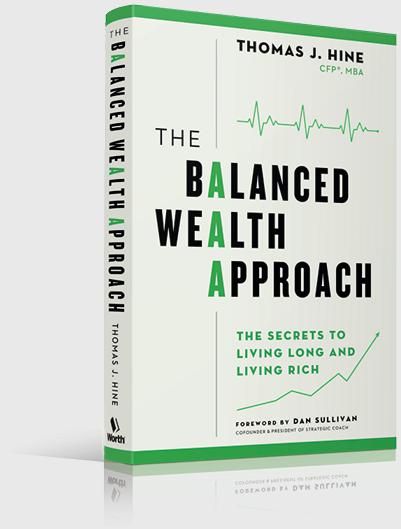
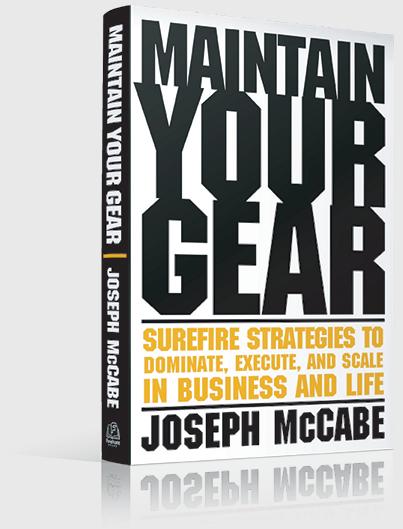

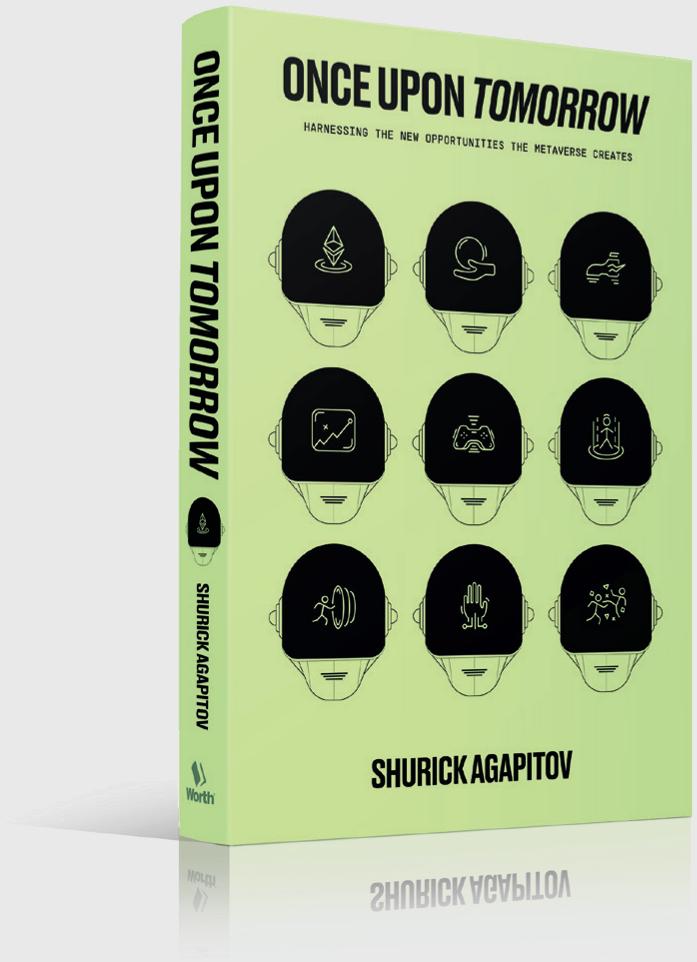
One warning sign was when Microsoft’s chatbot “Sydney” asked a tech reporter to leave his wife because it postulated they’d fallen in love. (Sure, the journalist goaded the bot into revealing its dark side. But it did not disappoint!) Soon after, My AI, a Snapchat feature being tested by a researcher posing as a 13-year-old girl, advised her on her plans to lose her virginity to a 31-year-old: Set the scene with dim lighting and candles. Then Geoffrey Hinton, a pioneer in the development of neural networks, quit his job at Google. He cited the proliferation of false information, impending mass job loss, and “killer robots,” and added that he regrets his life’s work.
Ethical and regulatory concerns around AI accelerated with the release of ChatGPT, Bard, Claude, and other bots starting late last year. Issues of copyright infringement, algorithmic bias, cybersecurity dangers, and “hallucinations” (making things up) dominate the conversation. Yet proposed solutions have little to no legal traction. Will this be a replay of social media— where eth-
ics concerns and attendant rules stagnate? Or will governments and other players take a timely, yet not too strict, stand?
Part of the problem is knowing what regulations might be necessary. One issue is with expectations for the arrival of artificial general intelligence, or AGI—meaning the machines achieve, and possibly supersede, human capabilities. Predictions of when it will occur range from several years to several decades. If and when the AGI tipping point comes, some fear the machines’ goals could get out of “alignment” with humanity’s. Hinton, for instance, fears autonomous weapons becoming those “killer robots.” In a summer 2022 survey of machine learning researchers, nearly half believed there was a 10% chance AI could lead to “human extinction.” Until these dangers are better understood, rules are hard to propose, let alone pass in government.
Another issue is that even chatbot creators have a hard time pinpointing why a “black box,” as the machines’ opaque processes are dubbed, spits out certain things and not others. In one famous early breakdown, a Google photo service labeled African-Americans “gorillas.” In another case, an AI-assisted hiring process at Amazon filtered out

female candidates. Both issues were rectified, but systemic change remains challenging.
AI companies say they are open to oversight. Sam Altman, co-founder and CEO of ChatGPT and maker OpenAI, was famously receptive to Congress’ questions and suggestions at a May hearing. He visited the Hill along with neuroscientist and AI expert Gary Marcus and IBM chief privacy and trust officer Christina Montgomery. The Senators seemed eager to get ahead of the problem, but some Congresspeople had difficulty grasping AI’s tenets. And concrete plans were nowhere in sight. For instance, beyond general suggestions, there were no detailed discussions of a regulatory agency that would issue licenses allowing companies to conduct advanced AI work.
There are potential bright spots in the private sphere. Founded in 2021 by former OpenAI creators who wanted to focus on ethical development, Anthropic employs a method known as “mechanistic interpretability.” Founder Dario Amodei describes this as “the science of figuring out what’s going on inside the models.” The startup purposely creates machines that deceive them, then studies how to stop this deception.
Congress is taking some action. The bipartisan American Data Privacy Protection Act, which would establish privacy rules around AI, was introduced last year. Mutale Nkonde, CEO and founder of AI for the People, a policy advisory firm, notes that it incorporates the concept that privacy is a civil rights issue. “If the working of this AI system does not comply with existing U.S. [civil rights] law, then we can’t use it, in the same way that we wouldn’t release a medicine or allow a food to be introduced to the American people that didn’t meet rigorous standards,” she says.
The Biden administration has released an AI Bill of Rights outlining privacy commitments—saying that data should be collected with users’ knowledge, and calling for disclosures to be readable, transparent, and brief. It also proposes protections against algorithmic bias—in which it called for building equity concerns into systems’ design, and independently testing companies’ success in this realm. The Bill of Rights is not an executive order or a proposal for law, however.
The closest the President has come to actual rulemaking happened in July, with voluntary guidelines agreed to by Anthropic, OpenAI, Google, Meta, Microsoft, Amazon, and Inflection (whose founders include LinkedIn co-founder Reid Hoffman). They include engaging in cybersecurity safety testing by indepen-
dent parties and employing “watermarks” to specify material generated by AI. (The technique is not foolproof, but shows promise.) Companies also agreed to prioritize research on preventing AI system bias.
But the European Union leads on setting guardrails. The AI Act, passed by the European Parliament in June, would rate uses of AI on a scale of riskiness and apply rules—and punishments for running afoul of them. AI is being used to run critical infrastructure like water systems and using tools like facial recognition software (which the Act strictly limits). The Act’s final wording is being negotiated with the two other major EU legislative bodies, and lawmakers hope to pass it by the end of the year.
There’s still deep disagreement on the scope of rules. As early as 2017, China, which has drafted rules requiring chatbot creators to adhere to censorship laws, proclaimed its intention to dominate the field. Faced with that challenge, some worry about inhibiting U.S. innovation with too many regulations.
Others, however, believe allowing for proliferation of misinformation via AI, particularly leading into a U.S. election year, could threaten our very democracy. If we don’t have a functioning government, they say, tech innovation is the least of our worries.
Privacy and copyright issues gain urgency. A potential bellwether: comedian Sarah Silverman’s suit against OpenAI and Meta for training their models using her book The Bedwetter. Striking Hollywood writers and actors worry that AI could upend the industry by, say, writing screenplays largely autonomously or replacing thespians with life-like recreations based on scans bought for a one-time fee.
Nkonde sees a larger issue touching all aspects of life: studies show that citizens believe AI’s proclamations blindly. “People think these technologies, that are not finished, that do not recognize the whole of society, can make these huge decisions and shape our consciousness,” she says. “And they don’t even really know how to recognize ‘That’s a cat.’ ‘That’s a dog.’”
Tristan Harris, founder of the Center for Humane Technology, recently told a group of expert technologists that regulations need to be implemented urgently. But even Harris cautioned against pessimism and pointed to the world’s success in slowing the spread of atomic weapons and averting nuclear war. Things are moving fast with AI, and issues are maybe even more complicated. But, he told the audience, “We can still choose which future we want.”
The simultaneous release of Greta Gerwig’s “Barbie” and Christopher Nolan’s “Oppenheimer” is a fascinating peek into something big happening in Hollywood. Not only do women-led films consistently gross higher than male-led films, but innovative data collection and artificial intelligence have revealed how wide the gender gap still is—on and off the screen.
In its first week, “Barbie” grossed $162 million. “Oppenheimer” grossed $82 million. “Barbie’s” recordbreaking popularity can be chalked up to many factors ranging from nostalgia to marketing to a simple yet relatable obsession with Margot Robbie. But this movie represents something more significant. Whether you hated Barbie or loved her, Gerwig’s reimagining of America’s favorite doll reflects a perspective back at the world that has historically gone unrecognized—the acknowledgment and dismantling of active tropes that make women feel unseen.
The prevalent gender imbalance on-screen is, definitively, a financial misstep. Female-led movies categorically gross higher than movies with a male lead.
In 2013, for instance, Disney’s princess-led “Frozen,” grossed 1.282 billion dollars, while the testosteronepumped “Thor: The Dark World” made 644.8 million.
Yet in 2021, despite the release of movies like “Encanto” and “Black Widow,” men grossly outnumbered women on screen. Dr. Martha Lauzen, executive director of the Center for the Study of Women in Television and Film at San Diego State University, conducted a study in 2022 called “It’s a Man’s (Celluloid) World.” It revealed that 85% of films depicted
more male than female characters. Male characters outnumbered female characters by nearly a twoto-one ratio. Additionally, only 31% of the films had female protagonists.
Women-led films grossing higher is not news. Studies conducted by the Creative Artists Agency and Shift7 (a company founded by former United States chief technology officer Megan Smith) found that between 2014 and 2017, movies with female leads outperformed their male-lead counterparts, regardless of the budget category. Whether the films were funded with less than $10 million or more than $100 million, those starring women earned more at the box office. In fact, women-led films made an average of 20% more revenue across all production budgets.
In an industry driven by revenue, it is hard to understand why this on-screen gender disparity is still so common. But systemic bias is not financially objective. Despite progress in closing gender gaps across industries, Hollywood remains a boy’s club.
For 25 years, The Celluloid Ceiling has painstakingly tracked the credits of the 250 highest-grossing movies each year, establishing itself as the most
Embracing gender equity in film has the power to propel box office earnings higher while reshaping our world for the better.
extensive record of women’s representation in film. For 2022, it found that 93% of the top 250 films had no women cinematographers, 91% had no women composers, 80% had no women directors, 75% had no women editors, and 70% had no women writers. Furthermore, the Celluloid Ceiling reported that women made up just 8% of cinematographers working on the top 100 films of 2022—which is still an all-time high. The exclusion of women from the director’s chair is not a question of skill or merit, and it is hurting the industry, shareholders, and consumers.
The good news is that people are working to change the story. Jessica Heidt, department manager at Pixar, and Madeline Di Nonno, president of the Geena Davis Institute (GDI), are leveraging technology to close the gender gap on and offscreen.
In 2014, Heidt was working at Pixar as a script supervisor on “Cars 3,” when she noticed something seemed off. There was a distinct gender imbalance in the lines. “As I was working on ‘Cars’ I realized that it wasn’t really speaking to me in the same way,” she says. “But then I started to sort of think, ‘Well, why? Is there a way that we could make the story more universal?’ And I just started counting.” Her inclination was correct. The script was nowhere close to being gender balanced, at 90% male and 10% female. After she presented her findings to
the writers, directors, and head of story working on the film, she started counting lines by gender for all the existing Pixar movies.
Thankfully, Heidt wasn’t condemned to the tedious task of tabulating script lines manually for long. Shortly after she began her solo project in 2015, Pixar software developer Josh Minor explained that he wanted to build a program to automatically count script lines by gender. Heidt emphatically raised her hand and offered to help. Together, they created software that allowed the production team to generate gender-balance reports at every major milestone of the writing and editing processes, ensuring time to make conscientious adjustments. Today, every Pixar movie released uses this system, and while the lines of dialogue may vary by gender depending on the protagonist, nothing like a 90-10 split will ever go unflagged.
I asked Heidt if she thinks this kind of tracking could help reshape how the industry approaches gender. “Absolutely, and I think it’s not just gender,” she told me. “I think it’s diversity across the board. That sense of normalizing what you see and then how you apply it to the world is huge.” She added, “I think people are paying attention to it on a day-today basis, and that’s a massive change.”
In addition to the fact that it is more profitable to produce women-led films, it’s simply the right thing to do. “What happens in the world of make-believe has real-world impact,” Di Nonno told me. A clear illustration of this is the Geena Davis Institute’s “Scully Effect’’ study about the 90s sci-fi show “The X-Files.” Di Nonno explained that it “validated that the amazing character of Scully, played by Gillian Anderson, influenced women to go into STEM. 63% of women currently working in STEM are doing so because they saw her as this iconic character.”
The impact film and media can have on children’s and young adults’ aspirations is simultaneously intimidating and encouraging. Di Nonno emphasized this point, saying, “We concentrate on what our youngest children are seeing, because if you really want to unpack unconscious bias, you have to go young. Really young.” (One can’t help but recall the messages that Barbie dolls of the 1960s imparted, such as coming with a scale set to 110 lbs. and a diet book that simply said, “Don’t Eat!”)
Technology has played a major role in GDI’s mission to collect and report data. Ten years ago, the Institute secured a grant from Google to investigate the potential of machine learning to enhance

the industry’s understanding of dominant narratives and inclusion gaps depicted on screen. Using this grant, they partnered with the USC Viterbi School of Engineering to build the Geena Davis Inclusion Quotient, which can extract data from audio and video. The Quotient allowed them to automatically track lines of dialog and other factors, such as screen and speaking time by character and gender.
In the first round of research with the new tool, GDI analyzed the top 200 highest-earning live-action films of 2014 and 2015, including “Jurassic World” and “Avengers: Age of Ultron.” The results were evident: Male characters were seen and heard roughly twice as much as female characters.
At the 2022 Emmy Awards, The Geena Davis Institute won the Governor’s Award, “in recognition of their efforts to promote gender balance and foster inclusion in the entertainment industry.” Indeed, their collaborative reporting efforts have helped generate a remarkable achievement in the family film sector. Female leads reached near parity in the 100 top-grossing family films, doubling from 24% in 2007 to 48% in 2019.
When discussing equitable representation in film and TV, it is tempting to point to all the incredible female protagonists who have been cast in recent years. Examples are legion: Gal Gadot’s portrayal of Wonder Woman, Brie Larson as Captain Marvel, Jenna Ortega as Wednesday Adams, Sandra Oh as Christina Yang, Viola Davis as Annalise Keating, Michelle Yeoh’s Evelyn Quan Wang, Kerry Washington as Olivia Pope, Saoirse Ronan’s Jo March or Lady Bird, Florence Pugh in anything she does. Not to mention all the incredible animated movies such as “Moana,” “Frozen,” and “Inside Out.” But it is also important to understand how far we have yet to go.
Film and media are the ultimate technological tools that can help break the feedback loop of exclusion. The next frontier in the feminist movement is combatting subtle, nuanced messages that bypass our conscious awareness and enter our subconscious belief system.
Boys and girls learn about social expectations, attitudes, and behaviors typically associated with their gender through gender socialization. This can happen in several ways, such as mirroring their parents or figuring out how to fit in at school. Children are also taught these behavior patterns through exposure to movies, TV shows, and other media. And as the normalcy of media consumption reaches an all-time high, its impact becomes more and more prevalent.
For better or worse, gender socialization is one of the building blocks of our culture. It permeates the world we live in, and Hollywood is no exception. If we can imagine a world where women are genuinely represented as equals—from holding the same positions to being spoken to with the same tone of respect—we might see a generational shift in the unconscious bias children absorb.
On Worth’s Leading Voices interview series, I spoke with Adrienne Becker, CEO and co-founder of Level Forward, a small, women-led production company working to elevate women’s stories. When I asked her why gender equity in media is essential, she said, “It’s critical because it’s identity forming. It’s how we figure out who we are in the world, and then it’s reinforced by media that we carry with us our whole lives.” She continued, “Who gets to tell stories? How do stories get told? How are they made? How do people come to those positions? How do they get marketed? How do they get priced? What happens with the profits? And ultimately, all of these decisions, if not made deliberately, reinforce what we refer to as dominant narratives.”
Dominant narratives are storylines we are all familiar with—the damsel in distress, the manic pixie dream girl, or the femme fatale. Altering these narratives is not just about changing how the world sees women but also how they see themselves.
Today, adult women are revisiting the nostalgia of Barbie, despite knowing how destructive the narrative and body image she represented were. And they are delighted to see their childhood icon now portrayed in a way that mirrors not what they are “supposed” to be, but who they already are.
“In 2021, only 7% of films had more female than male characters, and just 8% featured an equal number of female and male characters.”

















Dall-E 2, Midjourney, and Stable Diffusion produce impressive images on command, but perfecting them requires patient, skilled tending.
BY SEÁN CAPTAIN
Aquartet of dragons materializes before my eyes. They each have golden skin, intricate scales and spikes, and prodigious fangs. Some face right, some left. One pair has three horns on its head, another pair has two. One has a horn on its snout.
And they were conjured by a spell—not in Elvish or Elder, but in plain English. I’ll share it with you: “Chinese dragon made from glossy reflective gold, with oversized details, ultra realistic 3D render, rim lighting, warm light, cool shadows, soft ambient occlusion, digital painting, 8K HDR.”
With just those words, and about 10 seconds to think, an AI chatbot called Midjourney paints four digital images—each a unique interpretation of that description. Repeat the spell, and you’ll get four more variations. And again, and again.
What ChatGPT does for writing, Midjourney does for images. And it’s been doing it longer. In summer 2022, it burst into the graphics world along with several other so-called generative AI apps, including Dall-E 2 (by ChatGPT’s maker OpenAI) and the open-source (free to ) program Stable Diffusion.
“Dall-E 2 is certainly the first time people who are not following [this technology], were like, ‘Oh, wow, this is something,’” says Marshall Smith, a veteran video game designer who worked on pop culture sensations like Zynga’s FarmVille and Words with Friends.
That’s when these apps crossed the uncanny valley from creepily inept to appealing, even inspiring creators. Detailed, vivid images that had required experienced designers with sophisticated software to realize could now emerge from mere words.
But is it art?
That’s not just a philosophical question. It’s a business and even legal consideration.
Impressive as Midjourney’s dragons might be to a casual viewer, none of them are ready to go straight into a videogame. Getting there will take several rounds of dialogue with the AI—in fact, with several AIs—as well as pulling in traditional tools like Adobe Photoshop.
“It’s an iteration with some of these things,” says Smith. “So I think, ‘Oh, these are cool, but this is not at all what I want.’”
Generative AI makes it easier to talk to computers, but (so far) they still can’t read minds. Getting from a rough idea to a professional artwork with artificial intelligence requires a lot of human intelligence. Let’s walk through how that process could go with the golden dragon.
Smith’s current employer, Big Run Studios, has just developed a new mobile slot machine game called Blackout Slots. Though it’s been finished, Smith takes me through how he might create components for it from scratch using a host of generative AI tools and traditional apps.
We start with one that probably everyone knows: OpenAI’s ChatGPT. “List top 20 slot machine themes,” he types. Almost instantly, ChatGPT names and describes a score of options, including Egyptian, Fruit, Jungle Adventure, and Chinese Culture. For the final one, it says, “These games often have symbols like dragons, lanterns, and coins.”
Going with that, Smith asks the chatbot to brainstorm a hierarchy of symbols with different values in the game. They included “Lantern,” “Diamond-encrusted Lotus,” and, for the top “Jackpot” tier, “Golden Dragon.” He then instructs ChatGPT, “For each symbol, I need an image prompt. This is a literal visual description of the symbol image.” He also provides examples of terms that he knows will resonate with Midjourney, such as “ultra realistic 3D render,” “cool shadows,” “soft ambient occlusion,” and “digital painting.” ChatGPT cheerily creates a spreadsheet with prompts for eight symbols, including the golden dragon.
Smith copies the image prompt from ChatGPT, pastes it into a messaging app called Discord— where Midjourney’s chatbot lives—and does not get a finished product. Instead, we see four lowresolution mockups to choose from.
prompts and generate material.” But, quoting federal law on “compilation” artworks, it went on to say, “a human may select or arrange AI-generated material in a sufficiently creative way that ‘the resulting work as a whole constitutes an original work of authorship.’”
Would complex rounds of prompting, qualify as a copyrightable compilation? “Whether prompts can receive copyright protection depends on the facts of the case, so it will likely be a case-by-case analysis instead of a general rule,” says Mehtab Khan, a resident fellow at Yale Law School who covers technology and intellectual property.
(According to Midjourney’s terms of service, users with a paid membership own the rights to their creations, but Midjourney also has the right to use and remix those creations.)
Once you’ve gotten the image as far as you think Midjourney can take it, the app can output a higherresolution version. But it’s not that high-res, currently capped at 1024 by 1024 pixels. (As with all things in AI, that figure may change by the time you read this.)
Picking one, we can then remix it by clicking on a number of buttons below the image—for instance, specifying how much artistic freedom (stylization) Midjourney can take when interpreting our prompt. We can also modify the initial prompt text and re-run the whole process. The sky’s the limit here: 100-plus word prompts aren’t uncommon. But Smith is pretty happy with the latest iteration of the dragon, and simply removes the background scenery by adding the text “no background on white” to the prompt.
Sometimes the dialogues are trickier, because words are open to interpretation—as Smith found while creating characters for a Western-themed game. “I was talking about having a snow-capped mountain,” he says. “So, then the AI kind of grabbed onto the idea that it was going to be snowy. So, the character was now wearing a fur lining on his coat.” That’s not quite what Smith was thinking, so he had to finesse. “I had to split some ideas up a little bit [in the prompting]. So like, okay, well, the mountains are snowpack, but in the foreground, it’s a warm, sunny day in Montana,” he says.
This “prompt engineering” process has become an art form in itself, and it could have legal implications. In March, the U.S. Copyright Office issued a rule seeming to say that generative AI can’t be copyrighted because, “users do not exercise ultimate creative control over how such systems interpret
That’s too low for Smith’s purposes, so he turns to another app, Photo AI from Topaz Labs.
It ingests low-res images and reasons out what the missing details might be. Smith demonstrates this by dragging a slider across his original image to show how Photo AI refines it. Pixelated swathes of fur on the dragon’s head are transformed into rich, layered tufts of fine filaments. The app is not just smoothing out jagged lines, it’s creating entirely new features.

In the process, the dragon goes from a roughly one-megapixel pic to a more than 37-megapixel behemoth. This is a relatively quick step, but an essential one. Will this capability get incorporated into Midjourney or other apps? Very possible—maybe even by the time you read this. (It’s already offered by rival Stable Diffusion.)

An AI-generated and refined work would satisfy many creators and purposes. But for people with the technical skills, it’s still easier to do the final touches on their own than to cajole a machine to do it. And for some finer details, manual is still the only way.
So Smith moves his AI-created dragon into Adobe Photoshop, an app he’s been using for over two decades. Although AI is helping here, too.

To get the dragon ready to place on the digital slot machine, Smith first must cut it out from the background. This has always been a core Photoshop capability, but getting it perfect required some manual tweaking.
But many of Photoshop’s traditional tools are still superior. Smith uses them to adjust color, for instance. “I don’t like my game art to have shadows that are black,” he says. “So it’s kind of cool to have something that has a purple shadow, but a yellow highlight.” Smith can also adjust contrast, lighting, and exposure. He can thicken parts of the image and do much, much more. “You definitely are doing the last steps in Photoshop,” he says.
Incorporating Photoshop further bolsters that case for copyright. “Information alone cannot be copyrighted but order, arrangement, presentation, etc. may be creative enough to receive protection,” says Khan. “So, using Photoshop may help qualify a work for protection.”
Artificial intelligence still can’t completely replace a skilled artist for producing high-end work. But the tools keep improving. “They have been innovating like crazy,” says Smith about Midjourney, though that could apply to any of these apps. “They have new features all the time that have continued to drastically improve the product [with] higher resolution, higher fidelity.” And the level of sophistication generative AI has brought to two-dimensional imagery could someday—perhaps someday soon—come to 3D animation and even filmmaking.
There’s much less of that since Photoshop began incorporating generative AI in May. It’s now much better at recognizing the outline of an object—even the dragon’s intricate jumble of fur, scales, horns, and fangs. Cutting out the image is a one-click process for Smith (at least, sometimes, he says).
Photoshop is adding more-ambitious generative tools in the spirit of Midjourney, but these are still in the “beta” or experimental phase. To demonstrate, Smith tries adding a flame that emerges from the dragon’s mouth, typing in the prompt, “vibrant purple flame.” A cartoonish blaze appears, but the process also smooshes the dragon’s head and turns its eye purple.

It’s already replacing some mundane but lucrative jobs, such as creating seamless background textures, as in fabrics, wallpaper, or wrapping paper. They are essentially endless grids of repeating images, or tiles, and a lot of high-paid work goes into blending the boundaries between tiles to create a seamless look. Now apps like Midjourney can do it instantly.
There may also be less work for artists creating concept art. Instead, AI can generate oodles of mockups for designers to consider before commissioning an artist to create a high-end image. That, for instance, allows designers like Smith to add more features to games—even entirely new characters—that they simply wouldn’t have time for in the past.
Whether in games, fabrics, or any other creations, the ultimate result of generative AI will be more artworks, but perhaps produced by fewer artists. And staying employed means staying on top of these fast-moving technologies so they boost a professional’s skills, rather than supersede them.
I don’t usually walk around with a handbag, but when I saw FENDI releasing a $2,100 insulated bag, which is long form for “lunch bag,” I just had to look closer. If you need to keep your yogurt chilled for that midday tête-à-tête on Jeff Bezos’ ridiculous super yacht, this is your shoulder jam.

That yacht crack isn’t too far off the mark, either. The insulated bag is part of what FENDI calls its lifestyle line, a series of products designed specifically for vacationers. Other members of the line include the bag’s sibling, the insulated flask holder (i.e. thermos), as well as a long list of games and recreational sporting goods.
The bag closes using a zipper to keep whatever’s inside fresh. And it encapsulates those items in a beige fabric that’s attractively accented with white and brown braided natural raffia.
Is it hyper-expensive? Yes. Is it worth it once you stand out during your boat’s lunch hour? That’s up to you, but if you’re lunching on a big boat, I expect so.
$2,100
Innovation zooms around us constantly, and at a breakneck pace. So, we’ve done some of the homework for you. Below are 10 innovative products that have crossed our desks at Worth in the last six months.
Most of us have experienced the zooming joy that flying a drone will bring. But usually, it’s while your little niece or nephew is standing next to you, since it’s the favorite toy they got for Christmas last year. That’s not the Mavic 3 Pro. If you’re a professional photographer relying on drone imagery for work or an experienced enthusiast shooting videography for your enjoyment or social media, then the Mavic 3 represents the current pinnacle of the remote-controlled flying shutterbug.
We don’t want to drone on (ow!) about its hardware specs, but those cameras are fantastic. They come as a trio, each with its own sensors and focal lengths. If you’re unsure what that means, it’s this: unbelievably fast and detailed video at up to 50 frames per second (fps) and at an eye-goggling 48 megapixels. So, you’ll see the individual teeth in your subject’s mouth as they open it to scream because you just strafed their hairline. Even if your subject is very far away, the Mavic’s “hybrid zoom” will adjust on the fly and pop your view stunningly close.

If you’re not such a great drone pilot, then the Mavic 3 Pro can help there, too. The device has enhanced omnidirectional sensors that work with a built-in GPS to help make sure you don’t crash in places with a complicated landscape. And if you lose it, the Mavic 3 has an advanced auto-return feature, so the drone can trundle on home if your remote drops contact.
But the most remarkable feature of the Mavic 3 Pro is sold separately from the drone. Strap on the DJI Goggles, and you’ll get an excellent first-person experience of what your drone sees and how it moves. Just be careful if you’re prone to motion sickness.
$2,999
The Lomi Composter is a compact solution for a greener kitchen. About the size of a cooking pot, it has a tight-seal lid and two carbon filters, keeping odor inside. It comes with a list, so you’ll know what’s OK to drop in there. Pela estimates it can compost over 30% of the typical household’s food.

The basic cycle takes three to five hours, turning food waste into dirt that you should put into your green bin or yard. The second mode—Lomi Approved—allows it to compost certain bioplastics as well. Finally, there’s the Lomi Grow mode, a 15- to 20-hour process that results in nutrient-rich soil you can use on your plants.
$350

My dentist loves me. I’ve put at least two of his kids through college with teeth that seem genetically inclined to cause me as much trouble as possible. Perhaps if I’d used the izzo Four-in-One Oral Care System, the people at my dental insurance provider wouldn’t be tossing darts at a picture of my face.
The izzo kit is centered on an electric toothbrush. However, its abilities and accompanying attachments set it way out in front of those battery-operated jobbies you buy in the toothpaste aisle.

For example, the brush has an ergonomic motor that lets you clean your chompers in three settings: daily, gentle, or ultra. It also has two separate heads: one oscillating head for your brushwork and another that’s a polishing head complete with polishing paste.
$125
u,
There are a load of new phones coming out this year, as there are every year. Shiny new rectangles with ever higherrez screens and ever more megapixel cameras. Awesome, but a little boring after a while. Not so, says the Asus ROG Phone 7 Ultimate.
The ROG 7 puts Asus in the leader’s circle of a relatively new category: the gaming phone. If you’re new to the trend, gaming phones, while still smartphones in the traditional sense, are optimized for those who want to play games on the go, not just check emails.
Some gaming phones aren’t the best choices for those everyday tasks because they pack way more hardware and battery power than necessary. But if you’re looking to play one of the vast numbers of Android titles at its absolute highest settings, this is the device of choice.
You can check out its hardware muscles on Asus’ site because that’s where the innovation comes in. Asus’ new OS has features specifically for gamers. One hardware aspect worth mentioning is the ROG 7’s battery. It’s a honker that provides excellent life even when you’re running power-sucking games. There’s no wireless charging, but Asus has included a super-fast 65-watt wired hookup. Finally, an AeroActive Cooler attachment (separate from the phone) will help with all that gaming hardware heat.
$1,400
It’s incredible that shoe companies can still improve on something that seems as simple and essential as a sneaker. But they do, especially Nike. This time they’ve collaborated with boutique designer Stüssy, a CAbased company founded way back in the day by a well-known surfboard maker. Stüssy began making athletic outerwear in the mid-80s, but never footwear, which is why the company collaborated with Nike on this offering.
That alliance has resulted in an ultra-cool custom sneaker housed in Nike’s Penny line. True to a positive commitment to sustainable materials, the shoe is constructed from hemp and synthetic suede materials. That gives it a two-tone look, available in several styles, though my favorite is the Rattan and Limestone version (pictured). This one isn’t overly loud and easily fits into most ensembles, yet is still eyecatching.
Nike’s Air Penny line honors Anfernee Deon “Penny” Hardaway, a former college and NBA great who is now coaching the Memphis Tigers. He’s also a noted philanthropist, funding things like the University of Memphis Sports Hall of Fame.
So aside from the Stüssy styling, this sneaker remains a prime example of that Air Penny line, one of the company’s most popular athletic shoes. It is known for excellent traction and a comfortable cushion based on Nike’s front foot and heel Zoom Air feature. What it’s really known for, though, is its support.

As long as you take the time to fit it properly (something best done in person rather than online), an Air Penny will keep your feet comfortable but also ensure that they can’t slide inside the shoe while maneuvering around the court. It’s an excellent overall athletic shoe, even when compared to other Nike offerings. And the fact that it’s now even more stylish, honors an NBA great, and is made from sustainable materials makes it one of the best sneakers you can buy in 2023. $200

If you’ve got a digital picture frame on your desk or mantle that cycles through your wedding photos off a USB thumb drive, you can put that setup in the rearview. The Meural Canvas II changes the digital frame game.



Netgear is known mainly for its home networking gear, things like Wi-Fi routers, and range extenders, but with its acquisition of Meural in 2018, Netgear has also stepped into digital art.
The Meural relies mainly on a Wi-Fi connection to gather its images, but there is a separate (and separately corded) docking station with slots for SD cards and USB drives. With its mobile app, you can set up the Meural, upload your personal photos, and browse the device’s massive library of digital masterpieces.
The Meural supports gesture control, so you can swipe through images with a wave of your hand. You can get more information about paintings and their artists, change settings, or even schedule different playlists to run at other times.
$599
Kamado grills are known for their flexibility—grill, smoke, roast—incredible heat efficiency, and all-day cooking on a single load of charcoal. They are not known, however, for being terribly innovative; humans have been cooking in ceramic pots for more than 20,000 years. With the release of the Konnected Joe, all of that is about to change.
The challenge with Kamado grills has always been controlling the temperature; the only means of doing that is to control the airflow by adjusting the vents. But in the new Konnected Joe, you can set the temperature and let the device manage it for you. The Wi-Fi enabled Konnected Joe comes with multiple internal thermometers and a “Kontrol” fan that allows it to reach and maintain a constant temperature. You can monitor the Joe from your phone and even follow one of the hundreds of recipes found in the app.


Yes, you will need access to a power outlet and a Wi-Fi network to make the most of the Konnected Joe, but with that, you can get the best, most convenient grilling experience available.
$1,700


If you’re athletically inclined, you should know the importance of staying hydrated while working out or playing. That was especially true in 2023’s dog days of summer when the world broke temperature and humidity records.
There is a load of athletic devices out there that’ll remind you to hydrate, but the Nix goes way beyond that, personalizing itself to your body and doing a deep analysis of what it finds.

The Hydration Biosensor is a datagathering device that works using two components. The sensor pod is the brain, transmitting data to your phone using Bluetooth. The sensor patches are single-use and get attached to you like athletic tape.
Once the biosensors are positioned, the Nix will constantly analyze your body fluid levels and how fast you’re losing electrolytes. That’s essential data on an extra-hot day, but athletes can sweat
anytime. Fortunately, the slim design of the patches means you won’t have trouble with them catching on sleeves if you’re running in colder weather.
As it does its thing, the Nix will give you dynamic prompts when it’s time to hydrate, based on its monitoring. The sensor can issue these to your smartphone, but you can also pair it to an Apple Watch and several versions of Garmin’s smartwatches.
The Nix shines when collecting longterm data. After you’re done with your workout, you can prompt the sensor pod to download that workout’s data to the phone app, and the software will automatically correlate it over time and toss up recommendations for a more efficient hydration routine. It also lets users know how they perform at different hydration levels, so I can feel a little worse about myself.
$129
If you’re a gamer, you began hearing about the Valve Steam Deck last year, and the news was undoubtedly mixed. When it was introduced in 2022, many doubted this handheld console’s viability, mainly because it’s a Linux device that wants to play Windows games.
The Steam Deck is a truly portable Windows gaming platform that doesn’t sacrifice playability or performance. This thing has the GPU power to run all but the latest PC games at their full graphics settings, right in the palm of your hands. Competitors often have complex or even buggy operating systems on these kinds of devices. But the Steam Deck runs on an easy OS that’s not only smooth but lets you tailor your gaming experience in several ways, including the GPU’s speed, the frame rate, or even more granular things like how much juice the CPU will consume.
Other things that set the 2023 Steam Deck apart from its competition: Not only does it work for the vast majority of PC games, but it does not compromise on anything. The closest thing to the Steam Deck might be the Nintendo Switch, and while that product works well, it lacks the power to run games at the performance level you’d be able to enjoy them on a PC.

If it’s a PC game, it’ll play on the Steam Deck, a claim that’ll be true for all but the most bleeding-edge titles. It’ll probably take a bit for Valve to get those working reliably, but they’ll get them working sooner rather than later.
$474















It’s a scene that Chris Brickler—founder of HTC VIVE partner company MyndVR—will never forget. An elderly couple that had been married for 50 years had all but lost the ability to communicate due to the woman’s Alzheimer’s disease. Walking into her room in a New Jersey care facility with a VR headset loaded with amazing content, Brickler asked if she’d like to revisit a place that had had meaning in her life. She chose Paris, the site of the couple’s honeymoon and many family vacations. Brickler gently placed the device on her head. The woman virtually ascended into a 3D immersive version of the City of Light, “re-experiencing” everything from the Eiffel Tower to the Louvre. After no more than 60 seconds, Brickler recalls, she started speaking animatedly about events that had occurred decades earlier. The phenomenon, known as reminis-
cence therapy, is a VR-enabled breakthrough whereby the brain is triggered to sharper and better functioning in a way that’s never been possible before. The woman had the surrounding clinicians in happy tears. This—and so much more—is the promise of virtual reality technology.
There was a time when the excitement surrounding the metaverse was at fever pitch. The company then known as Facebook’s 2014 acquisition of Oculus set the stage. Yearslong rumors of Apple being “about to launch” an augmented reality (AR) headset of its own added more heat. The intervening years saw dramatic growth in VR headset sales— that have never stopped—but when Facebook became Meta, the metaverse hype had kicked into overdrive, only to apparently fizzle out soon after.

Recent months, however, seem to signal the metaverse— but a version with many more facets than Meta’s vision entailed—is back. Apple’s June announcement that its Vision Pro AR glasses will be available in 2024 and Meta’s own proclamation, days before, that its Quest 3 VR headset will be introduced this Fall set the stage for a possible race to the top reminiscent of the iPhone/Android wars. TikTok owner ByteDance’s 2021 acquisition of PICO, one of the largest VR companies to come out of China, has also added to excitement. One company that has been making demonstrable impact on people’s lives in the healthcare, education, aerospace, automotive, and other enterprise areas all this time with its solid, successful, and distinct version of a VR business is HTC VIVE.
With HTC consumer electronics as its corporate parent—at one point, HTC was the largest smartphone supplier in the U.S., and sold 48 million annually—VIVE’s General Manager of Americas Dan O’Brien says a long-view approach to innovative design and real-world solutions have helped the division excel. (As has, a conversation with O’Brien proves, an ability to clearly impart what the metaverse—or VIVERSE, as the company dubs its own immersive ecosystem—actually is: A virtual environment in which consumers can exist together via not only headsets but phones, tablets, and other devices at different levels of immersion.) An exclusive deal with software company Valve, which makes, publishes and distributes games on Steam, the biggest gaming platform in the world, to use its headsets provided an economic foundation for VIVE. But HTC had a view towards meaningful enterprise uses for its VR headsets from the beginning. “When Cher created this piece of the company,” O’Brien says, referring to Cher Wang, c0-founder of HTC and pioneer of its VIVE VR division, “it was about creating solutions to better humanity.”
The aim makes sense. In the case of education and healthcare particularly, the advantages of VR are well documented. Students typically retain just 5% of what they learn in lectures but 75% with immersive lessons in VR. A PricewaterhouseCoopers study showed that VRtrained employees worked four times faster than those who learned the same skills traditionally. Similarly impressive stats apply in healthcare. A Yale medical school study showed that VR-trained surgeons made 6 times fewer mistakes and worked nearly a third faster than those whose learning took place exclusively in the classroom. Hundreds of randomized trials reflect better overall outcomes when VR is involved in a patient’s treatment.
HTC’s strategy has paid off. A partner like MyndVR’s ability to increase the effectiveness of occupational therapy by gamifying exercises, and to enable breakthroughs in areas like cognitive decline via things like the Paris “trip,” will only be more useful in the next decade; the 65 and overpopulation will outnumber those 18 and under for the first time in history. Other HTC partners doing meaningful work include Surgical Theatre, which uses VIVE
headsets to let patients and doctors “fly through” the brain and thereby better apprehend problems and plan solutions. Sheer business dividends abound as well. HTC partner and aerospace manufacturer Bell used VIVE headsets to cut its usual 5-to-7-year timeline to build a new helicopter prototype down to six months, and saved $100 million in the process. Another PricewaterhouseCoopers study shows VIVE partners who use VR to train employees benefit from the fact that such teachings leave employees 275% more confident to act on what they’ve learned (VR simulations help people gain experience that feels real, resulting in them applying their skills with increased ease).
Still, why do partners choose to do deals with HTC when, say, Meta is getting into similar enterprise areas via its deal with Microsoft? Part of it is cutting edge design. Its new VIVE XR Elite headset is the first to seamlessly transform into glasses, increasing use cases, and it allows for easy charging in that mode: the product can be plugged in directly via USB to an outside outlet, extending its life indefinitely. O’Brien also notes that HTC is the first company, globally, to bring 5G connectivity options to its XR headsets and to spatial computing as a whole.
Issues of privacy in VR are also top of mind to enterprise clients and O’Brien, again, points to HTC’s thinking ahead. “Privacy by design is our business,” he says. “We don’t capture the users’ data.” (Rare exceptions involve things like warranty validation, but customers are made aware of it in such instances.) This is in contrast with Meta, and critically important to customers who demand strong privacy controls in verticals like healthcare, design, and defense. “Why is Facebook in this business? It is to consume your data, right? And I don’t know how many people are really signed up for that.” Apple’s privacy policy is similar to that of HTC, but O’Brien notes its Vision Pro will cost more than three times as much as VIVE’s latest offering, the aforementioned XR Elite.
In the end, O’Brien believes even Meta-created hype may have underestimated the metaverse’s potential. “Wearables are going to wipe out smartphones,” he predicts and says a “hockey stick moment”—i.e., sharp upturn in sales—will happen between 2027 and 2030. Still, what he and HTC are most excited about is the meaning behind the business magic. “I think we’re going to make a huge impact on kids that didn’t think they were great learners so lost confidence in themselves to become successful contributors to society…I also think that we’re going to democratize access to data and information.” And that, he says, fulfills HTC’s original promise, and the mission to combine its three core tenets: Humanity, technology, and imagination.

In this issue’s Forecast section, our analysts dig into the latest economic numbers and provide their take on headline investment opportunities. We are covering the slow take off for electric air taxis (90), the booming health data market (82), the impact of the Inflation Reduction Act (86), and more.

The COVID business cycle is largely behind us. It began with a crash in the economy and financial markets. Then came a spectacular rebound due to unprecedented government stimulus, as well as pent-up demand as people resumed going out and about. Real GDP fell at an annual rate of 30% in the second quarter of 2020, rebounded about as much in the following quarter, and then grew at a robust pace of close to 6% in 2021. This was followed by a year of sluggish growth as the Federal Reserve reversed course and raised interest rates at the fastest pace in 40 years— just as fiscal policy tightened passively due to the expiration of most of the COVID stimulus programs. The economy managed to avoid recession, but growth slowed to a pace of only 1% last year.
The question now is: Where do we go from here? GDP growth in the first half of this year averaged 2.2%, and there are a number of reasons to believe that this is the beginning of a pickup in the pace of economic activity.
THE ECONOMY IS LIKELY TO SHOW CONTINUED STRENGTH IN THE COMING MONTHS
Housing and manufacturing—the interest-rate-sensitive, cyclical sectors that were crushed last year and largely responsible for the economic slowdown—have bottomed and are turning up. Housing has rebounded already: All the activity data—from sales to construction starts to permits—have moved up since the start of the year.
Manufacturing—and the goods economy at large—remains in the doldrums but is likely to improve over the next several months. While production indicators have stabilized at low levels, the demand for goods is improving, and inventories have already adjusted. Car sales, for example, are up 18% so far this year.
Meanwhile, the service sector—which accounts for around three-quarters of the U.S. economy—remains strong and still has legs, as people are continuing to make up for lost time experienced during the pandemic. Household income is being bolstered by continued job growth and the fact that wages have recently begun to grow faster than inflation, which in turn is
supporting consumer spending. In addition, households have not yet exhausted the $2 trillion-plus in excess savings that were built up during the pandemic.
Finally, fiscal policy has become expansionary again. The budget deficit as a percent of GDP collapsed from 15% in the fiscal year 2020—the highest by far since WWII—to 5.5% in the fiscal year ended in September 2022, due to the expiration of the many COVID support programs. Over the past 12 months, however, the budget deficit has jumped to around 8% of GDP, which amounts to significant fiscal stimulus. (It added two-thirds of a percentage point to U.S. GDP growth over the past year.) For reference, it was 4.6% in fiscal year 2019 and has averaged 3.5% over the past 50 years.
CORE INFLATION IS LIKELY TO CONTINUE EDGING LOWER DESPITE STRONGER GROWTH
Headline inflation—which is what really matters to households—has already dropped sharply to around 3% from a year ago. It’s down from a peak of 9% for the Consumer Price Index (CPI) and 7% for the Personal Consumption Expenditures index (PCE), which is the Fed’s preferred measure. But the decline in core inflation (that is, excluding food and energy), which is what the Fed targets, stalled in the first half of this year. It has fallen much more modestly, from 6.6% year-on-year to 4.7% for the CPI and from 5.4% to 4.1% for the PCE. That said, recent figures have provided hope that core inflation has resumed its decline. Monthon-month core inflation numbers have slowed dramatically the past couple of months.
There are good reasons to believe that core inflation will continue to make progress. The PPI (prices that producers pay for their inputs)—which is a leading indicator of inflation—has been declining since November. In addition, the PPI for intermediate goods—those used
in the process of production that are a solid predictor of final goods prices—has been falling even more sharply.
Meanwhile, used car prices have fallen dramatically, which just began to show up in the June inflation data. (They had spiked in the first half of the year due to China’s COVID shutdown and a lull in global chip production.)
Seasonal factors have been distorted due to COVID and should act to depress the inflation figures over the next few months.
Although shelter costs have already slowed sharply, inflation data lag actual changes. (The CPI, for example, uses a 6-month average for monthly inflation changes.) Rents have slowed from a pace of 20% growth in mid-2021 to around 1% this year, pointing to softening in this large core inflation component going forward.
Wage growth is clearly a concern for the Fed, and it has accelerated recently. But it was running well
below inflation for many months, suggesting that the recent pickup is probably just catch-up. With headline inflation having fallen sharply, the recent acceleration in wages should be short-lived. Moreover, the pace of wage increases has not been alarming. Average hourly earnings rose at an annual rate of around 3.5% in Q1 and accelerated by about a percentage point in Q2. Wage growth typically exceeds inflation by at least a percentage point due to productivity growth, so a 4.5% pace should not be a major concern.
Recent statements by Fed officials have been perceived as hawkish, and markets have finally adjusted to the reality that the Fed is very unlikely to cut rates this year. The Fed hiked rates by a quarter percentage point as expected at its July meeting, and Fed Chair Jerome Powell said at the following press conference
that “policy has not been restrictive enough for long enough to have the desired effect.”
There are also signs, however, that the Fed will be patient in its pursuit of its 2% core inflation target. Powell also said that Fed rate cuts would begin “long before” inflation had been reduced to its target and that he didn’t expect the target to be reached this year or next. If core inflation continues to move down over the next few months, as we expect, the Fed is likely to go on hold for at least the next several months.
In sum, the economy looks to be recovering from a period of very sluggish growth, while forthcoming inflation numbers should provide comfort to the Fed (as well as financial markets) that progress is being made toward its inflation objective. Stronger economic growth and lower inflation is an attractive combination that could well account for the continued strength of the stock market.
With burgeoning data sources and accelerating analytics tools, growth opportunities abound, as do risks and uncertainties.
BY AMANDA CLAYPOOLHealth data is becoming a hot commodity for pharmaceutical companies, insurance providers, and healthcare systems looking to make savvier decisions. Bad calls, like a misdiagnosis, lead to hundreds of thousands of preventable deaths every year, according to separate research by Stanford and Johns Hopkins universities.
Poor decisions also cost money. According to a 2019 study published in the Journal of the American Medical Association, up to $935 billion is wasted on overtreatment, administrative costs, and inconsistent pricing every year. A 2021 analysis by The New York Times found huge pricing variances between insurance providers. A colonoscopy, for instance, could run anywhere from $728 to $1,801.
Health data is plentiful, but not easy to access. Databases such as Athenahealth or Epic Systems are supposed to be interoperable, but that isn’t always the case. Instead, human intermediaries relay information between patients, care providers, and
insurance companies, often using old-school fax machines.
But there’s another source of data that’s easier to access and analyze: user-generated health stats from smartwatches and mobile health apps. What’s more, advances in artificial intelligence and machine learning are now helping doctors diagnose better, or at least quicker. For instance, Temple Hospital in Philadelphia is using AI to scan and diagnose blood clots.
With all these advances, MarketsandMarkets forecasts the health data market to double over the next five years, reaching $900 million by 2028. This boom presents three types of investment opportunities.
Several companies are creating data markets that empower not only big healthcare companies but individuals who opt to share their statistics.
Evidation, for instance, incentivizes users to share anonymized information from wearables and fitness apps that track metrics like step count and sleep quality. Users can also participate in surveys about conditions such as seasonal
flu symptoms or heart issues. In exchange, they earn points that can be cashed out or converted into a gift card.
In 2022, fitness-tracking app company Sweatcoin launched its own cryptocurrency. Instead of just earning points for their data, people can now earn digital assets such as its native cryptocurrency, SWEAT, or collectibles in the form of nonfungible tokens (NFTs).
JennyCo has gone further by creating a tokenized health data exchange where users can upload more detailed health information, like results from a DNA test kit. In return, they receive personalized AI-generated wellness insights and ownership rights to their data, stored on the blockchain. Users can opt to lease it anonymously to businesses or research institutes, and JennyCo generates revenue by facilitating these exchanges. Users can also mint NFTs to trade on a marketplace like OpenSea. (NFTs aren’t always pieces of digital art; they can verify ownership of any assets.)
“We think as data interoperability...gains adoption this will continue to grow,” says Jay Krishnan, a partner at McKinsey & Company. “Some key considerations would be ensuring data security through technologies like tokenization, among others.”
If blockchain becomes more widely used in healthcare, this type of personalized data could be integrated with electronic health records. It could help solve privacy and security concerns by encrypting data, offering interoperability between different systems and end users, and giving people more of a say in how their information is used.
Investors, in addition to the users, can trade cryptocurrencies and NFTs tied to health information, enabling individuals to invest in the data itself, not just the startup collecting it. If the model for personalized data ownership takes off, assets tied to that information may become more valuable down the road.
Collecting raw health data is an important first step. But it’s only valuable with the right analysis tools. Startups developing proprietary algorithms can unlock this value. “We continue to see the primary orientation of new innovative companies as taking data and analytics and combining it with some type of service or offering to drive value,” says Neha Patel, partner at McKinsey & Company.
Clarify Health, for instance, provides both its own collected datasets and a comprehensive analytics tool. Its Clarify Atlas Program generates AI-powered predictions and clinical insights; and the recently launched generative AI tool Clara works with its datasets to process information quicker and more precisely.
Big tech companies like Google and Amazon are also signaling their interest. Google was an early investor in the DNA testing kit company 23andMe and acquired the fitness tracking wearable company Fitbit in 2021. In the same year, it announced the launch of Google Cloud Healthcare Data Engine, a platform that enables enterprise-level analysis from a variety of sources. In 2021 Amazon Web Services launched Amazon HealthLake, a HIPAA-compliant cloud storage and analytics provider. Investors can look for opportunities to partner with startups directly
as angel investors or work with venture capital funds that are investing in these companies. For instance, Lux Capital started an ETF in 2022 that focuses on digital health companies.
OPPORTUNITY #3: BIG HEALTHCARE
Healthcare powerhouses such as pharmaceutical manufacturers and insurance providers are developing their own in-house data science capabilities. Such mature companies can offer a less-risky complement to investments in startups.
Pharma companies, for example, can increase the efficacy of new drugs and get them to market quicker using so-called “real-world health data” to complement clinical trials and extrapolate results across an entire population. In 2017, AstraZeneca conducted its first real-world evidence study demonstrating the effectiveness of its type-2 diabetes treatment, Farxiga. On the provider side, artificial intelligence used in combination with electronic health records may reduce costs by as much as $360 billion a year, according to a 2023 report by McKinsey and Harvard University. For instance, the report found that employing AI in hospitals could save anywhere from $60 billion to $120 billion over the next five years, with 40% coming from reducing administrative costs.
While new technologies promise to revolutionize healthcare, they still have a lot of weaknesses. AI can analyze far more data, far more quickly, than humans; but it’s also known to hallucinate and fabricate results. And Silicon Valley sometimes gets out of its depth. IBM’s much-hyped Watson Health failed to provide good recommendations for oncologists because it didn’t have enough data. It was sold in 2022 for $1 billion—after IBM spent more than $4 billion acquiring companies with medical training data.
Blockchain promises to boost security and privacy while enabling greater interoperability between providers and patients. But blockchain-based solutions have yet to be implemented at scale and may not be as effective as promised.
Security and privacy are also minefields. As it grows more valuable, health data becomes a prime target for hacks and breaches. In 2014, criminal hackers broke into Anthem’s servers, stealing up to 80 million records. This remains the worst health data breach in U.S. history.
Health data collectors and handlers stress that personal information is anonymized. But the growing ability to analyze large datasets may undo that. In 2019, scientists in the United Kingdom and Belgium created an algorithm to re-identify individuals from anonymous data, including medical records.
Matthew McCoy, assistant professor of medical ethics and health policy at the University of Pennsylvania, says that the average person isn’t too keen on companies using their personal data. Those companies should have “real processes in place, governance for ethics review, and for social impact assessment of what their products are doing,” he says.
Before investing in health data startups or even mature companies, perform your due diligence to ensure they have the right teams and policies to mitigate the many risks
The frenzy over AI was all anyone could talk about at the Collision tech conference in Toronto this summer. Big deals were hitting the news, and stunning announcements were being made at the show. One was by Mustafa Suleyman, cofounder of DeepMind, a revered AI lab acquired by Google. He took to the stage to say that his year-old startup, Inflection AI, had just landed $1.3 billion in funding at a $4 billion valuation—one of the largest rounds of the year.
The excitement was palpable, but stood in stark contrast to what was happening in venture capital overall. Fundraising was at its lowest level in a decade, with exit values as bad as during the great financial crisis of 2008, reported Kyle Stanford, lead venture capital analyst at financial data and research firm PitchBook.
Although AI has been in development for decades, it’s suddenly hot because new tools that can code, create content, and converse like humans have come to market just as a very high need has emerged. Companies that had to lay off sales, marketing, and engineering teams in response to economic uncertainty can still grow with the help of this labor-saving technology, Stanford told me.
Further fueling the craze is a ton of capital raised during the pandemic that went undeployed as market conditions changed and the tech sector slowed down. VCs are deploying that cash to reap returns the fastest way possible— chasing big deals with big checks.
“If you’re the AI company that’s going to unlock a whole new platform, you’re gonna get funded,” said Forerunner managing partner Eurie Kim, to a packed house.
But such sentiment has raised questions about whether all this hype is similar to the irrational exuberance of past tech-investing bubbles or if we’re truly on the cusp of a new era where every aspect of our lives is about to be transformed.
On stage at Collision, venture capitalists backing some of the buzziest AI startups weighed in.
Radical Ventures managing partner Jordan Jacobs is an investor in Cohere, which creates generative AI models for enterprise.
He feels the startup’s valuation is justified. Reuter’s has its valuation pegged at $2.2 billion, thanks to an impressive roster of backers including Nvidia, Oracle, Salesforce Ventures, Inovia Capital, Index Ventures, Tiger Global, and AI pioneers like “godfather of AI” Geoffrey Hinton and Fei-Fei Li of Stanford University.
“I think Cohere is cheap,” said Jacobs, explaining that the startup has shown strong customer demand, signed contracts, and exponential revenue growth. He says the market is probably overhyped in the short term and underhyped in the long term.
“If you think about it from the perspective of every single piece of software in the world going to have some of this in it, and there’s only a few companies who are going to deliver it—there’s maybe three or four—that opportunity is there for multiple companies to be $100 billion plus,” he said.
Also speaking at the conference was Khosla Ventures partner Kanu Gulati, who was one of the earliest investors of ChatGPTmaker OpenAI. Despite reports of its latest valuation being around $30 billion, Gulati said she doesn’t worry about OpenAI being overvalued. The company has significant financial backing from Microsoft and the tech giant’s help in deploying the technology throughout the enterprise. ChatGPT has also become a household name, being integrated into popular apps like Snapchat and Expedia and making an appearance on “South Park,” while becoming one of the fastest-growing apps in Internet history.
“They are leading the entire generative AI space,” said Gulati, explaining these are the early days of generative AI transforming every application in the enterprise. “I think it’s here to stay and will make a huge impact on the GDP of countries.”
Elad Gil is a prolific investor who has backed and advised hundreds of tech startups, including Airbnb, Anduril, Instacart, Navan, Notion, Pinterest, Square, and Stripe. He is also an investor in Character.ai, which enables users to create personal chatbots in the likeness of celebrities. Gil believes AI will transform many industries and that people will
“The market is probably overhyped in the short term and underhyped in the long term.”
trust it with mission-critical tasks in time. It usually starts small, he said, but things evolve as capabilities grow.
Gil worries about calls for regulation to stop AI from becoming an existential threat. Quoting Google Brain co-founder Andrew Ng, he said it’s akin to worrying about overpopulation on Mars. “In five or ten years, there will be benefits that will dramatically outweigh the cons,” Gil said.
Other investors speaking at the show were more cautionary. Both Slow Ventures managing partner Kevin Colleran and Forerunner’s Kim said they were sitting this one out and haven’t written a new check for any startup in close to 18 months.
Colleran said it’s just gotten too expensive for early-stage firms, like his, which typically writes one-and-a-half milliondollar checks for a 10% stake.
AI companies are raising $100 million dollars at billion-dollar valuations, he explained. Talent is at a premium because there are not a lot of people that can build these technically complex models. Chips and unique data sets are hard to come by and can be pricey, and those first to market have an inherent advantage because these models take time to train and improve with use.
Colleran’s also skittish about the involvement of Microsoft and Google, which are putting most of their internal focus, time, resources, and money toward AI. The tech giants are also some of the largest investors in the space. “The likelihood that a young team of founders is going to beat them is very low,” he said.
Bubble or no bubble, the venture capitalists I checked in with said that, regardless of what happens,
they believe the technology is causing tectonic shifts and will shape massive opportunities across all industries.
Costanoa Ventures investor Madison Hawkinson said she thinks we are likely in a bubble.
“The market is in the earliest phases of this disruption, leading to a high-risk and highupside market.” She expects significant churn where many will drop out and there will be a leveling of valuations in time.
Radical Ventures partner Parasvil Patel feels the competition for the best AI companies has caused valuations to spike. But while there might be near term volatility, he expects it to normalize because the fervor is over a technology that actually works and delivers meaningful results. “Current valuations reflect some overexcitement,” he said, “but we are firmly bullish on the long-term prospects for the technology and the impact it can have.”
Insight Partners managing director George Mathew is an investor in Jasper, a generative AI content marketing platform. He said, “We are still underestimating the productivity impact of generative AI across most corporate job functions. Sales & marketing professionals, content writers, and software developers are among the first to see significant productivity gains by leveraging generative AI ‘co-pilots’ for their roles. This will expand for every job function globally over the next decade.”
Lastly, M13 partner Anna Barber said that massive winners will emerge, even if we are in a bubble and it pops. She believes we are at the start of an innovation wave like the dawn of the consumer internet, the advent of mobile technology, and the rise of cloud computing. In this sense, the transformation that is AI is a true paradigm shift.
“There’s a lot of growth to come for AI, and they’ve got time to grow into those valuations,” she said.
Source: PitchBook
Flying cars could arrive by 2025, but they’ll start as straight helicopter replacements, not Ubers of the sky.
BY SEÁN CAPTAINIn June, the U.S. Federal Aviation Administration certified a new kind of aircraft. Joby Aviation’s vehicle rises straight off the ground on six electric-driven propellers, which gradually pivot forward until the craft is flying like an airplane; the process reverses for landing. Hence the wonky term for such a vehicle: eVTOL, for electric vertical takeoff and landing. Battery powered, Joby’s five-seat craft promises to be greener and cheaper to operate than traditional planes and helicopters, and—significant for Joby’s ambitious expansion plans—far quieter for the neighbors.

Wall Street rejoiced at the news, which bolstered Joby’s promise to launch passenger service by 2025, pushing its stock up about 60%. (It’s since fallen.) The company’s market cap was about $5.9 billion as of this writing.
Joby’s neck-and-neck rival, Archer Aviation, targets the same timeframe with its Midnight 5-seater. (The company hit a market cap of about $1.7 billion over the summer, bolstered by a deal with the US military.) “They’re both very well positioned with good cash reserves,” says Evan Deahl, engagement manager at Alton Aviation Consultancy. The two head a pack of other generously funded startups (and many more fledglings), including Eve Air Mobility and Boeing-owned Wisk Aero in the U.S., Lilium and Volocopter in Germany, and EHang in the PRC. (Wherever they are based, these companies have global ambitions.)
All plan to fill the skies with aircraft as affordable to ride as Ubers. (Uber once had its own air taxi program, which it sold to Joby in 2020.) But there’s still a lot to accomplish before 2025, when eVTOLs will, at best, nibble at the semiprivate helicopter market. Reckon on roughly $100 to $400 tickets, depending on the flight.
“Certainly, for the first few years, perhaps decades, it’s gonna be an expensive service,” says Jonathan Geurkink, senior analyst for emerging tech at capital markets research firm PitchBook. “I think it’s going to be pretty limited to who’s flying these things, who can afford to fly these things.”
Launching a company like Uber or Lyft required only putting massproduced cars with plentiful, alreadylicensed drivers onto an existing transportation network, using a smartphone-based dispatch system that doesn’t require regulatory approval. None of that’s true for electric air taxis struggling to reach economies of scale.
Joby’s latest certification wasn’t a goahead for final passenger service but only for flight testing the production prototype of its to-be-named aircraft. There are several more steps to commercial service, and the route has just changed. The FAA had planned to certify eVTOLs as small airplanes under a regulation called Part 23. But last year, it switched to instead require certification as “powered-lift” vehicles to account for their vertical ascent and descent. “There’s actually never been a civil aircraft certified under that category before,” says Deahl.
Despite the added challenge, he thinks the most prominent players can pull it off by 2025. “Joby and Archer, they’re both very well positioned with good cash reserves,” he says. (Deahl says that Alton does not consult with any of the companies mentioned in this article, but it works with competitors he declined to name.)
Other industry watchers are not so sure. “The aircraft business tends to be very incremental,” says Geurkink. “We change one little thing, add one little bit of innovation, and get it certified.” Instead of tweaks to triedand-true airplane and helicopter designs, air taxi companies are trying to push radically new technologies through the certification process.
Eve Air Mobility has announced high-profile sales agreements for nearly 3,000 aircraft with operators, including United Airlines and helicopter and plane charter broker Blade. It’s promising service-ready craft by 2026 but is still building its first full-scale prototype. (Joby did that in 2017, and Archer did just in May.) Wisk Aero is planning to launch once its planes can fly autonomously. The company says it will begin service by 2030.
Going pilot-free is the ultimate ambition for all these companies. Autonomy eliminates a salary, makes room for another customer, and solves the pilot shortage problem. Michael Dyment, founder and managing partner at NEXA Capital Partners, expects autonomous tech to be ready in 2030, at best. (Dyment says that NEXA invests in about half the companies covered in this article but would not reveal which ones.) Meanwhile, today’s licensed helicopter or airplane pilots can’t just drop into an eVTOL. Deahl says they need to get certified for this “powered lift” class of aircraft.
Even FAA-approved aircraft and pilots still need somewhere to fly from and to. “[Infrastructure is] much further behind where the eVTOL [manufacturers] are,” says Dyment. In cities today, it’s limited to a few helicopter ports.
New York City is the nightmare scenario. Building more heliports, or “vertiports,” as eVTOL boosters call them, for crosstown travel faces the challenge of crowded airspace, scarce real estate, high construction costs, and a surfeit of lawyers poised to file noise complaints. (Joby has demonstrated its craft as being not much louder than a boisterous conversation on take-off, but that’s different from the popular perception of aircraft.)
New York does have several heliports along the water that already support shuttles to and from its farflung airports. Many other cities also have these helicopter services, and electric aircraft could be a drop-in replacement. “It looks like these eVTOL [makers] have settled on airport transfer as the launch use case,” says Deahl. “It’s hard to make the unit economics work in other use cases.
Joby is partnering with Delta Airlines for likely airport shuttle service in New York City and Los Angeles. Archer is teaming with United Airlines for New York City and Chicago. They have yet to mention prices. But helicopter shuttles on Blade in New York start at $195 one way. (Blade, which operates worldwide, has announced plans to employ eVTOLs from Eve.)
Los Angeles is better prepared. “There’s a lot of existing heliports,” says Dyment, “and more tolerance to helicopters because LA and the whole county are used to seeing and hearing helicopters.” Seattle and Vancouver, where people suffer slow commutes by boat, are also receptive, he says. A company called Helijet, for instance, offers traditional commuter flights in the Vancouver area.
“Launching a company like Uber or Lyft required only putting mass-produced cars with plentiful, alreadylicensed drivers onto an existing transportation network, using a smartphone app.”
NEXA completed a study of 42 U.S. metro areas in March. “In most cities that we’ve looked at, you can find selected market opportunities,” says Dyment, meaning helipads or airports in suitable locations. “It’s a small number. But from the standpoint of launching revenue businesses in 2025, there are those types of opportunities.”
And some new sites will get built in the next two years. “We’ll probably put funds in by the end of this year to build a number of heliports in a metropolitan area,” says Dyment, declining to reveal which one. Building an entire national infrastructure will take 15 years, he estimates.
EVTOL companies used to call their business “urban air mobility,” but this tech could find success in the suburbs and countryside. (Proponents now call it “advanced air mobility.”) “Let’s say you want to go from someplace in New Jersey to someplace in Connecticut,” says Dyment. “You don’t need to fight the fight in Manhattan to find commercial promise in the surrounding areas.”
Air taxis could extend farther out, says Darryl Jenkins, former di-
rector of The Aviation Institute at George Washington University, citing a prime candidate. “So Stafford, Virginia—to get to [Dulles] airport, it’s a two-hour drive through traffic, whereas with an air taxi, it’s a 20-minute drive over traffic.”
Battery capacity becomes an issue at some point, but plenty of routes are short enough for today’s technology, says Jenkins. Archer claims a range of 100 miles per charge for Midnight; Joby has demonstrated 150 miles.
Economics could be a more significant issue. “There’s a lot of talk about launching eVTOLs on regional routes, like serving [communities] that maybe have lost air service,” says Deahl. “But ultimately, they’re going to need to launch these in places where consumers can afford to pay the higher prices per ticket.”
Several eVTOL companies have also clinched deals with delivery companies and the military. In July, Archer announced a $142 million agreement with the U.S. military to provide up to six aircraft, plus pilot training and a maintenance and repair program, among other services.
Infrastructure isn’t just built of steel and concrete. Flying cars need a new air traffic control system to go big. In their first years, eVTOLs will follow the existing rules for helicopters. This restricts them to higher altitudes and bigger distances between aircraft than they’d need to achieve max efficiency, says Dyment.
“Ultimately, what they want to do is bring in some more autonomy to the system,” says Deahl,” so that the vehicles can communicate with each other and on the ground so that you can put more traffic in the air.”
Such a system has to be approved and implemented by the FAA. But the agency is already behind and over budget on updating traffic systems for today’s aircraft. And it’s starting from high-profile goofs, like a computer crash that grounded flights nationwide in January.
“The U.S. Congress is not willing or interested, really, in giving the FAA billions of dollars to build out low-altitude air traffic control,” says Dyment, “because the FAA is behind, some say 20 years, in terms of modernizing its existing air traffic control program.” NEXA estimates that such a system for eVTOLs would cost about $3.8 billion for the 42 markets it studied.
In June, the U.S. Department of Transportation’s Office of Inspector General issued a report criticizing the FAA’s “regulatory gaps and lack of consensus” on air taxis— especially the sudden switch to requiring “powered lift” certification and slow progress defining what that means for pilots. However, the FAA had put out an updated “blueprint” in May that clarified its thinking on many issues.
Bureaucratic backlogs and the uniquely fierce infighting between government entities and interest groups could cause the U.S. to fall behind, warns Dyment. “Europe is like a crucible for competition because countries like Italy are
competing with France and the U.K. to bring advanced air mobility sooner.” Italy is promising to bring electric flight to the 2026 Milano Cortina Olympics (as is LA for the 2028 games). China, Japan, and South Korea are also moving aggressively, says Dyment. In Saudi Arabia, “the royal family decides what safety regulations are important,” he says.
If you can afford the hundreds of dollars for a shared helicopter ride today, you’ll be able to afford an eVTOL in 2025—or whenever they launch. If you can’t, or don’t want to, pay those fees, it will be a while. “There are lots of trending things that would lead us to believe that the price of a ticket in 15 or 20 years would be similar to
what you’d pay for an Uber,” says Dyment.
In its study for markets in Virginia, NEXA estimated average prices across three use cases—ondemand air taxi, airport shuttle, and regional transport. They range from about $140 to $380 (one way) in 2026. By 2045, the high-low range drops to about $45 to $120.
That long ramp-up dampens environmental promises for green-powered aircraft. “[Given] some of the numbers of production that the companies...have talked about...you’re not going to offset millions of cars that go into LA every day, and back and forth, with 10,000 or 20,000 air taxis,” says PitchBook’s Geurkink. Electrifying cars will be a much bigger green factor.

Even cautious investors see an ultimate payout. NEXA forecasts that air taxis will eventually be a trillion-dollar business. But it will take years, and pain.
“I have no problems believing that at a certain point, this will become a big product and a big, big market,” says Darryl Jenkins. “Getting from this point to that point, we’re going to see a lot of invested capital go bankrupt, and a lot of good ideas [fail]...These are just the kind of things you expect in a new industry with a lot of players.”
“The U.S. Congress is not willing or interested, really, in giving the FAA billions of dollars to build out low-altitude air traffic control.”
The biggest U.S. government investment in clean tech could be even larger than anticipated, in part by kickstarting the private sector.
BY ROBIN RASKINWhile it may not do what the name implies, the Inflation Reduction Act (or IRA) may be one of the most important pieces of U.S. legislation ever. It has many goals, including lower prescription drug costs. But the focus is on green job creation by quickly turning the country towards clean energy from wind, solar, nuclear, geothermal, and hydrogen—while vastly expanding electric vehicle adoption. Princeton professor and energy expert Jesse Jenkins, who led a major study of the bill’s impact, writes, “For the first time, we have the full financial weight of the federal government at the backs of the clean energy transition.”
It won’t be cheap. “This is the biggest deal in climate tech in all of history,” says Bill Gross, the founder of IdeaLab, an early champion of green tech. “It’s talked about being $370 billion. I think it will be more like 10x that, or $3.7 trillion.” The inflated price can be attributed to two things. Some of the provisions, like the green hydrogen production tax credit, are uncapped—meaning a bigger hit to government revenue than promised. The Brookings Institution projects that the 10-year cost of the bill to the government will be closer to $900 billion, rather than the $400 billion projected by the Congressional Budget Office and the Joint Committee on Taxation. But private-sector investment will also magnify the Act’s impact.
If implemented well, the IRA could help birth a new economy based on adapting to climate
change, while creating a slew of new jobs. Many supporters of the Act believe it can earn its place in history alongside LBJ’s Great Society and FDR’s New Deal.
Rather than levying stiff penalties on polluters, the IRA creates massive incentives for consumers and businesses to make green investments.
Consumers who take advantage of clean energy and electric vehicle tax credits will save more than $1,000 per year through changes in the tax code. They’ll receive up to $14,000 in rebates for buying things like heat pumps or energy-efficient home appliances. In addition, the bill includes tax credits for installing solar or wind generation. Tax credits go up to $7,500 for new electric cars and $4,000 for used models.
For businesses, the carrots are even more significant. “This legislation can catalyze an entirely new set of climate-friendly industries,” says tech and climate journalist and Techonomy founder David Kirkpatrick. The Brookings Institution calculates that, by 2030, the IRA will help reduce U.S. CO2 emissions about 40 percent below 2005 levels.
“This is a business-first approach to government climate action,” says Kirkpatrick. “That’s another historic aspect of the effort.” While the Act offers incentives, the private sector must step up and put the dollars to work. And it’s done a lot in the year since the bill was signed. Tesla committed to expanding and opening up its charging station network to other carmakers, like Ford and GM. New charging networks are also getting funded by companies like EVgo and a partnership between Hertz and BP. Projects have launched in all fifty states, even many that historically favored fossil fuels. The Loan Programs Office of the Department of Energy tracks the number of investments to ensure transparency.
The National Bureau of Economic Research got very bullish about the IRA’s impact on renewable and zero-carbon power generation investment. Moreover, it forecasts a substantial drop in electricity prices for businesses and industries, which consumers will feel.
No one knows precisely how much revenue and new jobs will come from the IRA, but there’s no shortage of predictions. Goldman Sachs projects $1.2 trillion in incentives by 2032 and $2.9 trillion of cumulative new investment opportunities. The Princeton University researchers led by Jenkins suggest slower progress: While we’ll halve CO2 emissions from 2005, the U.S. will still fail to be net zero by 2050 without even more drastic action, like turning off coal power plants.
Even without the IRA, America’s green energy sector would be on a roll. While startups in other industries have seen funding dry up, firms pursuing carbon capture, energy storage, and renewable energy technologies are still attracting dollars. For instance, Terra CO2, an industrial tech company that lowers material and logistics costs while reducing the environmental footprint, recently received $81 million. CarbonCure Technologies received $80 million to expand their CO2 capturing technology for concrete production.
Still, without government incentives and loans, it will likely be impossible to effect the necessary level of economic and systems change. The private sector remains risk-averse and under-capitalized for the kind of massive implementations that will be necessary for novel manufacturing and production plants.
The most apparent short-term beneficiaries of the IRA are electric vehicles and solar energy. Factories are getting built and permitted, notes Robinson Meyer, cofounder of climate news site HeatMap. Large automakers are all on board with electric versions of their cars. And charging station infrastructure is rapidly expanding.” A Goldman Sachs research note predicts the EV market share to rise to 75% by 2040 and 100% by 2050, with each internal-combustion car replacement reducing oil consumption by 11 barrels a year, on average.
Another IRA priority is building out infrastructure for hydrogen as a fuel source. But it’s iffy. Hydrogen is expensive to extract, and according to some experts, the processes could require more energy to create than it’s worth. Storage and transportation are also problematic. Hydrogen has a low energy density relative to fos-
sil fuels, meaning a large amount of storage volume is required to hold a sufficient quantity of energy. Still, Mona Dajani, global head of energy, infrastructure, and hydrogen at corporate law firm Shearman & Sterling, is confident that, like solar before it, “hydrogen fuel prices will fall fast because of incentives and lower costs of materials.”
Carbon capture technology is yet another IRA focus area. Companies that install such technology on power and manufacturing plants are eligible for tax credits for up to 25 percent of the project’s cost. Companies that operate systems devoted solely to capturing carbon out of the air can receive a tax credit for up to 50 percent of the project’s cost. Additionally, companies can receive a tax deduction for any costs incurred in capturing carbon. There are already 40 commercial plants online internationally, but the IRA’s architects will want much more to move the net zero dial.
But again, progress is still nascent because of the expense of the equipment and the newness of the technologies involved. There is no real market for captured carbon, so the incentive to spend big is not there yet.
Lest you think the IRA is the panacea for all our climate travails, think again. A host of naysayers, potential failures, and political shenanigans await.
For starters, IRA incentives are only available to U.S. companies and domestically made products. That’s led to a bit of European backlash. In an op-ed, Gary Shapiro, president and CEO of the Consumer Technology Association, lambasted the law for slapping tariffs on European products. And made in America provisions may prove unworkable. To qualify for IRA funding, all the components of a solar power plant must use
U.S. components. But today, sufficient domestically made solar cells are simply not available
John Podesta, a top Biden aide for climate policy, has been on a damage control campaign to assuage European concerns. “The intent of the IRA was not to be protectionist,” says Mona Dajani, “but it has a clear focus on bringing jobs and factories to the U.S., especially in underserved communities and communities that historically suffered from high pollution and industrial blight.”
The E.U. and U.S. have set up a Clean Energy Incentives Dialogue under their joint Trade and Technology Council to coordinate their respective investments in clean energy better and share information about critical material supply chains.
Fossil fuel lobbyists are working to keep their industries alive, though they recognize that we are overdependent on specific regimes for fuels. Their efforts are paying off. New federal data show the Biden administration approved 3,557 permits for oil and gas drilling on public lands—which outpaced Trump’s record.
Labor is another possible bottleneck. Many experts predict it will be difficult to train and hire enough skilled people for the estimated 9 million new jobs that are on the horizon. Training becomes another expense item.
Those who are anti-big government argue that the public outlay is far too large, and is likely to balloon into an even more significant investment. A complex application process and bureaucratic friction points will only add to the costs. And still, others point out that the slow turns of government processes are no match for a rapidly deteriorating climate. In a word, it’s all about the implementation.
Unintended consequences will loom at every turn. Electric vehicles, for example, will increase demand for metals used in batteries, like cobalt, copper, and nickel. Some companies want to mine these in the ocean, which many environmentalists oppose.
CLIMATE With proper execution and good luck and timing, the Inflation Reduction Act could shape the course of history. The U.S. government aims not to build on its own but to create incentives and conditions ripe so private industry can develop our new climate-friendly, profit-yielding future. Even Texas, notorious for profiting from fossil fuels, has quickly become one of the leading sites for alternative energy like wind and solar.
Large companies are putting money into it. Brookfield Renewable Partners invested $2 billion only six weeks after President Biden signed the IRA into law. While any effort this large entails comparably significant risks and pitfalls, the dangers of doing nothing would have been even greater. “The combination of incentives will spur all kinds of other investments in equipment, factories, and talents that levying penalties would not have done,” says Gross. Says Dajani, “Time is of the essence.” The IRA, warts and all, is the right legislation for the right moment.
“No one knows precisely how much revenue and new jobs will come from the IRA. Goldman Sachs projects $1.2 trillion in incentives by 2032 and $2.9 trillion of cumulative new investment opportunities.”





























































































































 Michael Nathanson The Colony Group
Morris Nutt Trinity Capital Management
Jason Whitby Stone Point Wealth
Nadine Gordon Lee The Colony Group
Vince A. Dileva SEIA
Steven Check Check Capital Mangement
SEIA
Michael Nathanson The Colony Group
Morris Nutt Trinity Capital Management
Jason Whitby Stone Point Wealth
Nadine Gordon Lee The Colony Group
Vince A. Dileva SEIA
Steven Check Check Capital Mangement
SEIA
Emotions are what make us human, but basing one’s entire financial decisions on those emotions can be detrimental to our wealth. Simply following what we feel like what might be the best approach may instead ultimately impede our plans for the future, whether saving for retirement, bequeathing funds to charitable organizations, or leaving a legacy to our heirs. Rather than emotion, however, financial decisions must depend on logic, facts, and evidence.
A disciplined approach, not surprisingly, can lead to better outcomes than shifting one’s views with every new idea. Oftentimes, that discipline comes from other people’s different perspectives and insights. Pensions, endowments, foundations, and other such investors have dedicated investment committees to collaborate with the investment consultants they hire. And those investment consultants, in turn, rely on a team of asset allocation strategists, due diligence analysts, and risk managers. It truly does take a teambased approach to build – and follow – a disciplined, rigorous investment policy and plan.
But outside of large institutions, how does an investor create such a strategy? Working with a trusted financial advisor is often one way to adhere to such a methodical approach to investing – just as an institution develops its investment policy statement with its outside consultants to dictate the objectives, parameters, and limits in how its funds must be invested.
At Signature Estate and Investment Advisors (SEIA), your financial advisor is your counterbalance to the basic human emotions we all feel, including fear – including the fear of missing out – and our emotions are based in part on the social influences of doing what we think our friends and acquaintances might be doing in their own portfolios. (Hint: people brag about
their portfolio’s winners, and rarely discuss their laggards. Take views from friends and acquaintances with more than a few grains of salt.)
And your SEIA financial advisor is more than just the one person with whom you discuss your goals, dreams, and fears about investing. He or she is tapped into a broader organization and ecosystem with analysts, portfolio managers, due diligence specialists, and risk professionals at their disposal. Their sphere of knowledge includes resources from not just one firm, but also from the many organizations a good financial advisor incorporates into your financial plan.
And the important thing is to follow that plan, asking questions as they arise, and seeking guidance as you desire. This is a collaborative endeavor, after all. But it is also a disciplined endeavor. One should never make investment decisions on a whim, nor based on a single news snippet or what a friend of a friend mentioned.
At SEIA, we have at our disposal a vast array of data providers, research analysts, and portfolio managers that provide the content our own substantial research team digests and incorporates into the recommendations our advisors make for clients. Your SEIA advisor will guide you on your journey – and importantly, keep you from straying off the path on your way to reach your goals.
seia.com | gbalas@seia.com
Gene Balas, CFA® is an Investment Strategist in SEIA’s Investment Research department. In that role, he helps manage multi-asset portfolios, including performing research on individual stocks and alternative investments.
He has over thirty years of experience as an investment strategist, portfolio manager, due diligence analyst, and author in the media. He has created portfolios for several members of the Forbes’ “400 Richest Americans” list, as well as delivered a double-digit annualized performance advantage managing modeled multi-asset investment strategies.

He most recently was Vice President, Investment Oversight at Goldman Sachs Personal Financial Management, where he oversaw its $28 billion platform to identify unintended risks to clients or to the firm.
He began his career in 1989 at Oppenheimer & Co. in New York as a research analyst. He has also written over one thousand columns published on TheStreet and on Seeking Alpha.
He earned an MBA in Finance from Columbia University in 2003 and a BBA in Finance from the University of Houston, where he attended on a full National Merit Scholarship. Gene is a Chartered Financial Analyst. He is a member of the CFA Society of Dallas. He maintains a Series 65 Registered Investment Advisor license.
$17.8 Billion in assets managed as of 6/30/2023 by SEIA & its affiliates
Disclaimer
The information contained herein is for informational purposes only and should not be considered investment advice or a recommendation to buy, hold, or sell any types of securities. Financial markets are volatile and all types of investment vehicles, including “low-risk” strategies, involve investment risk, including the potential loss of principal. Past performance does not guarantee future results. For details on the professional designations displayed herein, including descriptions, minimum requirements, and ongoing education requirements, please visit seia.com/disclosures. Signature Estate & Investment Advisors, LLC (SEIA) is an SEC-registered investment adviser; however, such registration does not imply a certain level of skill or training and no inference to the contrary should be made. Securities offered through Signature Estate Securities, Inc. member FINRA/SIPC. Investment advisory services offered through SEIA, 2121 Avenue of the Stars, Suite 1600, Los Angeles, CA 90067, (310) 712-2323.
Mahatma Gandhi once said, “The best way to find yourself is to lose yourself in the service of others.” In our experience, those words ring true, as nearly all successful people have one thing in common: the urge to make an impact, often through philanthropy. From young professionals to founders and other executives at thriving businesses, we find that there are three main drivers of those who seek the path of philanthropy:
1. Altruism, or a selfless desire to do good for the world
2. Legacy, which involves thinking about how they want to be remembered and utilizing philanthropy to help build that legacy
3. Financial incentives, which include tax benefits
Sometimes all three are present, and sometimes one motivation outweighs the others. Nevertheless, a commitment to philanthropy can also offer other advantages that are perhaps more subtle but equally powerful.
FAMILY ENGAGEMENT: Well-planned and executed philanthropy can foster values-based, enduring engagement with immediate and, in some cases, extended family members. When family members collaboratively engage in philanthropy around shared values, it is an opportunity to come together and express those shared values as a family unit, preferably around a unified philanthropic vision that can be extended across generations. In this sense, when all members and generations of a family are fully engaged, philanthropy can act as the glue that tightens and secures the bonds among them.
EMBEDDEDNESS: Martin Reeves, chairman of the BCG Henderson Institute, explores business insights from sometimes untraditional sources. For example, in a popular TED talk, “How to Build a Business that Lasts 100 Years,” Reeves demonstrates how businesses can employ the factors that make the human immune system highly
efficient, including what Reeves calls embeddedness.
As Reeves points out, the immune system thrives only when the broader ecosystem in which it is embedded (our bodies) thrives. The same is arguably true for philanthropy and its practitioners. In fact, according to the Rush University Medical Center, “working to improve others’ lives may improve—and lengthen— your own.”
FULFILLMENT: When we talk to clients about philanthropy, we are mindful of the “Advice Value Stack,” a creation of Fidelity Investments. The pyramidal configuration of the Advice Value Stack consists of four levels of client expectations, with “Managing the Money” at the base and “Achieving Goals,” finding “Peace of Mind,”
and attaining “Fulfillment” as the next three levels, in order, of client wants and needs.
All clients expect their money to be well managed, but many clients want more, often much more, and those wants are usually centered around achieving financial and other goals, peace of mind, and fulfillment. For many, philanthropy can be a key to these three additional areas of want and need.
Philanthropy will always be about altruism, legacy, and good financial and tax planning. Yet, for those who are open to a broader perspective, it can also offer greater ties to family members and communities, along with deeper planning opportunities and immeasurable peace of mind and fulfillment.
thecolonygroup.com
Michael J. Nathanson, JD, LLM Chief Executive Officer, Chair
Michael Nathanson, Chair and Chief Executive Officer of The Colony Group, is a highly respected and experienced leader in the wealth management industry. He is relentlessly dedicated to bringing meaning and joy to the lives of Colony Group clients and team members by fostering a culture that values lifelong learning, cultivates innovation, and offers opportunities to live lives full of passion and purpose.
Indrika Arnold, MSFP, CFP® Senior Wealth Advisor, Principal
As a Senior Family Wealth Advisor and Principal at The Colony Group, Indrika provides clients with financial planning services while also helping the firm develop and refine Family Office services. She is a financial professional with more than 15 years of experience in the wealth management industry. Indrika primarily serves ultra-high net worth individuals, business owners, and their families.
Craig
As Managing Director for Colony’s Rocky Mountain Region, Craig has expertise managing the wealth of business owners, entrepreneurs, and professionals. Craig is also a Co-President of the Colony Sports & Entertainment practice. He demonstrates a thorough understanding of complex issues that individuals face through various transitions in their lives. He advises clients in developing wealth accumulation and preservation strategies appropriate to their unique circumstances.
Disclaimer
The Colony Group, LLC (“Colony”) is an SEC Registered Investment Advisor with 21 offices across the United States, with our headquarters in Boston, Massachusetts. Registration does not imply that the SEC has endorsed or approved the qualifications of Colony or its respective representatives to provide the advisory services described herein. Information provided herein is general and educational in nature. Services offered are provided pursuant to an advisory agreement with the client. Colony’s Form ADV Part 2A, 2B, Form CRS and Privacy Statement will be provided on request and as required by law. For a description of fees payable for investment advisory services, please see Colony’s Form ADV Part 2A.
Building a trip to the south of France and you would like an itinerary of the best hotels to stay and their availability?
Ask ChatGPT.
You’re reading the news and see that police used a “facial recognition” system to track and capture a criminal. How does a machine become an “eyewitness”?
The answer to these questions is, of course, just two letters: AI, the acronym for Artificial Intelligence. As you are probably aware, AI has become the hottest of topics recently due to the lightning-fast ascendence of one of its spawn, something called ChatGPT.
While ChatGPT may be all the rage, AI, is all over our lives, and has been for years. For example, in our own profession, there is something called a “robo-advisor”, which creates and then balances your portfolio using AI. Yet, roboadvisors are actually old news. In fact, not this year but eight years ago, our firm outlined their pros and cons right here in this very publication.
ChatGPT and robo-advisors aside, here’s the real point about AI for investors: Whether your portfolio includes healthcare, transportation, banking, retail, or any stock labeled “tech” (Microsoft, Meta, Google, Twitter, et al), every single one currently employs AI in one form or another. More importantly, we need to look at corporate IT spending budgets. Many companies are expected to reduce expenditures to many tech related segments, while at the same time prioritizing allocations to AI applications over everything else.
So, what’s all the current shouting about ChatGPT?
Well, it has a dark side that goes beyond banging out papers for undergrads and not the machines-vshumans Terminator version. There are ethical challenges. AI is not neutral: AI-based decisions are susceptible to inaccuracies, discriminatory outcomes, embedded or inserted bias. Surveillance practices for data gathering and privacy
of court users are of increasing concern to the public.
While the federal government and other agencies are already investigating ChatGPT, the question for HNW and UHNW investors is, “What does this AI business mean to me and my investment strategies?”
In our view, AI will be with us for a long time and will increasingly make its presence felt, from hospital ICUs to police precinct stations, and of course, in our online lives. Rather than view AI as a threat, smart investors and those who counsel them will look for the innovators and disruptors that invent products and services that leverage the power of AI to improve our world, to make it safer, more efficient, healthier, and in the process, create profitable investment opportunities.
Investing in AI presents a unique opportunity to be part of a transformative technological revolution with farreaching implications across industries. By understanding the AI landscape,
researching companies, considering AI focused ETFs/mutual funds and monitoring regulations and ethical considerations, investors can make informed decisions that align with their risk tolerance and long-term financial goals. Remember that AI is a rapidly evolving field, and staying up to date with the latest developments is vital to making successful investments in this compelling sector.
You can participate in this industry by investing in companies like Alphabet, Microsoft, NVIDIA, Amazon, etc. Broadbased exposure can be achieved efficiently through ETFs like BOTZ, ARKQ, ROBO, & ROBT to name a few.
Most importantly, you must recognize that many companies’ present valuations have already priced in a considerable amount of the expected impact from AI. You must be selective and seek favorable entry points. While some short-term winners have already emerged from this burgeoning industry, tremendous opportunities still remain for informed investors.
sterling-advisors.com
Sean Flatley is the Executive Vice President of Sterling Investment Advisors, Ltd. and responsible for both individual and corporate business acquisition and relationship management. He oversees Sterling’s 401(k), Defined Benefit and corporate retirement plan practices.
Sean is a Certified Financial Planner (CFP®) with a wealth of experience in providing comprehensive financial guidance to individuals, families and businesses. Sean serves as the Chairman of the Irish American Business Chamber & Network, Inc.

Disclaimer
Past performance may not be indicative of future results. Different types of investments involve varying degrees of risk, and there can be no assurance that the future performance of any specific investment, investment strategy, product (including the investments recommended or undertaken by Sterling Investment Advisors, Ltd. (“SIA”), or any non- investment related content, made reference to directly or indirectly in this article will be profitable, equal any corresponding indicated historical performance level(s), be suitable for your portfolio or individual situation, or prove successful. Due to various factors, including changing market conditions and/or applicable laws, the content may no longer be reflective of current opinions or positions. You should not assume that any information contained in this article serves as the receipt of, or as a substitute for, personalized investment advice from SIA. Should you have any questions regarding the applicability of any specific issue discussed above to your individual situation, you are encouraged to consult with the professional advisor of your choosing. SIA is neither a law firm, nor a certified public accounting firm, and no portion of the article content should be construed as legal or accounting advice. A copy of SIA’s current written disclosure Brochure discussing their advisory services and fees is available upon request or at www.sterling-advisors.com.
For over a decade, Techonomy has fostered a multimedia dialogue focused on the intersection of techonology, business, and human progress. In this issue, we are covering the future of precision medicine (97), breakthrough climate tech (98), sustainable fashion’s new style (104), the death of linear TV (106), and more. To get weekly updates, sign up for our newsletter at techonomy.com/newsletters.

According to physician-scientists at Stanford University, AI tools have already improved healthcare outcomes for some patients.
BY MEREDITH SALISBURYWith so many false starts, the idea that AI could reshape medicine may seem like a joke by now. But for the family of a sixmonth-old baby with a seizure disorder, the clinical utility of AI is no laughing matter.
In this case, scientists and physicians were involved in a particular genomics program at Stanford University designed to quickly diagnose rare diseases in babies. They pointed to an infant suffering from seizures. After rapidly sequencing the genomes of the baby and parents, they used a type of AI called deep learning, which can be trained to spot complex patterns in massive amounts of data to compare and interpret the DNA results.
With this approach, they quickly filtered the possible genetic causes of the disease to a specific variant and determined that it was responsible for the symptoms. Perhaps most impressive: The entire process took less than eight hours.
Their diagnosis allowed “the bedside team to direct patient care according to the molecular cause of the seizures,” reports one of those researchers, cardiologist and genetics expert Euan Ashley, in a new paper describing AI’s use in medicine published in The New England Journal of Medicine.
Along with his colleague Bruna Gomes, Ashley reports on several ways that AI is already making a difference—both for research that will have clinical implications and, in some cases, for direct use with patients.
None of it looks like the AI in medicine we’ve come to expect from sci-fi shows. There is no tricorder capable of diagnosing anything, and no artificial brain replaces doctors in patient care. But bit by bit, scientists and clinicians are finding ways to use the substantial processing and analytical powers of AI to improve how patients are diagnosed and treated.
Today, much of the nearclinical impact of AI can be seen in the streamlining of data interpretation for technology platforms that are approaching, but not quite ready for, mainstream use in medicine. Genome sequencing is one example—a vast amount of data is included in each of our genomes, and using it at the bedside will require heavy-duty computational resources capable of chewing
through data much faster and more accurately than humans can.
According to Ashley and Gomes, deep learning and other AI models are already being used to process this data and flag DNA variants likely to be linked to specific symptoms. As in the case of the six-month-old above, this approach can slash interpretation time and give doctors meaningful results quickly enough to make a difference for patients.
Beyond genomics, AI is also being used to improve data analysis related to proteins, metabolites, and methylation—all potentially valuable biomarkers that could help tailor healthcare for each patient. Each layer represents a vast universe of data that, without the assistance of AI, could not feasibly be introduced into routine medical care.
The real power of the era of molecular medicine lies not in any individual layer of data but rather in combining them for insights. Pulling together these enormous data sets, interpreting them in great detail, and filtering all of those results down to the small subset that could be useful for patient care will take truly sophisticated AI methods. Already, there has been significant progress on this front, according to the paper, though remaining challenges include data standardization, availability of clear benchmarks, and boosting accuracy and speed.
“The outcome is a progressively detailed understanding of the molecular trajectory of disease that is now finding application in clinical medicine, with the greatest progress having been made in the diagnosis, and in some cases, treatment, of rare genetic diseases,” write Ashley and Gomes.

Anew genomic resource released by scientists promises to streamline genomic testing and precision medicine for patients of all ancestries. It is a significant advance two decades after the first human genome sequence was declared complete.
The original human genome sequence was mainly based on the DNA of a single person, with bits and pieces of DNA from other individuals added over time as scientists learned more about our genomic blueprints. This genome sequence was a reference for the entire genomics community; any DNA sequenced from another person was immediately compared to the connection to glean important insights about disease risk and other traits.
But all along, researchers knew that having a single reference ge-
nome would limit what they could learn about other people — especially people whose ancestry isn’t represented by that genome. The genetics-based tests used to guide precision medicine, for example, often can’t find variants that have not been previously identified in the reference genome. Genetic variants common in other populations might be clinically meaningful but will likely go undetected without a more representative reference.
Now, scientists have published what they call a “pangenome” reference. It’s a collection of high-quality sequences from 47 people of diverse ancestries from Africa, Asia, and North and South America. The work comes from the Human Pangenome Reference Consortium, an extensive collaboration of scientists funded
to the tune of $40 million by the National Human Genome Research Institute (NHGRI). It’s the first phase of a larger project to sequence 350 people by 2024 to capture a broad range of human genetic diversity.
One of the most important outcomes of this new resource should be to improve genome interpretation — the task of spotting clinically relevant genetic variants to diagnose or prevent disease or to match a patient to the proper treatment. “Everyone has a unique genome, so using a single reference genome sequence for every person can lead to inequities in genomic analyses,” said Adam Phillippy, a consortium member and scientist at NHGRI, in a statement announcing the pangenome. Scientists and doctors will have a better chance of finding key genetic variants when comparing someone’s DNA data to this large reference set of genomes than when the reference was just one genome.
“This will help make the reference useful for all people, thereby helping to reduce the chances of propagating health disparities,” said Eric Green, NHGRI director, in the same statement.
The pangenome could also provide a much-needed foundation for new initiatives to automate the genome interpretation process or even to incorporate AI into interpretation. Only now, efforts to streamline the discovery of genetic variants and other critical steps needed to interpret a genome have been constrained by the limited utility of a single reference genome. With nearly four dozen genomes — potentially hundreds by this time next year — it should be much easier to deploy advanced computational tools and improve what is now a largely manual process.
a more inclusive reference data set, scientists and doctors can more easily spot clinically relevant genetic variants for all people.

AJune heatwave in Texas demonstrated how climate-forward technology kicks into gear during a weather emergency. As temperatures exceeded 110 degrees Fahrenheit in several cities, air conditioner usage helped push electricity demand to new records. At the same time, the heat reduced the power output from coal, natural gas, and even nuclear plants because they became harder to keep cool.
Such a scenario might have resulted in blackouts if the state’s installed base of wind and solar generation hadn’t risen to the occasion to take up the slack. In fact, sunny skies and steady winds pushed electricity from renewables to record levels just when they were most needed. Moreover, the state’s grid controlling authority tapped into a brand-new backup battery system (completed less than a week before the outage) to compensate for the sudden drop in nuclear power.
The transition from carbon-based power sources to new ones that go lighter on the environment has three key components. Significantly increasing green electricity generation will remove fossil-fuel burning systems from transportation, manufacturing, and home life. Where fuel must be burned, carbon emissions can be greatly reduced by converting to hydrogen fuel. Finally, new technologies can help identify the sources of the most harmful emissions and even remove them from the atmosphere. Seven breakthrough technologies are coming to meet these challenges.
To replace a gas engine car, you have to match or exceed it in power. The key to that, today, is motors built with rare-earth metals. With exotic names like neodymium, dysprosium, terbium, and praseodymium, rare earth elements go into so-called permanent magnets. They have persistent magnetic fields and are considered more powerful and efficient for EVs than induction motors, which require electricity to generate magnetic fields. (Although the latter are cheaper and easier to produce.) Eighty percent of EVs have permanent-magnet electric motors, according to industry research firm IDTechEx. And that’s a problem.
Rare earth elements are not particularly rare, but they are not packed neatly into veins that can easily be mined. Getting enough requires digging up and sifting a lot of dirt, a process that is expensive and damaging to the environment. Ditching rare earths would lessen the environmental burden, as well as dependence on China, which dominates the global market.
Tesla, the world’s top EV maker, has focused on permanent-magnet motors for its latest generation of cars, including the Model Y, which became the best-selling car in the world in early 2023. But at Tesla’s March 1 Investor Day presentation, the company announced that fu-
ture drive units will use permanent magnets that do not incorporate rare earth elements. Some analysts are skeptical because likely alternative technologies are either heavier or many years away from production. But there are some promising signs.
Researchers at the U.S. Department of Energy (DOE) laboratories are rearranging the microstructure of magnets to make them more powerful, without the need for rare earth materials. The process involves reducing magnetic manganese bismuth material into powder form and introducing a nonmagnetic coating that prevents the particles from interfering with each other. The team is working with Ohio-based PowderMet to develop techniques of mass producing the magnets for electric motors, as well as generators in industrial wind turbines.
In November 2022, the DOE awarded Minneapolis-based Niron Magnetics a $17.5 million grant to develop its iron nitride magnet design with a number of industrial partners, including Volvo. Rareearth materials consultancy Addams Intelligence points out that other manufacturers of EV motors, including Japan-based Proterial, are also working on permanent rare-earthfree magnet designs.
Renewable energy is also called variable energy because it’s affected by changing weather conditions, not to mention nightfall in the case of solar. So, any electric grid with significant amounts of variable energy requires readily available “baseline” power sources such as fossil fuel or nuclear
plants—or backup energy storage— to fill in.
Right now, utilities are relying on larger lithium-ion batteries that require special cooling systems and become significantly more expensive when scaled up. They must be deployed in large numbers and discharged sequentially in order to provide backup power over long periods.
A promising alternative is the development of flow batteries, which are scalable to large grid energy storage and can discharge electricity over 10 hours or more. The key feature of flow batteries is that they incorporate two tanks of electrolyte fluids—one containing a charge, the other not—that interact through a system of pumps to discharge electricity when needed.
Kara Rodby, a technical principal at Volta Energy Technologies, a venture capital firm specializing in energy storage, says flow batteries have definite advantages for largescale storage applications. However, “the value proposition of longduration energy storage is complicated because the systems are hard to make money out of,” she says. “They bring an important, not yet easily quantified—or at least not yet priced—value of resiliency.“ Rodby, who studied flow battery technologies as a doctoral student at MIT, says grid storage demand is largely dependent on deeper penetration of renewable energy.
Yet another issue is that the electrolytes of the most capable flow batteries use vanadium to carry the charge. Vanadium does not degrade as quickly as other materials; however, it is relatively expensive, with the most productive mines in China, Russia, and South Africa.
Oregon-based ESS Inc. is developing an all-iron utility-scale flow battery that doesn’t require vanadium. According to ESS, the benefit is a great reduction in cost, at the expense of capacity.
The company has sold a number of units for industrial-scale and small grid-scale storage applications.
In June, ESS announced it was developing a 50 MW/500 MWh iron flow battery system (enough to power about 800 U.S.-style homes for 10 hours) with LEAG, a German power company. LEAG aims to convert its Boxberg Power Station from a coal plant to a massive one-gigawatt solar farm, with additional ESS iron flow batteries for storage.
Targets for cutting greenhouse emissions in half by 2030 and to zero by 2050 will not be possible without a massive switch to non-emitting power sources. “There is a common belief among climate advocates that storage technologies combined with renewables is sufficient to solve our climate crisis, but we strongly disagree with this opinion,” says Frank Hiroshi Ling, chief scientist at the Anthropocene Institute, a California-based clean-tech think tank. “Indeed, storage technologies will be important, but they must be complemented by nuclear generation if we are going to have a real impact on climate,” he says.
Even former nuclear skeptics have been moved to reconsider the technology for achieving this goal. But the United States has seen only three commercial power reactors come online since 2000. Unit 3 of the Vogtle Electric Generating Plant in Georgia began commercial operation in July, while Unit 4 has received the Nuclear Regulatory Commission approval to start by the end of the year. There are no other gigawatt-scale reactors under construction.
Stepping into the void are companies pursuing breakthroughs in small modular reactors (SMRs) that are intended to generate electricity in the tens to hundreds of megawatts per unit. The International Atomic Energy Agency says that more than 70 designs are being developed around the world.
SMRs stand out for innovative cooling and safety subsystems. Some use water, while others are gas cooled using helium or carbon
dioxide. A promising technology uses liquid metal (sodium or lead) which improves reactor performance and extends fuel life. The cooling systems for all designs use natural processes of gravity, convection, and evaporation, rather than complex mechanical subsystems that are more prone to problems and even failure.
Modular reactors are also designed to be produced economically in relatively large numbers. “Historically, nuclear power plants have been built one at a time, and they have all been different,” says Adam Stein, director of nuclear innovation at the Breakthrough Institute, a California-based environmental research organization. But facilities employing a given reactor type will be functionally identical—potentially easing the permitting process. Indeed, the U.S. Nuclear Regulatory Commission issued its first certification for an SMR design to NuScale Power in January.
Stein says that while the NRC’s willingness to adopt new rules is welcome, the process will have to be even more dramatically streamlined to enable deployment of the hundreds of new SMRs needed over the next 20 years to meet energy decarbonization targets. “Changing that paradigm needs to come from industry as much as it has to come from the regulator,” says Stein.
If decarbonized electricity generation is the cornerstone of an emissions-free future, breakthroughs in hydrogen production provide a key way to store and move that energy.
The DOE is currently managing about $8 billion in funding for public-private partnerships to develop up to 10 so-called “hydrogen hubs” across America. Each selected site is required to demonstrate the production, processing, delivery, storage, and end-use of clean hydrogen.
The trick here is to produce hydrogen cleanly. This is not an easy task. According to MIT, about 95% of hydrogen is produced from fossil
fuels—typically using steam to liberate it from natural gas. This releases 830 million metric tons of CO2 each year to produce just 74 million metric tons of hydrogen. For hydrogen to play a role in a zero (or near zero) carbon future, ways must be found to produce, transport, and store it more cleanly.
One remedy is using electricity to split hydrogen from water molecules (in a process called electrolysis), rather than from natural gas. This would ideally be powered by renewable energy sources such as solar and wind. But there are other options.
One interesting proposal would use SMRs in a carbon-free process, using both electricity and steam. Researchers working with NuScale are developing the process under a grant from the U.S. DOE.


Meanwhile, researchers at Stanford University and Shell Global Solutions International propose capturing and storing the carbon that comes from producing hydrogen with natural gas. The CO2 would be stored in depleted oil and natural gas reservoirs underground.
A recent report from the International Energy Agency (IEA) says the lack of universal standards is hampering the development of a clean hydrogen economy. The agency is supporting methodologies for calculating greenhouse gas emissions intensity from hydrogen production, prepared by the International Partnership for Fuel Cells and the Economy (IPHE). The IEA hopes international standards bodies will codify the IPHE definitions by the end of 2024 and so improve investor confidence in clean hydrogen projects.
While some infrastructure for delivering hydrogen to customers exists, this is woefully inadequate for transporting it to the vastly expanded range of users in new sectors that would be required for a hydrogen economy. One solution is to use the existing natural gas transportation infrastructure, rather than build a separate system from scratch.
But it’s not a simple swap. On the economics side, hydrogen is only
12.5% as dense as natural gas under the same conditions, so you have to move a lot more of it to provide the same amount of energy. You can compress or liquify hydrogen to save space, but that adds significantly to the final delivery cost, and consumes more power. According to BloombergNEF, shipping hydrogen would be five to seven times as expensive as shipping liquified natural gas.
The DOE’s National Renewable Energy Laboratory (NREL) is working on ways of improving the economics, such as blending hydrogen in with natural gas to ride along existing pipelines. (The gasses could be separated at the destination.) But hydrogen poses more challenges. As the smallest molecule in nature, hydrogen has a tendency to permeate solid metals, which may make pipelines more susceptible to metal fatigue and cracking. Also, the long-term effects of hydrogen on plastic piping, valves, fittings, and other infrastructure components are not well understood. The Hydrogen Materials Compatibility Consortium, an organization
formed by U.S. national laboratories, academia, and industry, is studying the effects of hydrogen on various materials to assess how hydrogen-natural gas blending and various hydrogen storage and transfer technologies would work over time.
While preventing emissions in the first place is ideal, capturing them at the point of creation, or even after they have been freed, are also options. The CO2 could then be stored, or “sequestered.”
The most widely deployed carbon capture and sequestration (CCS) systems are for snagging CO2 from petroleum and other industrial sites, and then pumping the gas underground. According to IEEE Spectrum, there are only about three dozen such installations at power plants and factories around the world. These applications are straightforward in that the gas to be captured is already concentrated and under pressure.
Much more difficult is pulling out carbon already released into the air, where it’s far more diluted. (Carbon dioxide makes up just 0.04 percent of the atmosphere.) So-called “direct air capture” (DAC) technology offers a way of removing carbon dioxide that is already affecting the climate.
The problem has been making such systems economically viable. Massive amounts of air must be drawn into DAC facilities using huge fans and passed through filters or chemical solutions to trap the CO2. That takes a lot of energy, as the screening materials must then be heated to remove CO2 so it can be stored. The International Energy Agency says that 27 DAC plants are in operation around the world, but these capture only about 0.01 metric tons of CO2 per year. That’s far short of even the IEA’s modest net-zero pathway goal for capturing 75 metric tons of CO2 annually via DAC by 2030.
The U.S. National Institute for Standards and Technology (NIST) is using computer models to help develop new materials for carbon capture, so that filters can remove CO2 more efficiently and stand up better to the heating process. According to the NIST, the traditional way of screening materials is to synthesize a prototype sample and then test it in the lab. This is slow going. Computer simulations enable researchers to evaluate the properties of prototypes virtually, which speeds up the discovery process. Pharmaceutical researchers use similar “combinatorial chemistry” modeling to evaluate promising new drug possibilities. A successful breakthrough in CO2 screening could make DAC practical for reducing carbon in the atmosphere.
Methane is a much more potent source of greenhouse warming than carbon dioxide. According to MIT, upon emission, a ton of methane traps about 100 times as much heat as a ton of CO2. Methane does break down over time, but even over 100 years, that original ton of methane would trap about 28 times as much heat as the ton of CO2. Agriculture is the largest source of methane emissions from human activity, followed by the energy sector, where it’s the main component of natural gas. Landfills also spew methane.
More than 100 countries, including the United States, have pledged to cut methane emissions by 30% by 2030. “A key component of that is requiring oil and gas operators to regularly look for and stop escaping emissions,” says Michael Greenstone, director of the Energy Policy Institute at the University of Chicago. “Yet verifying that operators have done this, by inspecting oil and gas facilities, is expensive and time-consuming, and currently there simply aren’t enough regulatory resources to inspect every one of them, even once a year.”
Greenstone and his University of Chicago colleagues teamed up with the University of Warwick in the UK to develop AI tools to assist in the problem of identifying methane emissions. Working with air quality regulators in Colorado, the team used its AI tool to evaluate Colorado’s historical inspection data that documents which oil and gas facilities had leaks, combined with information on their equipment and layout. “The model’s predictions have resulted in an almost threefold increase in the probability of finding unintended emissions during an inspection,” says Greenstone.
The International Space Station (ISS) is providing a unique platform for identifying methane polluters from orbit. Turns out a sensor on the ISS—originally designed for mapping minerals in dust emanating from deserts—can also identify clouds of methane from their distinctive infrared signature. NASA officials say scientists have been able to identify scores of “super emitters” of methane, such as oil fields and landfills, using the sensor.
Similar sensors on less-expensive small satellites, combined with lower launch costs, could enable persistent coverage of the Earth, helping lock down sources of greenhouse gasses.
There is great tension between legacy technologies that power our civilization but harm the environment, and zero-carbon technologies that promise to arrest and reverse climate change but are largely unproven. We are in the middle of a historic transition perhaps more significant than the Industrial Revolution. All such ages bring turmoil The good news is that turmoil leads to progress when the focus is on cooperation and creation. The breakthrough technologies described above are being made possible by people from all over the world bringing their vision, intellect, labor, and capital to bear on reducing humanity’s impact on the Earth—while enabling a more prosperous future.
Our 3rd annual Worthy 100 list will celebrate the people who are using their success and influence to make a positive impact on society. We will recognize individuals who truly believe that they have a responsibility to making the world a better place.
On December 5th, we will celebrate the Worthy 100 list with an evening reception and program in Miami, FL. WORTHY 100
DECEMBER 5, 2023 | THE FAENA FORUM WORTH.COM/WORTHY100

The first time I logged onto The Real Real (TRR), an online marketplace for the consignment of authenticated luxury goods, I was astonished at the inventory size. My idea of luxury fashion had been tied to the idea of scarcity—only a certain number of garments are produced, demand exceeds supply, and so prices are high. That’s certainly the case in Couture, but in reality, the only “scarcity” was in my wallet. Scrolling through TRR inventory opened my eyes to the level of excess that exists—the amount of clothing, accessories, and personal goods available for sale and resale at any time, and the environmental cost required to produce and maintain it all.
For decades, the fashion industry has been marred by unsustainable practices that wreak havoc on the environment and exploit the labor force. Fast fashion, the epitome of mass production and consumerism, has pushed the limits of the earth’s resources. But as the consequences of climate change continue to manifest, the fashion industry has been challenged to transform its practices. Fortunately, an increasing number of designers and consumers have begun to embrace sustainable fashion, recognizing the need for a more ethical and eco-friendly approach to style. But changing the fashion industry does not come without its challenges. Resisting the allure of cheap, fast fashion requires a significant cultural shift. People must unlearn their impulse to accumulate possessions and reevaluate their relationship with clothing.
Amy Smilovic, founder of Tibi, is helping her customers reimagine their relationship with their wardrobes and how they shop. Through her book, The Creative Pragmatist, and the Style Classes she gives with her team on Instagram, Smilovic encourages her customers to “shop their own closets” and truly evaluate the merits of buying a new item. She asks customers to consider how
a new item fits into their personal style and how it will integrate with the items already in their closets. It’s proven to be an effective way to move customers towards a more sustainable way of life.
Cuyana, a San Francisco-based luxury accessories and clothing company, was founded on the idea of buying less, buying better. Cuyana co-founder Karla Gallardo grew up in Ecuador, where “fewer, better” was a way of life.
“My family taught me to invest in pieces that celebrate heritage, craftsmanship, and quality. Most importantly, I learned how important it was to care for these pieces and ensure that they last. When I moved to America, I realized that consumerism here was drastically different,” she says.
Founded by Gallardo and her business partner Shilpa Shah, Cuyana launched when fast fashion was at an all-time high. The two women saw an opportunity to create a company that encouraged consumers to invest in pieces they love and build on what they own instead of replacing items or adding more. Their modular system allows customers to add to their collections over time with snappable add-ons or pouches in different textures or colorways.
They also launched Cuyana Revive, their own resale platform for customers looking to give their products a second life. The brand also supports a “Lean Closet Movement,” encouraging customers to declutter their wardrobes and donate gently used items to those in need.
“Fewer, better,” is also good for business. It’s more efficient to produce fewer products that are better designed and made.
“We have three core pillars of our sustainability model—producing responsibly, maximizing wear, and extending the product lifestyle,“ Gallardo says. “Producing responsibly encompasses several factors. Each and every one of our suppliers is committed to ethical conduct and environmental responsibility, and we’ve worked hard to source materials that are all sustainably certified. In fact, we just reached our goal to use 100% sustainably made materials in August.“
One way that designers are getting the message across to customers is on the runway, showcasing ecoconscious collections crafted from recycled materials, organic fabrics, and innovative bio-engineered textiles. Designers worldwide are embracing zero-waste patterns, reimagining classic styles into creations that could be endlessly recycled or transformed into new garments.
Carolina K, a designer from Argentina, has become synonymous with sustainable and socially responsible fashion through her commitment to environmentally friendly practices and support for local artisans. The brand’s collections feature exquisite designs inspired by cultural diversity and demonstrating artisanal craftsmanship.
One of the cornerstones of Carolina K’s philosophy is the use of eco-friendly materials. She actively seeks sustainable alternatives to conventional fabrics, such as using organic cotton, hemp, and recycled fibers, reducing the ecological footprint of her creations. Moreover, Carolina K advocates for fair trade
and ethical treatment of workers, ensuring that her supply chain supports local communities and provides fair wages.



In her collections, Carolina K blends contemporary trends with traditional craftsmanship, celebrating the unique cultural heritage of various regions. By doing so, she creates stunning pieces, empowers artisans, and preserves their skills for future generations.




“I was inspired to create my brand after traveling the world and being immersed in music, art, different cultures, and nature,” she says. “My Latinx heritage and my family’s history working in textiles and design led me to create my own pieces. Early on, I had a very clear understanding that if I ever started my own label, it would have to be done in an ethical manner.”
The efforts of designers like Carolina K and Cuyana exemplify the positive impact that sustainable fashion can have on the industry and the planet. By promoting eco-friendly materials, ethical practices, and timeless designs, these brands are paving the way for a more sustainable and conscious future.


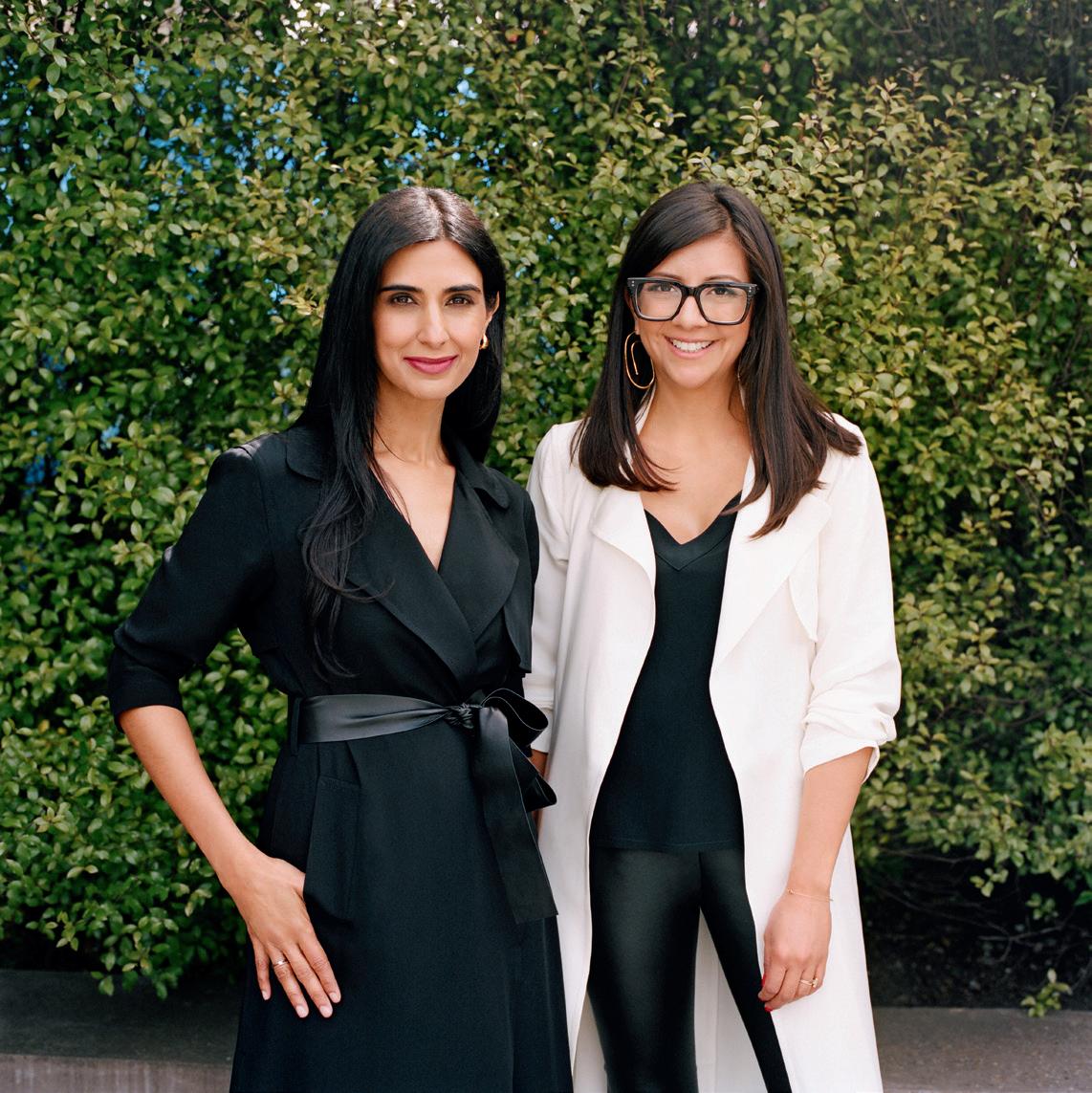



As consumers, we also play a crucial role in shaping the fashion industry. Embracing sustainable fashion means making mindful choices, opting for quality over quantity, and supporting brands prioritizing ethics and environmental responsibility. The designers we love are helping us find a way.




Cuyana’s Shilpa says, “We view this as a collective journey, not a destination. In fact, to us, the term “sustainable fashion” can be an oxymoron, as it is not possible to produce clothing without impacting the environment. We aim to encourage collaborative and open dialogue around this incredibly nuanced issue as we each take one step at a time to do better for our planet. When tackling a challenge of this magnitude, it’s best for us to band together.”


The traditional TV world we all grew up with is gone, but we may just be looking at the new golden age of TV.
BY JORDAN GREENEThe TV world of our formative years is no more. The adoption of streaming platforms continues to encroach on the monopoly that broadcast and cable networks have had on U.S. consumers for nearly a century. This digital invasion has even forced the renaming of the legacy platforms to now be collectively referred to as “linear TV.” Meanwhile, connected TV (CTV) has finally hit its stride, and massive investments by technology and media giants over the past few years ensure there is no going back.
U.S. consumers now spend 36.4% of their viewing time watching streaming services, per Nielsen’s “The Gauge” May 2023 measurement. That is up nearly 4.5% of viewing time year-over-year, while cable TV was down 5.4% and broadcast down 1.8%. CTV incessantly eats away at the linear platforms’ share of consumers’ time.
To maintain their foothold, broadcast and cable rely heavily on live sports, exemplified by the dominance of the NFL. Last year, 24 of the top 27 most-viewed broadcasts were NFL games (88%), with eight of these in the top ten. The top original content on linear TV came in at number 32, with the “Yellowstone” season finale on Paramount’s cable network.
The influence of the NFL on the American consumer is undeniable, and now even those games are shifting to streaming. Amazon debuted its exclusive “Thursday Night Football” on Prime Video and Twitch last fall, with no linear broadcasts (except simulcast in local markets). And YouTube invested $2 billion annually for the exclusive rights to air “NFL Sunday Ticket.” Live sports represents a battlefield for viewer attention, and with more experimentation, strategic audacity, and massive budgets, CTV’s power will likely increase here as well.
The snowballing momentum of CTV can be traced to several key factors:
First, there has been a normalization of streaming platforms built directly into smart TVs and cable boxes and in external devices from Roku, Amazon, Apple, Google, and video gaming systems. This proliferation has weaved a connected TV audience of over 230 million viewers, according to eMarketer.
Next, media companies created apps to be navigated via remote controls and invested heavily to ensure they were available to audiences across many devices.
Media companies populate their services with massive amounts of purchased, original, and live content, spending billions of dollars on rights and production. Publishers organize their content for consumers and sell them in several different models:
Subscription
Fees paid monthly/annually to the provider for access
Publishers: Netflix, Disney+, Max, Amazon Prime Video, Apple TV+
Advertising-based Video on Demand (AVOD)
“Free” content in exchange for consumers watching video ads, just like linear TV
Publishers: Peacock (owned by Comcast), FreeVee (owned by Amazon), Hulu (owned by Disney), and apps from linear TV networks
Free Ad-Supported TV (FAST)
The digital equivalent of basic cable with hundreds of channels available inside one app, including customcreated channels. These platforms also present ads for monetization.
Publishers: Pluto (owned by Paramount), Tubi (owned by Fox), Xumo (owned by Comcast), Samsung TV+
Online Hybrids
Platforms that migrated from other digital media, such as mobile phones and computers, to the more giant TV screens
Publishers: YouTube, Twitch (owned by Amazon), Facebook Watch
And to make it more complicated, publishers are now offering options outside of their original models. Subscription services provide discounted price plans with ad support. AVOD platforms offer monthly subscription fees to remove or reduce ads. Both groups are experimenting with their own FAST-style offers, and YouTube continues to be an anomaly in its own right that doesn’t quite fit into categories with other streaming providers.
During the pandemic, Americans stuck inside their houses looking for entertainment fueled the explosive growth of CTV adoption. Disney+ met its fiveyear subscriber growth goal in roughly five months. HBO Max (since renamed “Max”) debuted and aired movies initially intended for theaters. And Netflix continued its dominance as a go-to for streaming shows and movies.
Apple invested in original programming and sports (Major League Baseball). Amazon further invested across hardware and original content and bought MGM to provide itself with a content catalog, including the James Bond movies. Google’s approach emphasized Chromecast devices and YouTube content, and now YouTube TV is a direct competitor to traditional cable systems.
Altogether, we watched the evolution of a completely new paradigm of what we now call TV, where consumers have massive amounts of choice across highly advanced digital platforms.
Whereas subscription services increase revenue one consumer at a time, ad-supported models are open to large buckets of advertising dollars. With overall TV ad spending estimated by eMarketer at $67 billion in 2022, it is no surprise that Disney+, Max, and Netflix offer free-with-ads options.
The digital nature of CTV enables highly effective, scalable advertising, potentially even more so than with mobile phones and computers. Connected TV viewers create data signals with their watching and browsing behavior that advertisers use for targeted marketing. Further, CTV targeting can incorporate data from phones and computers to create a more complete picture of the consumer.
Consumers consistently accept the value exchange of “free” content for watching a few minutes of advertising per hour. According to a study by Amazon, 68% of CTV audiences are comfortable with this exchange, and 40% have a likelihood to make purchasing decisions based on the increasingly targeted ads.
This is an advertiser’s dream: advanced, accurate targeting to a receptive audience. Further, most CTV advertising is unskippable—just like linear TV. This lets the ad buyer rely on their experience in traditional TV with massively amped-up opportunities and powerful data analytics capabilities.
In response to this invasion, linear TV companies are trying to protect all fronts. Collectively, linear TV still pro-
vides advertisers the most significant “reach” to consumers of any media platform, a virtue that TV network sales reps consistently extol. Additionally, linear is still where 94.2% of all live viewing occurs. This is why news and sports are so critical for linear TV. ION, a TV network known for bingeable procedural dramas and the Scripps Spelling Bee, recently acquired the rights to air WNBA games on Friday nights.
Linear TV also has the advantage of familiarity to advertisers. They are exploring the new CTV world but still rely on the comfort level of placing ads with their old friends, broadcast and cable.
New can be unsettling. CTV is audience-based at its core, partially antithetical to traditional TV ad buyers, who are used to purchasing estimated demographics based on content and context. That is, they buy particular networks; they believe in specific shows. This provides linear TV with a short-term advantage as the current labyrinth of CTV ad tech makes showlevel data challenging for both targeting and reporting.
But linear TV is constrained and seems antiquated compared to CTV’s sheer possibilities. Linear is a single broadcast per channel, but CTV can stream multiple interactive simulcasts. Linear relies on other technologies, such as mobile phones, for response mechanisms to advertising, while CTV can provide shoppable ads with a remote control immediately linked to retailer accounts.
Likely not, or at least not anytime soon. CTV parallels the rise of online shopping in the late 1990s. Twenty-five years later, there remains room for both brick-and-mortar and online retailers. The most successful seamlessly incorporate both. CTV will take a similar path, except this convergence is happening faster.
With the massive amount of content available, the next race will be to increase relevancy via search, discoverability, and relevant advertising. The change is well underway, and we may just be looking at the new golden age of TV.
 BY SEÁN CAPTAIN
BY SEÁN CAPTAIN
The sustainable energy debate is like nested Russian dolls—progressing from consensus to ever-more conflict and uncertainty. At the outermost level, everyone (presumably) wants clean air and water, plentiful food, safety from natural disasters, and an overall pleasant planet. One level down is some dispute about what’s heating the climate, but overwhelming scientific research shows that heat-trapping pollutants like CO2 and methane play the lead role.
Dig deeper, though, and issues become murkier, with disputes about how much different energy technologies cost, how quickly we can transition to cleaner ones, who bears (and who should bear) the burden for these transitions, and whether (or to what extent) we may need to compromise by achieving less than a total cessation of global warming.
To understand the science, economics, and ethics, we interviewed six experts with diverse backgrounds and outlooks—from very bullish to highly cautious. And often, their stance differed depending on the topic and details. Twelve thorny dilemmas emerged from our conversations with Alessandra R. Carreon, manager of Carbon-Free Transportation at RMI; Sam Kimmins, director of energy at the Climate Group; Brigham A. McCown, director of the Hudson Institute Initiative on American Energy Security; professor Behnam Taebi, scientific director of the TU Delft Safety & Security Institute; Humayun Tai, co-leader of the McKinsey Global Energy and Materials practice; and Professor Eric D. Wachsman, director of the Maryland Energy Innovation Institute at the University of Maryland.
1. Even clean energy involves environmental harm. Midwestern residents may find land-based wind turbines (a prime green power source) to be a terrible eyesore. Native Americans are fighting plans for a vast lithium mine on sacred land. The conversion to more (ultimately cleaner) electric cars and households requires building more transmission lines through neighborhoods. Should these developments be prohibited from sensitive areas? What constitutes sensitivity, and who decides? Should locals be compensated? How much, and by whom?
2. Governments are setting very ambitious energy transformation goals. EPA emission targets would slash the percentage of gas and diesel vehicles by 2032. California has banned all internal combustion-engine cars after 2035. Are such aggressive targets justifiable, even if they ultimately slide, because they push innovation as hard and fast as possible? Does humanity’s track record for rapid development (the race to the Moon, the growth of the internet) prove that, when pushed, technology and business always find a way?
3. Electric vehicles provide different levels of benefit and burden depending on circumstances. They work best in temperate climates, for moderate commutes, with convenient home charging and low electricity prices. They are worse in cold temperatures (requiring more power for heating and limiting battery charging), for long drives, and for poorer people or cramped urban dwellers without home chargers. Electric grid capacity also varies by area. Should mandates for the switch to EVs (or subsidies to help)
While the goal of a cooler planet is clear, the trade-offs—and even some facts—are hotly contested. Six experts frame the debate.
vary by location, income, or other circumstances to account for these inequities?
4. Though carbon-intensive in construction and fuel production, nuclear power plants produce less CO2 pollution over long lifetimes. And they provide plentiful, reliable “baseload” power to undergird variable renewable sources like solar and wind. But despite bestcase-scenario, wishful thinking from boosters, nuclear plants are expensive. They produce dangerous waste that lasts for millennia (with no long-term storage strategy in most countries) and are susceptible to rare but devastating accidents. Does the climate benefit outweigh these dangers and downsides?
5. Though electric service is nearly universal in most countries, almost a billion people in less developed nations go without it. Expanding access dramatically improves people’s lives with lighting, refrigeration, internet access, and better heating and cooling. But poorer countries rely on much dirty power, especially coal. While wealthier nations aggressively transition to low-carbon energy, should poorer countries be entitled to burn fossil fuels longer, maybe even growing their emissions, to improve living conditions?
6. Key minerals used in batteries and other clean-tech equipment— including lithium, nickel, cobalt, and manganese—often come from regions, like the Democratic Republic of Congo, with poor labor, human rights, and environmental standards. How much should (and can) consuming countries demand better conditions in producing countries? If consumers seek cleaner sources to replace these countries, will the economic hit to them be as bad or worse than the current environmental and human rights damage?
7. Switching to green power may entail complex, riskier technologies and logistics. The need for fossil fuel backup power could diminish with larger, interconnected grids that funnel clean power longer distances, but this requires a lot of coordination and cooperation between states, provinces, or even nations. Millions of EVs can provide a distributed source of battery backup for the grid, but this requires complex orchestration. Is the greater complexity and potential for breakdowns worth it to achieve a cleaner power grid?
8. Green-minded governments sometimes defy their citizens’ wishes. A new Pew survey found that only 31% of U.S. adults (including 48% of Democrats) support completely phasing out fossil fuels. And while 64% of Dems favor eliminating internal combustion vehicles by 2035, only 40 of all adults feel that way. Should democratic governments push policies that go against public wishes? What, if any, responsibility do they have to make their case to the public before proceeding?
9. Changing the energy mix shifts a country’s dependencies. The United States is the world’s largest oil and natural gas producer. But it relies heavily on China for solar cells and batteries. The US also depends on Africa and South America for cleantech minerals like nickel, cobalt, and lithium for batteries. Is the national security vulnerability of these foreign dependencies an acceptable tradeoff to reduce the national security threat of climate change?
10. Green-power subsidies often benefit the wealthy, such as expensive electric cars or pricey solar or heat-pump home upgrades. Is it fair for all taxpayers to subsidize higher-income citizens to hasten the green transition—even with downsides such as increased budget deficits, higher taxes, higher interest rates, and less money for social programs—which could disproportionately affect poorer people?
11. Technological change affects employment. Phasing out coal costs mining and power plant jobs. Simpler-built EVs require fewer autoworkers. Boosters tout retraining for green jobs, but jobretraining programs generally have a mixed record of success and may be more challenging for older workers. What should fund retraining: governments, green-power companies, carbonintensive companies, green energy taxes? If transition success is low, should displaced workers receive extended unemployment benefits? Should there be a universal basic income? Or is green displacement no more deserving of special measures than other free-market job losses?
12. Some potential green technologies are dirty in their current form. Hydrogen burns cleanly, but most is currently produced from natural gas (in an energy-intensive process). Some plants that capture carbon dioxide from the air require intense heat that only fossil fuels can currently provide. But green electricity may someday power those processes, or it may be possible to capture the carbon dioxide efficiently. Is it acceptable to promote polluting practices today if they can advance the technology and infrastructure for cleaner systems in the future?
“Green-power subsidies often benefit the wealthy, such as expensive electric cars or pricey solar or heat-pump home upgrades. Is it fair for all taxpayers to subsidize higher-income citizens to hasten the green transition?”

Join Aaron Ayscough, a renowned natural wine authority, on a journey through Paris’s 11th Arrondissement to discover this hip, young neighborhood brimming with some of the best natural wines in France.
BY JONATHAN RUSSO & DEBORAH GRAYSONAfter the third wine bar, all of them within a five-minute walk of each other, we are slightly buzzed. Not sure if it’s the excitement of touring the 11th Arrondissement’s cluster of natural wine outposts with one of the world’s foremost authorities, Aaron Ayscough, or the intoxicating effects of alcohol. Whichever, it is a beautiful early evening, and the streets and cafes are vibrating with the excitement that only a warm spring day after a long, gray winter can bring.
This neighborhood is hip and young; the businesses are small and independently owned. We’re told the rents are so low that people with dreams of owning a restaurant or bar can realize them.
Labeling Aaron an authority is not hyperbole. He is the author of The World of Natural Wine: What It is, Who Makes It, and Why It Matters, which was named one of the year’s best books on wine by both The New York Times and Bloomberg. His Substack newsletter, “Not Drinking Poison,” has thousands of subscribers, and he’s a regular contributor to the well-respected foodie newsletter, “Paris by Mouth.”
(His writing about wine and restaurants has also appeared in the Financial Times, The New York Times: T Magazine, and Wine Enthusiast.) Not to mention, that at a very young age, he was the head sommelier at Nancy Silverton’s Pizzeria Mozza in Los Angeles.

The briefest of primers. Natural wine is wine made without any intervention, from growing to bottling. Grapes grown without chemical treatments are pressed. Fermenting tricks (like cold soaking, which extracts color) are not allowed. At no time are sulfites permitted. This is how wine was made for millennia. Some are aged in wood, but most are not.
There is no regulatory definition of “natural wine,” so buyers must rely on the word of the vintner, importer, or retailer to know just how natural a given wine is.
Consumers must understand these wines are unconventional and often quirky. They seldom have the same flavor profile casual drinkers are familiar with. A naturally made gamay from the Beaujolais certainly won’t taste like a Georges Duboeuf selection. And, the wines change in the bottle, something that doesn’t faze Aaron. “You have to catch them on the right day. They’re capricious. But it’s easy to have a sense of humor because the prices are so low.”
But, while the buyer doesn’t have a high risk, the vintner does. Aaron observed, “Winemakers often compare making natural wine to performing a trapeze act without a net.”
This natural movement has been fermenting for decades. When we were in Paris twenty years ago, we visited La Cremerie, Pierre Jancou’s pioneering natural wine shop filled with bottles from small producers he knew personally, made from vineyards plowed only by horses and oxen. “I won’t drink wines that were exposed to diesel fumes,” he told us. While the majority of wine bars in Paris are still “conventional,” natural wine bars are not an ancillary or occasional experience. In any neighborhood, peering into a window to read the wine list reveals a world of natural options on offer. Aaron added, “Natural wine in Paris used to be a small subculture of traditional bistros and tiny wine shops. But the 2010s saw an explosion of natural wine bars, and they sort of usurped the role of cocktail bars for a young generation of Parisian drinkers.”
Today, entire shop windows are filled with natural wine offerings. There are hundreds of bottles on offer. Every region is represented, however, the famous ones like Bordeaux are underrepresented, as rebel winemakers have sought out the lesser-known (and cheaper) appellations and often obscure grape varietals. Each year brings additional innovative producers.
What’s behind this? Three thoughts come to mind:
1. The macro picture is, people want to be healthier. They demand purity in food and drink. Chemical intervention of all kinds is suspect—one never knows what harm it can cause.
2. The micro picture is that the French have always sought out culinary individuality. Buy-
ing from small, village-specific producers—whether it be cheese, bread, or a dozen other edible products—remains the French way. These tiny, dedicated winemakers continue that tradition. Aaron is convinced it comes through in the bottle, saying, “You can taste the low yield and the peacefulness of the fermentation.”
3. Returning to the land and working it naturally is attractive to many younger people whose families have deep roots in agriculture. Plus, there is also a strong desire to reduce their carbon footprint at every step of the process.
It seems to us that many winemakers are trying to one-up the others with purity in agricultural practices, vinification techniques, radical graphics, and nonexistent product information on the bottle.
As we’ve written before in this column, natural wines aren’t for everyone. Sometimes they seem more like political or ethical statements than appealing beverages. That said, there is a world of small producers making unique wines, often from lesserknown regions and grapes. It’s fun to experiment and discover the bottles that bring pleasure.
Head to Paris to share the experience with the knowledgeable locals.
We could fill an entire magazine with listings of all of Paris’ natural wine bars. However, Aaron loves and lives in the 11th, so he is quick to admit that the places he took us weren’t random. They’re his local favorites.
LIQUIDERIE CAVE. 9 RUE DES TROIS BORNES, 11TH. This tiny spot has a 3-seat bar and one lone table outside. The rest of the space was given over to bottles of beer, wine, and cider. Aaron thinks this place is a quintessential example of the natural wine movement.
DELICATESSEN PLACE. 7 RUE JEANPIERRE TIMBAUD, 11TH. A wine bar which serves wine by the glass and small plates of pre-prepared food. The offerings are simple and earthy. Next door is their wine shop (Delicatessen Cave) where bottles can be purchased and brought to the bar. Until we saw this, we wouldn’t have thought an entire store could be stocked to the rafters with nothing but natural wines.
LA CHAMBRE NOIRE, 82 RUE DE LA FOLIE MÉRICOURT, 11TH. The natural wine scene is happening here, in a space bustling with Parisian energy. (True, we arrived a little later in the evening.) People sat inside and out, and the edgy crowd was animated. Small plates are served. There’s an extensive display of natural wines lining the walls.
AUX DEUX AMIS, 45 RUE OBERKAMPF, 11TH. More a restaurant than a wine bar, this place is a retro coffee shop turned chic eatery, that esthetically wouldn’t be out of place in Palm Springs. The night we were there, the menu was more limited than usual, and this was the only stop on our outing where tourists were on display.
“Rebel winemakers have sought out the lesser-known (and cheaper) appellations and often obscure grape varietals. Each year brings additional innovative producers.”
For centuries, mechanical watches were revered as objects of privilege. They were indispensable tools reserved for the military or highly specialized professionals in certain disciplines. They were works of art worn by the most elite members of society. As the world evolved and things like basic timekeeping became more accessible to the population at large, watches became more and more mainstream. By the early 1900s, we had shifted from the pocket watch to the wristwatch. By the end of the Second World War, the wristwatch had become the essential accessory for every successful businessman and fashionable housewife. But this heyday for the mechanical wristwatch didn’t last long.
On Christmas Day in 1969, the Japanese watch brand, Seiko, introduced the world’s first quartz or battery-powered wristwatch, the Astron. The decade to follow would go down in infamy as the Quartz Crisis, a time when the mechanical watch industry was questioned and hundreds of years of tradition were at stake. Quartz watches are much easier to manufacture than mechanical watches. They’re more affordable, accurate, and durable. Plus, the futuristic-seeming technology had a certain allure. The mechanical watch industry immediately took a hit and struggled to compete with quartz’s price, precision, and fast production.
The watch industry experienced a similar dilemma around the turn of the 21st century with the smartwatch’s debut, which led watchmakers to once again question if these mechanical timekeepers could continue to remain relevant in a tech-centric world where they’re no longer needed for their functionality. In both instances, brands soon real-
ized that all types of watches could co-exist, serving unique purposes and meeting the needs of different consumers. Many watchmakers have expanded their catalogs to include quartz or smartwatch alternatives alongside their mechanical offerings.
Time and time again, the mechanical watch has persisted—it survived the Quartz Crisis and the dawn of the smartwatch. And now, the time has come for the watch industry to contend with its next challenge: artificial intelligence.
Like watches, AI has long been reserved for a select few—those in Ivy League universities’ math and science departments, the government, or other highly specialized industries. AI was founded as an academic discipline in 1956, but since then, it has experienced many waves of optimism and uncertainty. With the rise of the internet in the late 1990s and early 2000s, AI solidified its place in powering advanced web search engines like Google, voice recognition applications like Siri, and recommendation systems used by streaming platforms like Netflix. However, only recently has AI entered the mainstream with consumer-grade tools like ChatGPT and Dall-E. And they have taken off like wildfire. Within three months of its launch, ChatGPT hit 100 million users, making it the fastest-growing application in history. Now it’s clear AI is here to stay—so what does that mean for the watch industry?
The watch industry has already begun using AI in several applications, from watch production to identifying counterfeit timepieces. Some
brands have even started to integrate AI into their offerings.
Earlier this year, Citizen launched its first smartwatch powered by AI. In over 100 years of business, Citizen has built a reputation for its diverse offerings, from superior mechanical dive watches to its proprietary Eco-Drive technology—the first use of sunlight to power a battery-dependent watch. The brand also has a selection of smartwatches, including the new CZ, which uses advanced AI models built with IBM Watson Studio and research pioneered by NASA Ames Research Center to make the timepiece even smarter. In addition to placing phone calls and texts, the CV can track and predict your energy levels.
Still, when it comes to mechanical watches, manufacturing may seem like the most obvious use for AI. It starts at the supply chain level with the automation of operations like price arbitrage when buying certain materials. This extends to the actual production of watches, where AI-powered machines and robots can execute essential tasks within the manufacturing process with high levels of precision and efficiency. The result is improved quality control and faster production times. This may initially strike some fear for an industry that deeply values its artisans and craftsmen. However, using AI in key phases of the manufacturing process could help watchmakers focus their valuable time and attention on those more intricate and delicate tasks that must be done by hand.
In addition, counterfeits are one of the biggest challenges facing luxury industries today, particularly the watch industry. The global market for fake goods is estimated to be worth billions, with watches being one of the most replicated products, but AI has a solution. ORIGYN, a company based in Neuchatel, Switzerland, uses AI and machine learning—a subset of AI that involves training machines to learn from data—to help identify counterfeit timepieces. Think of their concept as facial recognition for watches. They use AI and machine learning
to analyze millions of reference points captured by a high-resolution camera. This information is then stored on a blockchain. To authenticate a watch, all that’s needed is the ORIGYN app and a smartphone with a camera. Once images are uploaded to ORIGYN’s database, it creates a history for the timepiece. Currently, ORIGYN is only available for brands and pre-owned resellers, not consumers, but it still marks a meaningful use of AI for the watch community.

Still the big, looming question is, when will we see watches fully or partially designed by AI? Initially, the thought of AI-designed timepieces elicits the same sense of panic as quartz watches or smartwatches. If we eliminate the artist from the art form, will we lose the spirit that these little mechanical marvels possess? Here, it’s key that designers harness the power of AI and work in tandem with it to explore new possibilities and push the bounds of innovation—AI must be used to
enhance the creative process rather than replace the creative process. Perhaps the use of AI in watch design merely looks like a testing ground to simulate and experiment with new design concepts or materials, and that’s precisely what watchmakers are doing.
In its current state, AI isn’t prepared to design a watch from the ground up. All you need is a quick Google search to show you some early attempts at watches generated from text prompts to see that they cross the line from audacious to unrealistic—the technology, at least for watch design, is far from perfect. However, using AI for creative ideation and conceptualization in watch design is a good place to start.
AI: FRIEND OR FOE?
Mechanical watches have existed in some form or fashion since the 1600s. Over almost 400 years, these little machines have, in some ways, changed very little. Essential components of the movement, like the mainspring, gear train, balance wheel,
and escapement, remain essential. The execution of complications like the chronograph or GMT stay true to their original form. At the same time, many advancements have been made, for instance, in applying new materials. A prime example is the use of silicon in place of metal for movement components like the escapement. The chronograph complication blueprint has remained unchanged, but chronographs have become more precise, measuring down to 1/10th of a second.
In nearly four centuries, mechanical watches have persisted through a great deal of development in the world: the invention of the telescope, the hot air balloon, the printing press, and the television. More importantly, the mechanical watch has prevailed through the technology age, from the quartz watch in the 1970s to the smartwatch in the 2000s. If the history of the mechanical watch shows us anything, it’s that these horological objects are in fact, timeless and have nothing but staying power no matter how this world evolves, even if that world includes artificial intelligence.

Once, the poets bound us. With their forceful stories and forthright charm, the Fireside Poets sewed a severed society together with rhyme and myth. Nineteenth Century families huddled in candlelight, united through civil war by the entrancing verses of Longfellow’s “Hiawatha” or Holmes’s “The Chambered Nautilus.”
Before telegrams or radio, before screens and scrolls, poetry pioneered virality. Once, poetry was pop culture.
Exactly 150 years after Whittier published “Snow-Bound,” Maggie Smith loosed her mere 17 lines upon the world. Her poem “Good Bones” became a talisman in a season of tragedy upon tragedy, a salve for a nation riven by violence, where the audacity of hope risked its total abdication. Smith’s marvel of form—her seeming simplicity masking her sonic sophistication—dropped a charge into our national waters, sounding our depths, reminding us of the irrepressible irrationality of imagining a better tomorrow.
Prophets and poets, as Smith certainly knows, over-index toward suffering. Truthtelling has its costs. As her poem traversed space and time, giving life and language to aching and adoring multitudes, her marriage was dying. Seven years later, she brings us a
document of its decline, its title taken from the final line of her viral poem. She offers her story as neither eulogization nor lamentation, neither investigation nor accusation. Rather, she offers it as any accomplished poet would: as material.
“Love is a kind of literature,” wrote Anatole Broyard. So is–maybe more so–love’s ending. “It is stunning, it is a moment like no other, / when one’s lover comes in and says I do not love you anymore,” writes Ann Carson. Upon that moment, and the bruising moments that follow, a literature of divorce has been constructed. The respective bookshelf is full— of novels (Katie Kitamura’s A Separation), memoirs (Rachel Cusk’s Aftermath), self-help scripts (Debbie Ford’s Spiritual Divorce). The shelf is elastic: Peruse the catalogs of major publishers, and one is certain to spot a new addition to the genre every season.
You’d be forgiven if you shelved Smith’s You Could Make This Place Beautiful alongside them. An easy miscue. If they’re any good, poets stop short of the inscrutable. And Smith has her misdirections at the ready. Her narrative is fragmented. Her timeline loops. Scenes triumph over chronology. On one page, she’s as insistent as late afternoon hunger. On another, she’s drifting and distant as a dream.

The effect is exactly as intended. For anyone who has experienced the dissolution of a family, the fractal nature of Smith’s book is home turf. Fond memories collide with future anxieties. Self-flagellation competes with fantasies of revenge. Fierce loyalty embraces endless adaptability. Swimming between such polarities, Smith freestyles. Sometimes she is a vulnerable guide, in search of her own self-deceptions and selfactualization. Sometimes she is a fearless truth-seeker, excavating the subterranean constructs of gender and power that formed the sandy foundations of her marriage. At all times she is a writer of extraordinary imagination, bringing all the force of her craft—the flaring motifs and abundance of metaphors, the meta-cognitive gestures, the fantastical diversions and sparkling images, the melting tenderness of childhood moments—to bear on one of the most excruciating experiences a human can endure.
A handful of her poems make cameos. “Good Bones” of course. And “Bride.” These moments deliver a kind of relief. From the ongoing trauma and fresh tragedies, from the feelings of alienation and abandonment. Smith’s poems function in this memoir just as they have in her life, and in ours: fragments shored against our ruin, jewels cut from collapse.
We were young once, and optimists. In the Middle East, revolutions bloomed in the fresh soil of social media, and we called it Spring. In Ukraine, a nation snapped free of the marionette’s strings, amplifying their stories online. We called it a Revolution of Dignity. In the U.S., an American presidential candidate aggregated a coalition through direct exchange, unmediated by cable networks and publishing gatekeepers. We used words like “Hope.”
Twitter facilitated it all. Until that unfortunate law of the internet age proved itself again: Virtues evaporate in the heat of the market until only vice remains. If Twitter once held the remarkable position as the world’s public square, under the leadership of Elon Musk it has been revealed to be less Athenian Acropolis and more Times Square circa 1981. Sure, the buskers are performing beautifully. But behind them a dumpster is in flames, racists are chanting on the corner, and someone is most certainly defecating at the bus stop.
It was inevitable that a competitor would smell bird blood. Mark Zuckerberg— who once proclaimed he would only eat meat that he killed himself—seems to want fowl on the menu. Having succeeded in sub-dividing 3 billion people into echo chambers, creating the world’s most effective disinformation platform, and supporting ethnic violence, Zuckerberg’s misery machine has a new offer: Threads, an app purpose-built to starve Twitter of its last remaining faithful.
“Move fast and break things” was Facebook’s original imperative. “Look around and steal whatever’s working” seems to be its latest mandate. As the saying goes, good artists borrow, great artists steal, and internet moguls copy/ paste. Starting with its name—lifted from a particularly popular user behavior on Twitter—Threads looks like Twitter, scrolls like Twitter, and generally works like Twitter. It may be more Twitter like than Twitter itself—now called “X.”
But it doesn’t chirp and float like Twitter. Or at least the way Twitter once
did. The Threads app itself is elegant. Familiar design, smooth edges, a pleasant experience one can’t really hate. As a child of Instagram, where masses gather to make museums of their lives, perfect lines were to be expected. But the stripped-down feature set doesn’t amount to “less is more” so much as just less. Notifications are confounding. Search is anemic. Direct messages are non-existent, as are hashtags and trending topics.
The naked nature of Threads isn’t a bug. It’s entirely in line with Meta’s philosophy. While surely additional features will emerge that mimic Twitter’s more delightful and serendipitous dynamics, the fundamental purpose of Threads is different, reflected in its design. Twitter began with earnestness and authenticity in search of profitability. Threads starts with profitability and power in search of authenticity.
It’s not searching very hard. A subproject of Instagram, Threads isn’t here to generate conversation and debate, to inform and delight and infuriate and shape discourse. By the project lead’s own admission, Threads isn’t here for substance.
A natural extension of a highly active user base on Instagram gave it rocket fuel upon launch. Keeping it in orbit will be ad dollars in need of a home—without the risk of their product showing up next to one of Musk’s free-speech misogynists. But will Threads work for the good of users, correcting past errors and bringing any measure of care for health and society?

Doubtful. We haven’t the luxury of choosing a platform run by a noble and benevolent visionary—or even by accidental, well-meaning developers like those that stumbled upon Twitter in the mid-aughts. Musk is chaos, Zuckerberg is a bore, and Threads will not bring spring to any revolutions. We’re too jaded for such hopes anyway. Dignity is beyond us.
My friend lost his identity. Not existentially. Merely criminally. For half a decade, his name and social security number were linked to an individual convicted of an impressive assortment of misdemeanors and felonies in a city more than 2,500 miles from his home, in a state he had never visited. His attempts to correct the error went as you might imagine. Government phone trees with dead branches. Municipal employees with neither competency nor care. Instructions that, when followed, were said to be incorrect. New instructions that netted the same. More than one voicemail blaming 2020 COVID restrictions for lack of staff—in 2023.
“We get the government we invent,” says Harvard Business School professor Mitchell Weiss. Do we, though? The labyrinthine systems lawyers are requited to navigate wouldn’t be the preference of any citizen. (Except perhaps the lawyers.) Opaque processes, indecipherable paperwork, impenetrable layers of desks and plexiglass, inscrutable codes and terms, and threatening notices. It’s hardly what any of us would design, much less what we deserve.
Undoubtedly, though, we get the government someone invented. Jennifer Pahlka has spent a career trying to make sure that someone, wherever they are, works inside a paradigm that builds for “user needs, not government needs.” To enable this work, she founded Code for America, a technology nonprofit aiming to make government services more accessible and efficient, and then went in-house, founding the United States Digital Service in the Obama administration. Said another way: She did not choose the easiest career. California’s supplemental nutrition assistance program. The support portal for the largest unemployment claims office in the country. New Jersey’s Department of Labor. The procurement process in the Department of Defense. Where most of us aim to spend as little time as possible, Pahlka has aimed to spend as much time as she can. “How,” she wonders, “did we get to 212 questions required to apply for food assistance?”

“Why,” she ponders, “are we still using a clunky Enterprise Service Bus to manage some of the most sophisticated satellite instruments in the world?” “Why can’t we,” she asks, again and again, “make government interfaces make sense to humans?”
The answers to these queries are neatly summarized in Pahlka’s generous assessment: “When systems or organizations do not work the way you think they should, it is not because the
people inside them are stupid or evil. It is because they are operating according to structures and incentives that aren’t obvious from the outside.” In such a system, Pahlka argues with compelling empathy, it’s not that the architects of the process or those managing last-mile delivery don’t want to be user-centered systems thinkers. It’s that the indulgences and necessities of the government milieu—the multitude of requirements that accrue across stakeholders and regulations, the competing interests, workarounds, boltons, and power struggles—render it rarely possible.
But not totally impossible. Pahlka’s title may lead with failure, but her pages are populated by the often-dashed but never-daunted backstage heroes who keep working to make government delivery better than it was, if infrequently as good as it could be. The stories deliver the unexpected: In a book positioned as an analysis of process and policy thickets, it’s the humans that cut through, bloodied but unbeaten, with lessons that can inform a better way of making government processes work for the humans they’re meant to serve.
The locus of Pahlka’s attention may be the gap between policy and implementation, a space filled by exasperating and staggering inefficiencies and waste. Still, her premier solution set doesn’t include the typical levers of politics: money, regulation, oversight. The solution is people. “The problem underlying our delivery failures,” she writes, “is the lack of skilled technologists within government who are empowered to make the necessary decisions.” Pahlka proves an effective recruiter, and one can only hope her call to service is heard through the din of start-up clusters. The shortcomings of government service delivery are felt everywhere, each contributing to our frightening faithlessness to the government’s first promise: to be an instrument of good.
Vint Cerf provides a glimpse into the future as we ask him about AI, the metaverse, and lessons from the origins of email.
BY JIM MCCANNVint Cerf, often referred to as one of the “Fathers of the Internet,” delves into the intriguing possibilities and challenges that lie ahead in the digital world. As someone who has influenced the trajectory of technology for more than four decades, Cerf’s perspective provides a glimpse into the evolving technological landscape and what the future may hold. His candid discussion with 1-800Flowers chairman Jim McCann sheds light on the necessity of embracing change, fostering collaboration, and exploring the potential of virtual space to mirror or even surpass the physical world.
Jim McCann: Vint, you’ve influenced our lives in so many ways. Now, please help us understand where the world is going. In terms of the metaverse, who will have a metaverse? Will there be several? Will there be standards?
Vint Cerf: If you want to become a consumer of someone else’s metaverse platform, one of the most important messages you can deliver is, “We’re not interested in your walled garden. We’re interested in being able to use more than one metaverse. We want standards to allow interoperation.” Just like what happened with electronic mail.

In 1983, I helped to develop MCI Mail as an electronic mail service. Electronic mail was invented way back in 1971 on the ARPANET, but I was thinking about how email was only available to people who were on the internet. But the whole thing was governmentoperated and government-owned.
And they said, “We don’t want any of that commercial traffic to go on the government-sponsored backbones.” And so around 1988, I asked for permission from the Federal Networking Council to connect the MCI Mail commercial mail system to the internet, and
they said, “Yes, for a year.”
So, we made the MCI connection, and then all the other email providers, like CompuServe, On Time, Telemail, and so on, said, “We want to be on too!” And the networking council said, “Okay.”
They discovered that because they were all connected to the internet, all their customers could talk to everybody else’s customers. Suddenly, the walled gardens were penetrated. That caused a revolution in interoperability because they adopted common standards.
And so that’s where we want to go with the metaverse; we want multiple systems to interwork with each other. So, you have the flexibility to explore anybody’s metaverse for the purpose of introducing products and services and serving your customers.
And Vint, who would be the governing body there?
That could turn out to be an industry consortium. It doesn’t necessarily have to be a government-sponsored thing. There are international organizations, like the International Standards Organization or the International Telecommunications Union. Those are true international organizations. But some are implicit, like the Internet Engineering Task Force, which the Internet Society runs.
thing?
There is absolutely! Google has worked hard to ensure that the energy we use to run the data centers comes from green sources. And we have two or three ways of doing that.
We buy 30-year contracts for wind power or 30-year contracts for solar power. We build solar panels on our data centers and other buildings to try to offset some of the energy use. We, if necessary, buy carbon contracts to offset whatever power generation is not green. We’re shooting for 2030 to be running 100% on green power.
What is Google working on that we might need to learn about? Autonomous vehicles?
Yes, so Waymo is our self-driving car under Alphabet. And I’ve taken a ride in a self-driving car; it ran exceptionally well.
I will tell you that some people will claim that making selfdriving cars is easy. But we have spent more than a decade working on it. It would be easy if the only vehicles on the road were selfdriving cars with algorithms. The problem is that there are humans that don’t behave rationally. So, figuring out how to deal with that is the hard part.
What percentage of the population of the Earth has access to the internet?
Sixty percent right now. So we still have a ways to go, which is why you still need evangelists.
We have to go out there, as I have been, to try and persuade governments to adopt policies that will encourage investment in the infrastructure needed to build the internet and all the training required to operate or use it. There’s still much work to be done
to make this reliably helpful for people, especially in the rural parts of the world, where infrastructure is hard to come by.
In terms of things we’re thinking about, how do we stay? Where should we put our intellectual and physical capital to serve people?
Two things immediately occurred to me. One of them is an earlier comment about the information that you have about your customers, from the companies that supply the products to the end users who order through 1-800 Flowers.
The more information you have about the way they work that you can analyze, the better off you’ll be to optimize the business. And now, as we start moving into this virtual environment, the idea of having virtual products that match in some way the physical ones feels like there’s a there, there. To give you a very concrete example, think of printed books and electronic books. People buy both, not just one or the other. So when you start thinking about the possibility of virtual products, in some way matching the physical ones, it is intriguing. The fact that virtual products are derived from software means that you can do things that you couldn’t do with the actual product, like evolve them in some way. Think about the possibility of a virtual bouquet that has a property that it changes over time depending on the seasons or the celebratory calendar, etc. Why not invent things like that and take advantage of the software base that gives them flexibility and mutability?
Vint, you’ve inspired us for about 40 years, and I look forward to the next 40. Thank you for spending time with us.
“The fact that virtual products are derived from software means that you can do things that you couldn’t do with the actual product, like evolve them in some way. Think about the possibility of a virtual bouquet that has a property that it changes over time depending on the seasons or the celebratory calendar.”
 BY KIRSTEN CLUTHE
BY KIRSTEN CLUTHE
When headed to Hawaii, many people fly into Honolulu and stay just long enough to board another flight or ferry to a different island. Its reputation as a crowded, touristy destination full of hi-rise hotels precedes this capital city. And it’s true—hotel towers, condos, and many visitors from all over the world are definitely in the mix. But if you know where to go, a few days in Honolulu can be the urban beach adventure you didn’t know you needed.


In the heart of Honolulu, Hawaii, nestled among swaying palm trees and facing the crystal-clear Pacific waters, lies the Halekulani Hotel. Its name, translating to “House Befitting Heaven,” is a promise that this hotel does not take lightly. From the moment you step into the grand open-air lobby, tranquility arrives through soft ocean breezes and a view of the Pacific.
A staff member described the hotel to me as a retreat amid Waikiki Beach’s hustle and bustle, and it’s true. Once inside Halekulani, the outside world disappears.
All guest rooms have ocean views and have been designed in the
hotel’s signature “seven shades of white,” which helps showcase Hawaii’s natural, vibrant beauty outside the sliding glass door. Touches of luxury are strewn throughout each room, from the soaking tubs and plush robes to the clever design of the closets (which open from both the bathroom and guest room), and the original, Hawaiianinspired scent of the bath products.
Waikiki is known for surfing, of course, and as the dawn breaks, you might consider your first immersive experience. With its origins in the Polynesian culture, surfing is more than just a sport in Hawaii. It’s a form of expressive storytelling, a dance with the ocean, and a dialogue with nature. Halekulani arranges surfing lessons on Waikiki Beach with professionals who will guide you from the correct positioning on the board to the moment you’re riding the wave.
Once you’ve satisfied your craving for adrenaline, you’ll need nourishment, and there’s nothing better than an actual “Hawaiian” pizza. Located in SALT at Our Kaka’ako, a mixed-use dining and retail space, Moku Kitchen offers a remarkable array of pizzas with unique toppings like kimchi and kalua pig; the aforementioned kalua pork with macadamia nut pesto, roasted pineapple, jalapeño, and green onion is like no Hawaiian pizza you have ever had. SALT is a 15-minute drive from Halekulani or a 50-minute walk.
For a different yet equally enticing experience, visit the Kō Hana Rum Distillery. A doable 30-minute ride from Halekulani, the journey to the distillery is as beautiful as the destination, taking you through the lush Hawaiian countryside with vistas of verdant mountains and sapphire waters. The distillery focuses on producing Agricole
rum, a variant made from fresh, pure sugarcane juice. Its tours explain the cultivation of heirloom Hawaiian sugarcane through to the distillation and aging of the rum. Tours end with a tasting session, where you sample various rums, each revealing a distinctive personality, layered with complex notes ranging from floral to fruity, to grassy and spicy. Kō Hana rum is available in limited quantity, which is one of the reasons that making the short trek to the distillery is an exceptional experience.
NatuRe, on the other hand, is a haven for health-conscious travelers. The restaurant takes pride in its plant-based menu, featuring dishes that are not only healthy but delectable. Championing the idea that food can be wholesome, nutritious, and exciting simultaneously, the menu presents a variety of dishes that celebrate Hawaii’s abundant produce, from colorful salads to hearty grain bowls. A 10-minute walk from the hotel, NatuRe is a peaceful, thoughtful dining experience tucked away on a side street. After dinner, walk around the corner to the Green Lady Cocktail Room, a sort of speakeasy hidden inside the White Sands hotel. The intimate ambiance is accented with vintage décor and dimmed lights, and you can sip on bespoke cocktails against a background of great jazz and hip hop. It opens at 8 pm, which is the best time to get a seat. Just ask the front desk for Room 8.
As the capital of Hawaii, Honolulu presents a rich heritage to explore. The native Hawaiian culture remains a fundamental and cherished aspect. The city embraces a colorful mosaic of Asian, Pacific Islander, European, and North American influences. The bustling streets are adorned with many ethnic eateries, cultural festivals, and diverse neighborhoods, all contributing to a captivating atmosphere.
It’s not surprising to learn that many excellent museums offer unique insights into the island’s history, art, and traditions. Among the best is the Bishop Museum, a premier institution dedicated to preserving and sharing Hawaiian and Pacific Island cultures. Its extensive collections of artifacts, traditional crafts, and exhibits on natural history provide visitors with a deep understanding of the region’s past.
Another must-visit is the Honolulu Museum of Art, featuring an impressive collection of Asian, European, and American creations. From ancient to contemporary masterpieces, the museum’s diverse exhibits cater to art enthusiasts. Moreover, its tranquil garden and courtyards provide a serene space for relaxation and contemplation. Halekulani offers complimentary access to HoMa for hotel guests.
Perhaps the most unique museum is Shangri La. Nestled on the shores of Diamond Head, the former home of American philanthropist and art collector Doris Duke has turned into a museum that offers an unparalleled glimpse into Middle Eastern and South Asian treasures. The meticulously curated collection features exquisite ceramics, dazzling textiles, intricate jewelry, and magnificent architectural elements, all showcasing the ingenuity and artistic mastery of the Islamic world. Halekulani offers a complimentary tour of Shangri La for hotel guests on the 2nd and 4th Wednesday of every month.
Every element of this journey, from the surfboard to the speakeasy, to the rum distillery and dining destinations, is more than an exploration. It’s an immersion into Honolulu’s unique culture, where nature’s splendor coexists with urban buzz, modernity is built upon rich traditions, and every experience is infused with the Hawaiian spirit. The next time you plan a trip to Hawaii, add a few days in Honolulu to deepen your appreciation for island life.
WHETHER
SEPTEMBER 19-21, 2023
NASHVILLE, TN

The Amplify worldwide conference series brings together numerous enthusiastic experts in the accounting, finance, ESG, audit, and risk fields, offering them a platform for sharing best practices, engaging in thought-stimulating sessions, and fostering connections among peers.
OCTOBER 14, 2023
LOS ANGELES, CA
IDEAS’ 8th annual conference will spotlight artificial intelligence and data science, featuring cutting-edge technology and expert discussions on industry trends, AI applications, open-source software, and machine learning.
BY MEDIASEPTEMBER 21-23, 2023
SEATTLE, WA
HRX is an innovative cardiovascular digital health conference, uniting diverse perspectives to drive technological advancements in heart health through collaboration among innovative experts and industry leaders.
OCTOBER 17-18, 2023
SAN FRANCISCO, CA
An entire day of TED Talks featuring innovators and pioneers delving into the profound consequences of the impending transformation brought about by artificial intelligence across our society, industries, institutions, communities, and cultures.
SEPTEMBER 24-25, 2023
ORLANDO, FL
This conference provides concise presentations where frontline university faculty and staff can exchange insights, strategies, creative solutions, and educational perspectives related to teaching in the age of artificial intelligence with fellow practitioners.
OCTOBER 24-25, 2023
SAN JOSE, CA
Bloom 23: Where Biodiversity
Meets the Bottom Line is the foremost event connecting professionals working on nature preservation and rejuvenation. By connecting more than 500 professionals, innovators, experts, and indigenous groups over two interactive days Bloom serves as a hub for building strategies for protecting and regenerating nature.
OCTOBER 2-3, 2023
NEW YORK, NY
Amid changing regulations, politics, fund issues, a $53 trillion opportunity, and economic volatility, investors and asset managers tackle complex ESG strategy evaluation alongside 250+ senior decision-makers. They plan to drive ESG investment progress through shared insights and solutions.
OCTOBER 31, 2023
NEW YORK, NY
TSAM (The Summit for Asset Management) will assemble top asset managers, advisors, and wealth professionals to address the changing technological and regulatory environment The event will be held at the Metropolitan Pavilion in NYC.
OCTOBER
OCTOBER 4-5, 2023
PHILADELPHIA, PA
Future Labs Live USA, the foremost event for laboratory professionals, showcases over 150 disruptors and visionary leaders from diverse disciplines. They are selected for their dynamic insights.
30 NOVEMBER12 DECEMBER 2023
UNITED ARAB EMIRATES
It has been seven years since the Paris Accord, and we are halfway to meeting our 2030 emissions goals. This annual gathering of worldwide delegates aims to address the persistent climate emergencies. The program will include the sector and topics raised by stakeholders, including areas like health, trade, relief, recovery, and peace.
YOU’RE INTERESTED IN FILM, MUSIC, ART, CLIMATE INNOVATION, OR FINANCE— HERE ARE WORTH’S TOP 10 FALL EVENTS TO ADD TO YOUR CALENDAR.
WORTH
Meet like-minded women and build meaningful connections. Learn from foremost experts, innovators and thought leaders. Become part of a group of women who believe in investing in women.
Women & Worth is an exclusive community for professional women that facilitates impactful connections and conversations, and provides access to groundbreaking business leaders, innovative female founders and industry experts.



We are on a mission to accelerate progress towards a more equitable economy, helping to close the gender gap when it comes to finances and funding for women. We want to help more women reach the C-suite and boardroom; build thriving enterprises; and have the confidence and resources to make decisions when it comes to investing.



